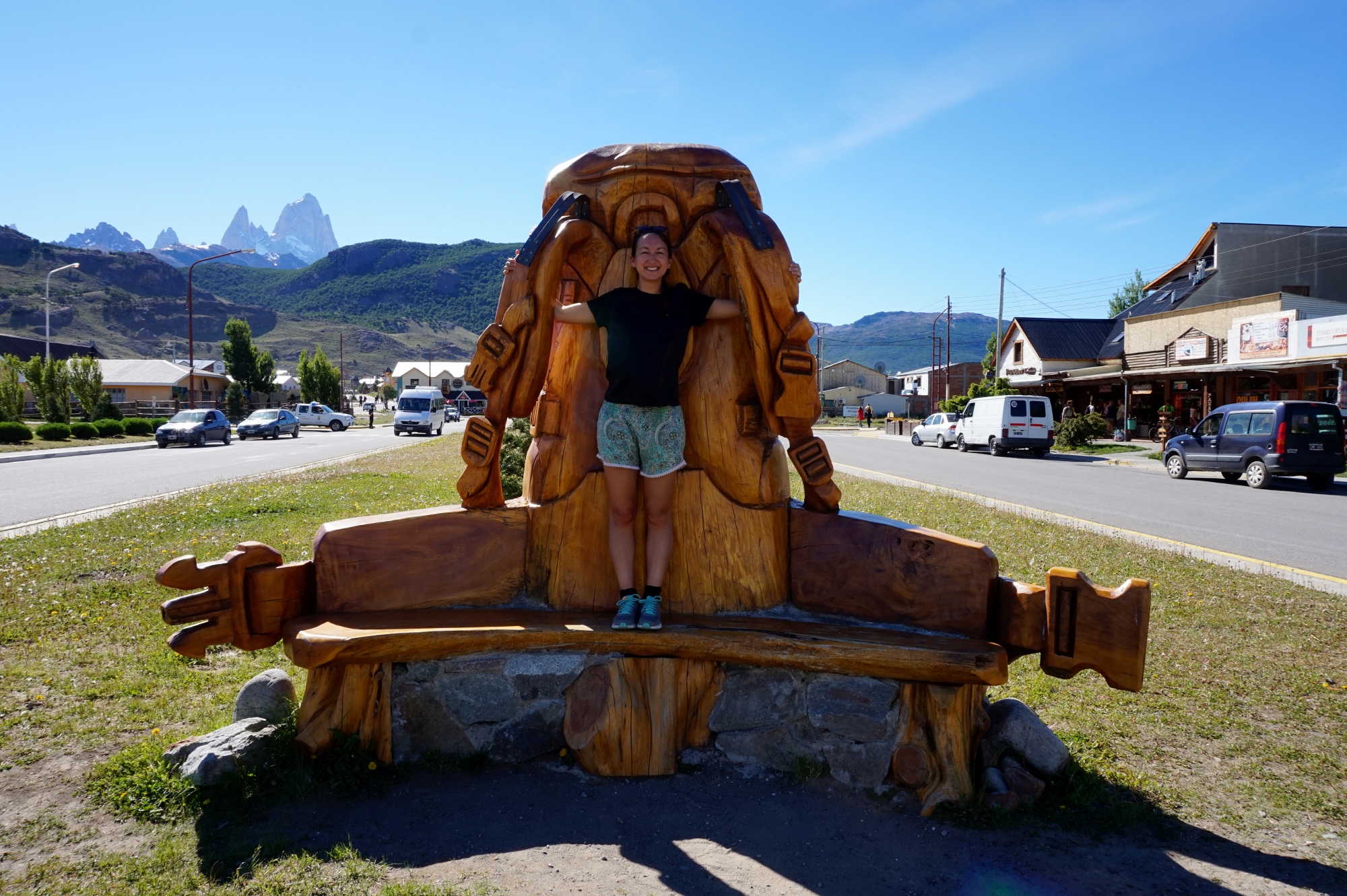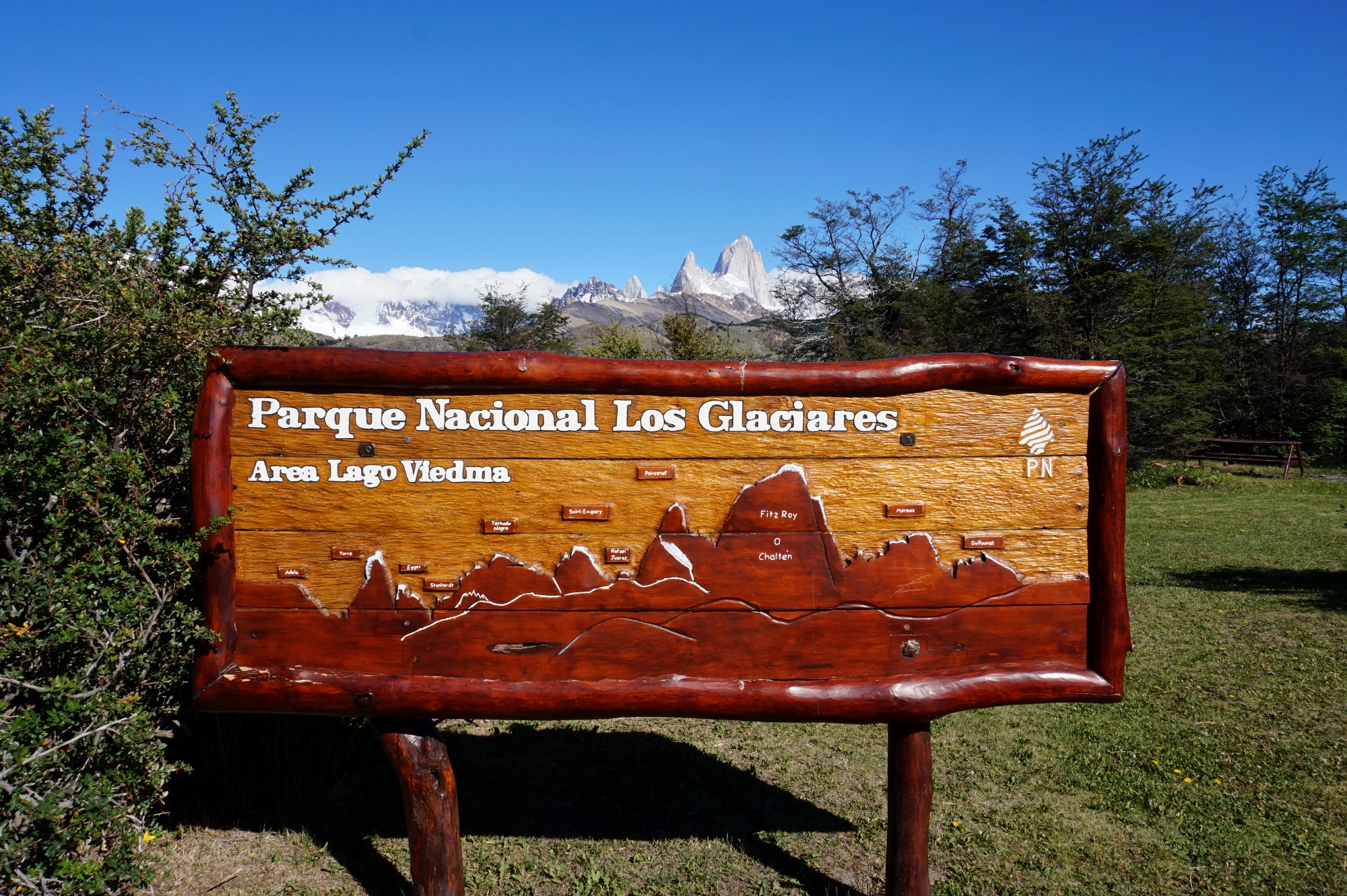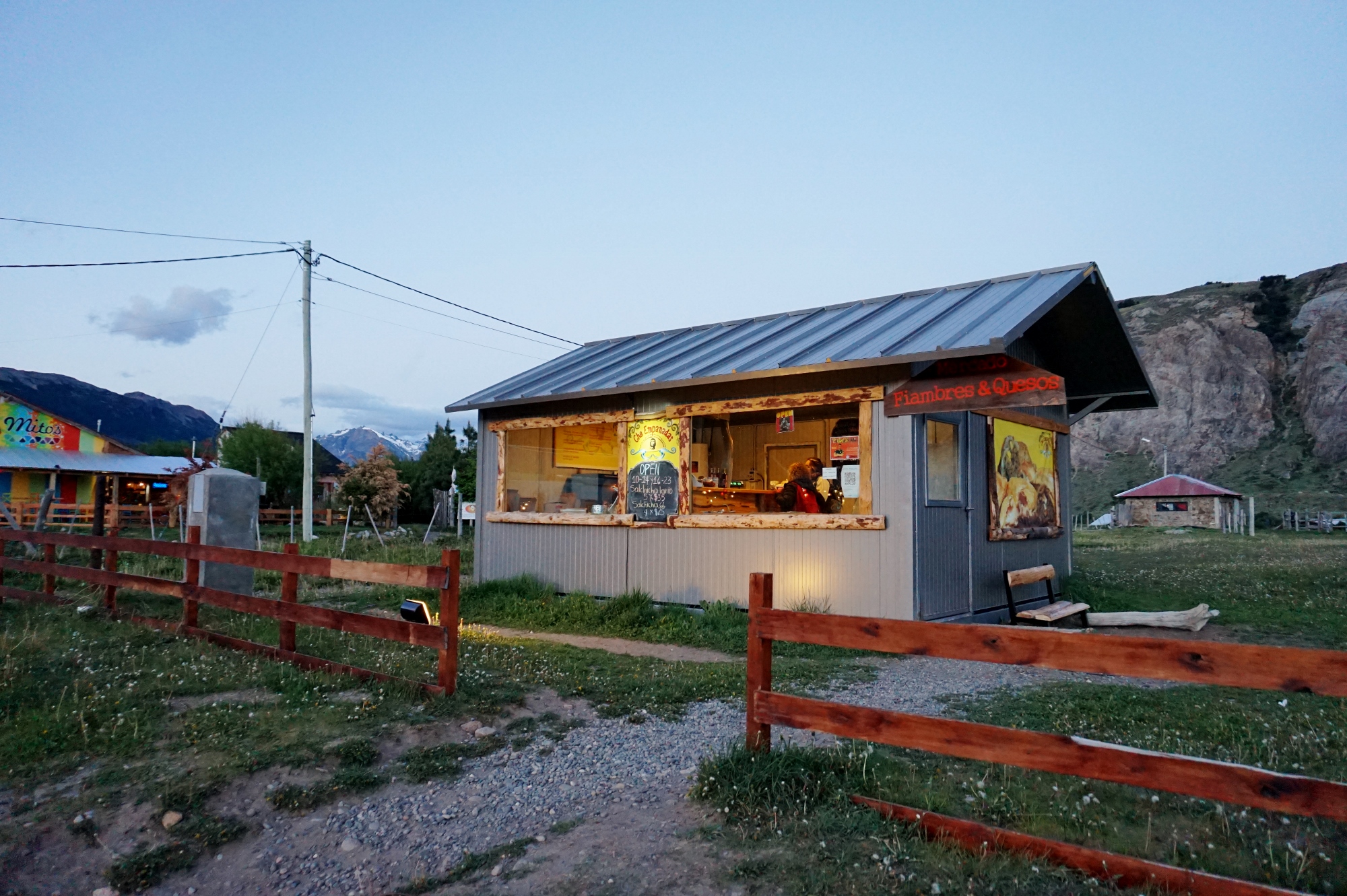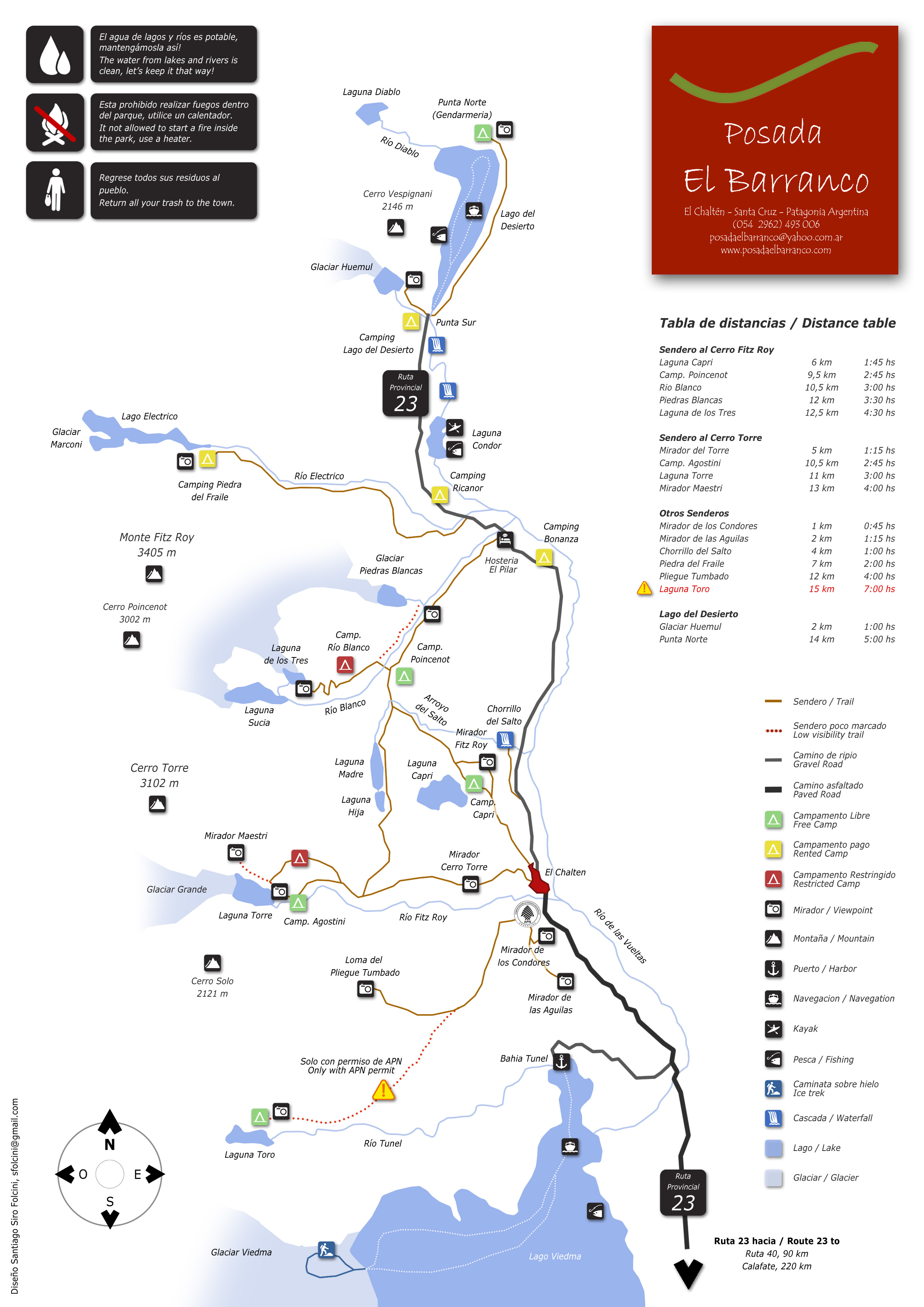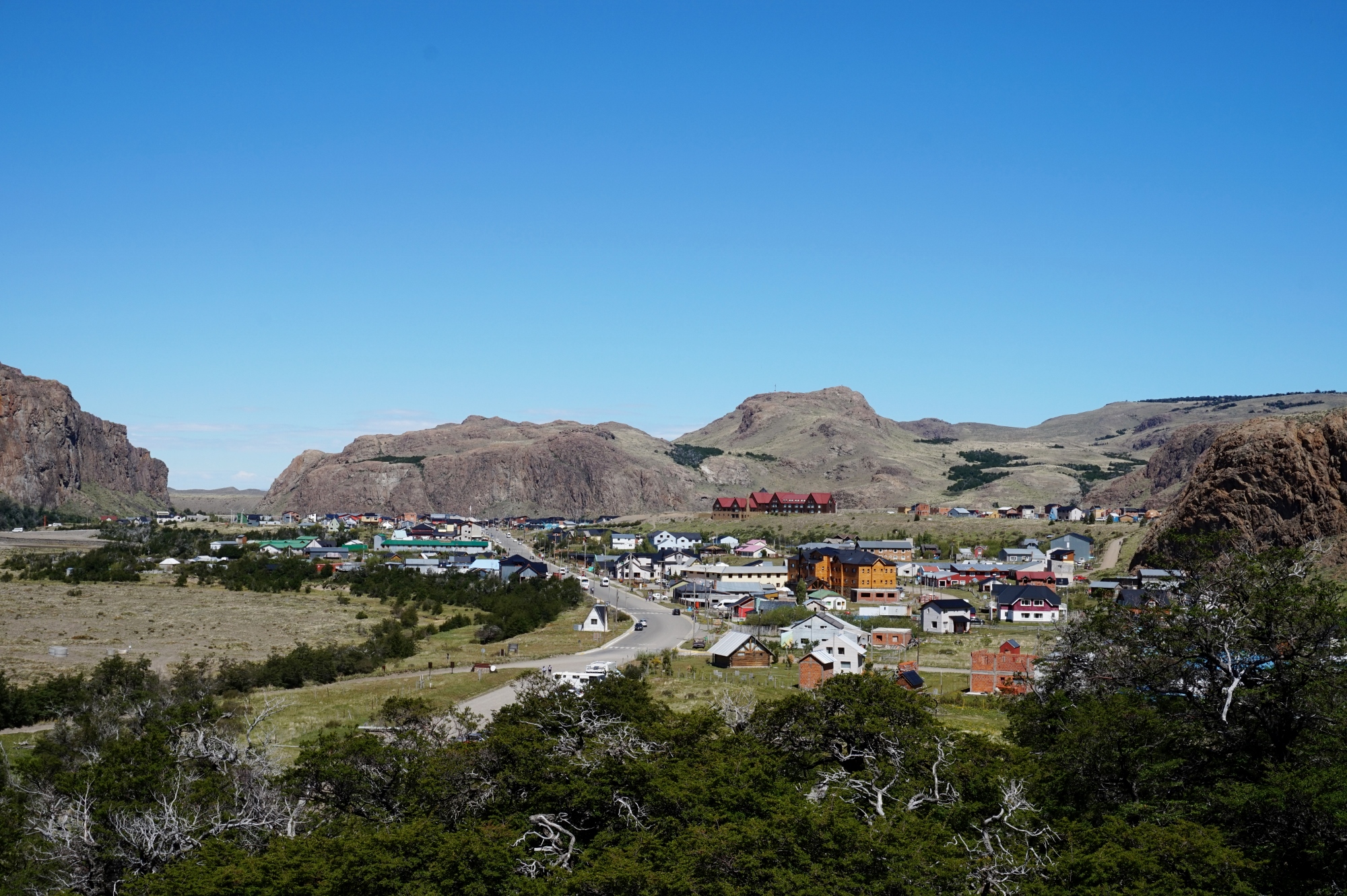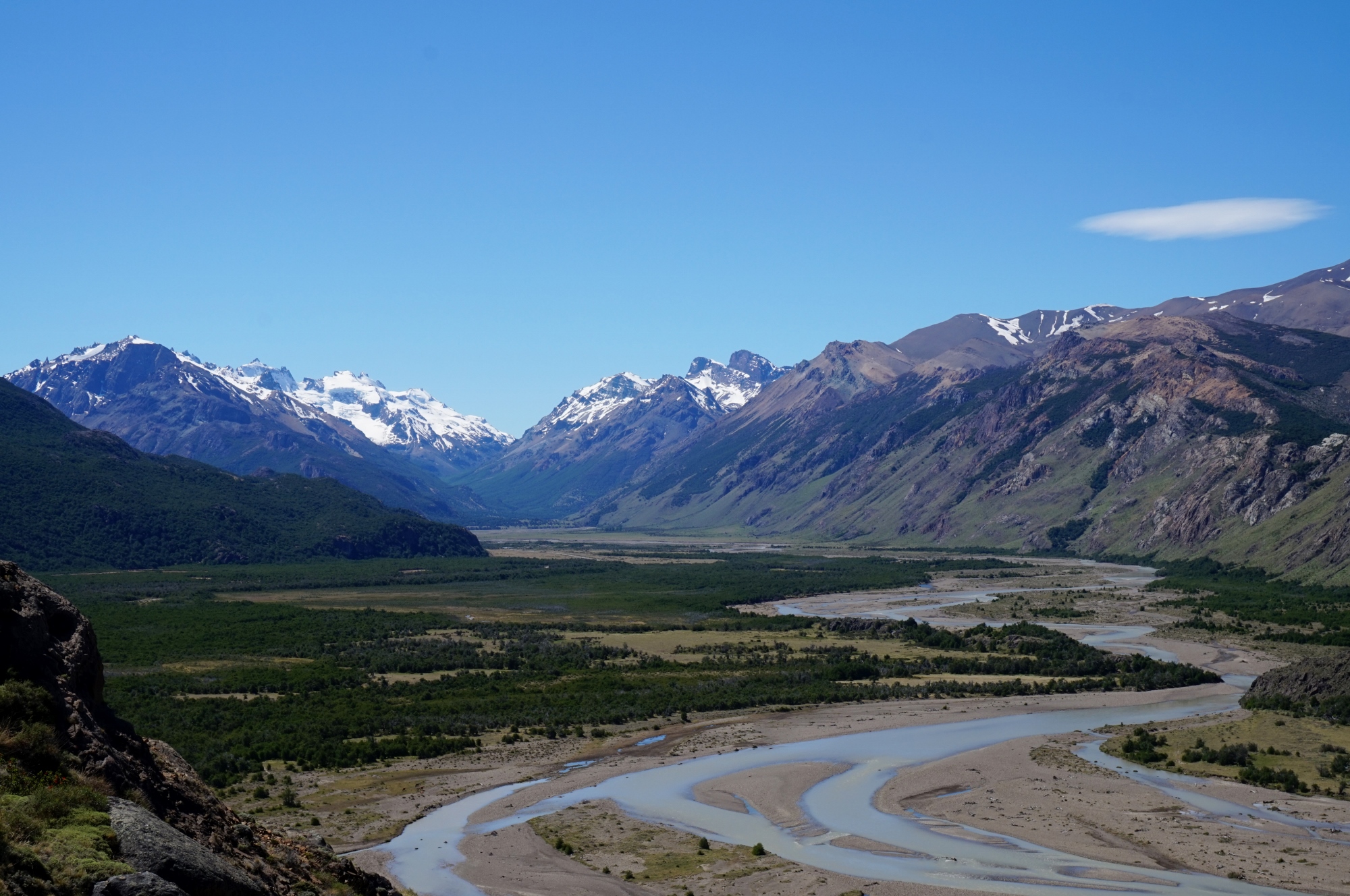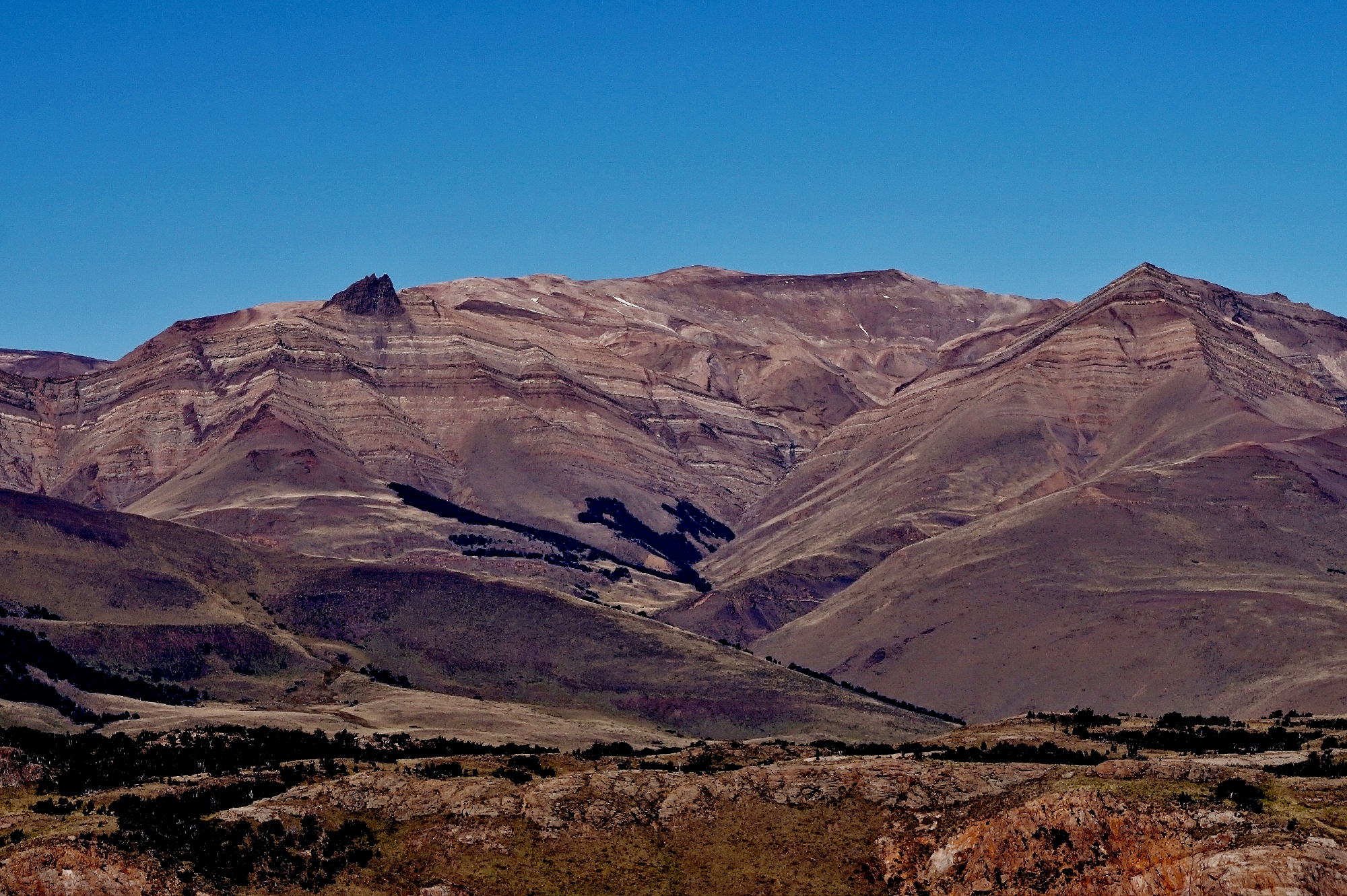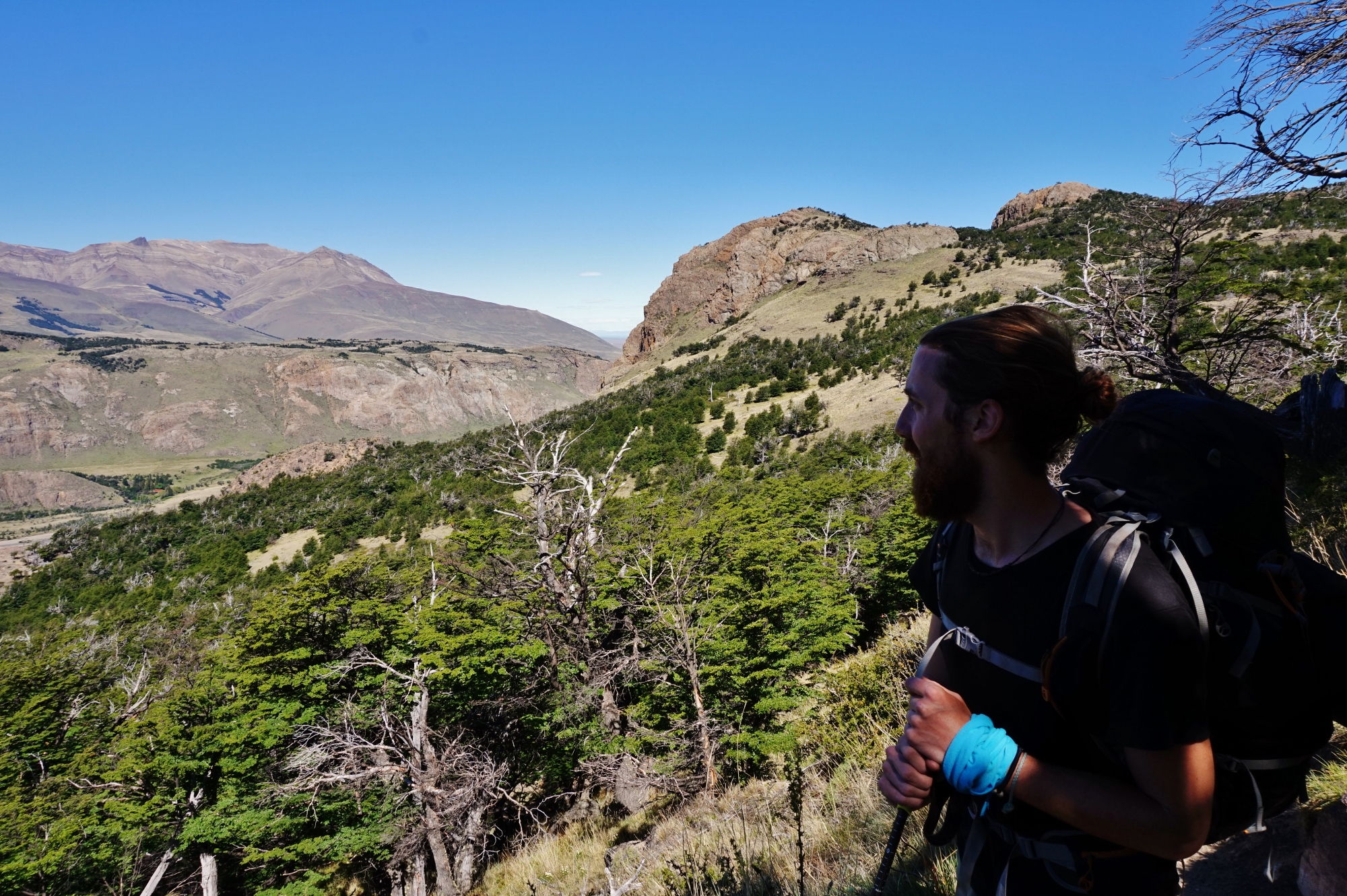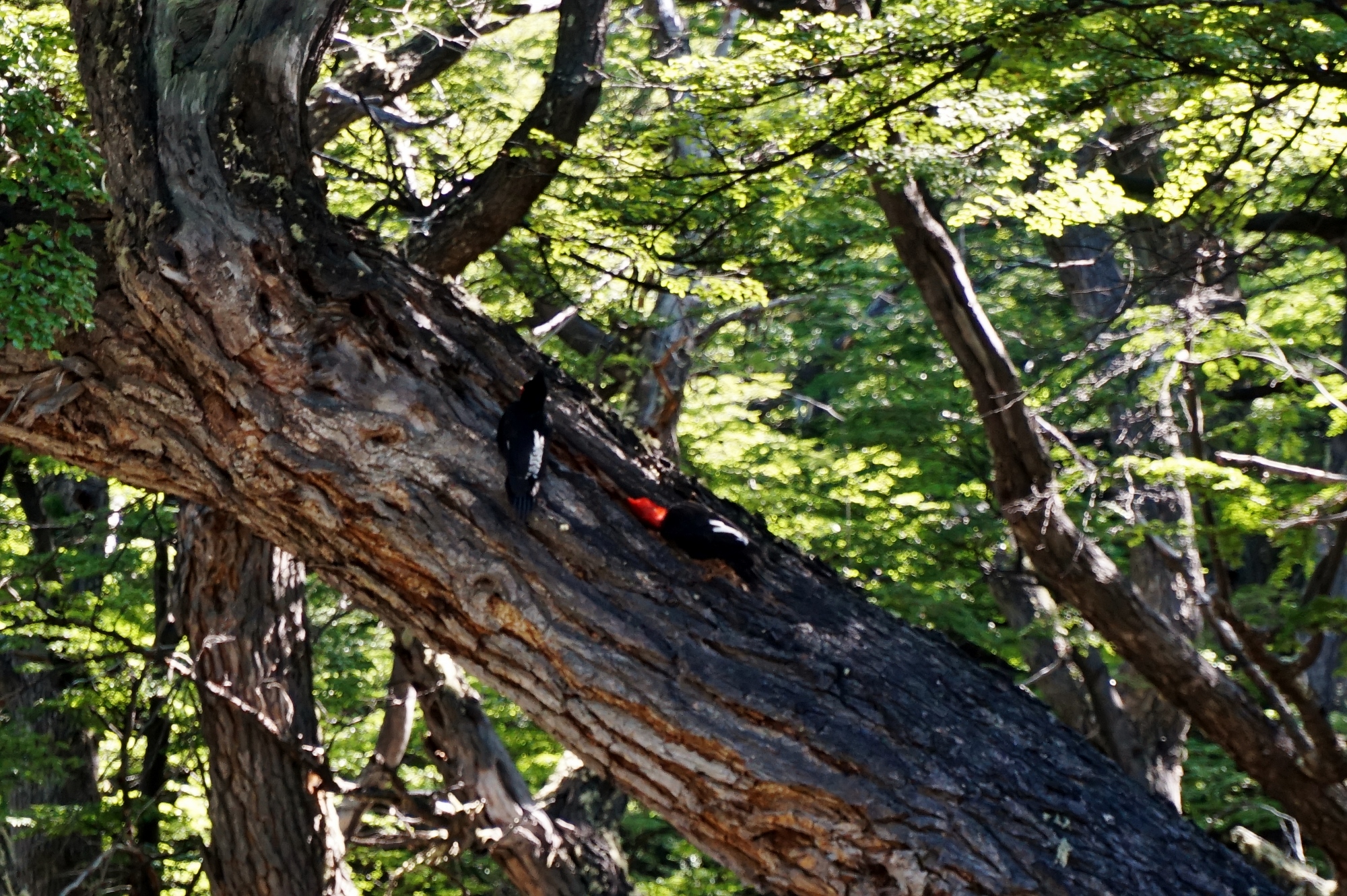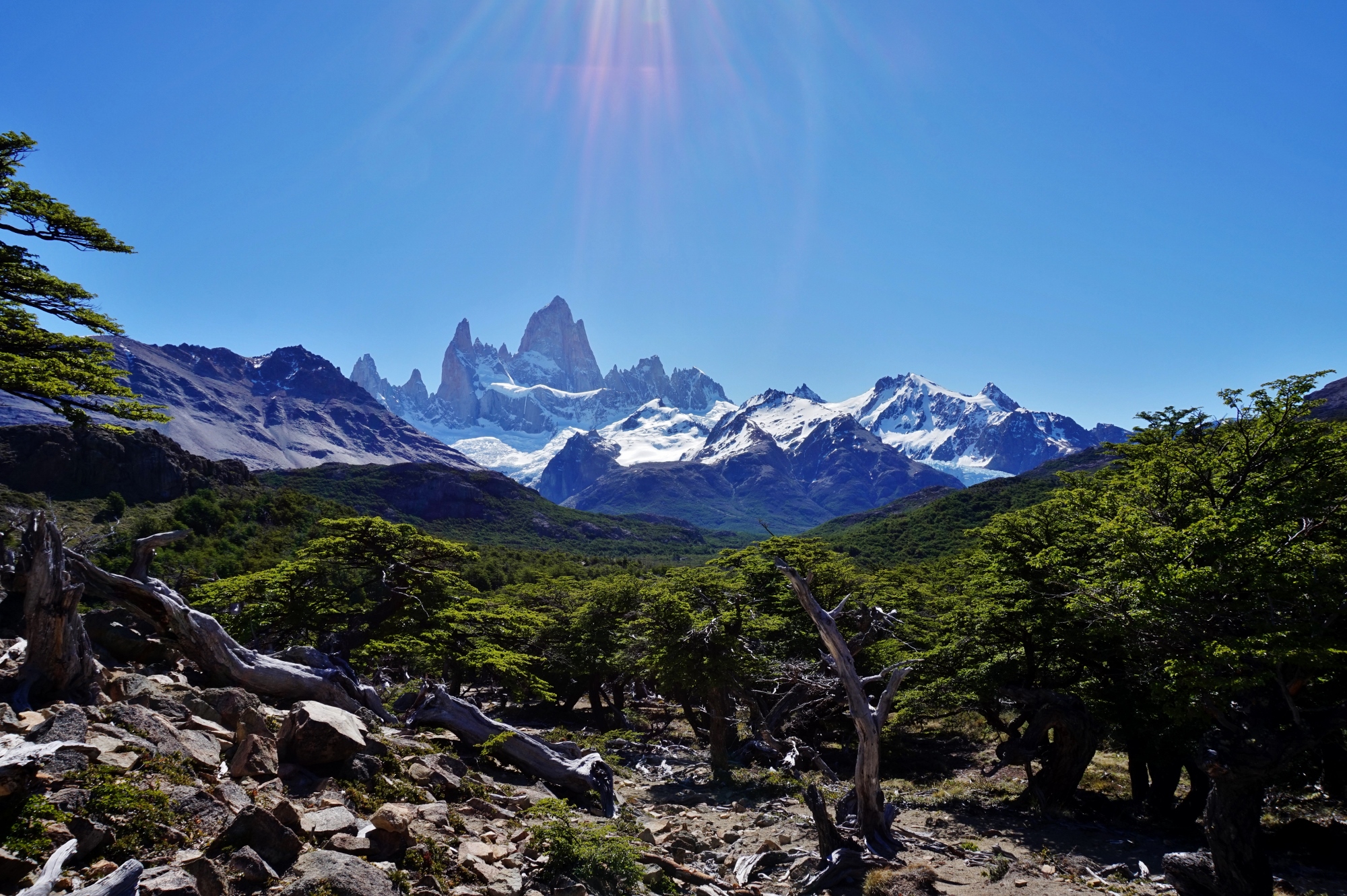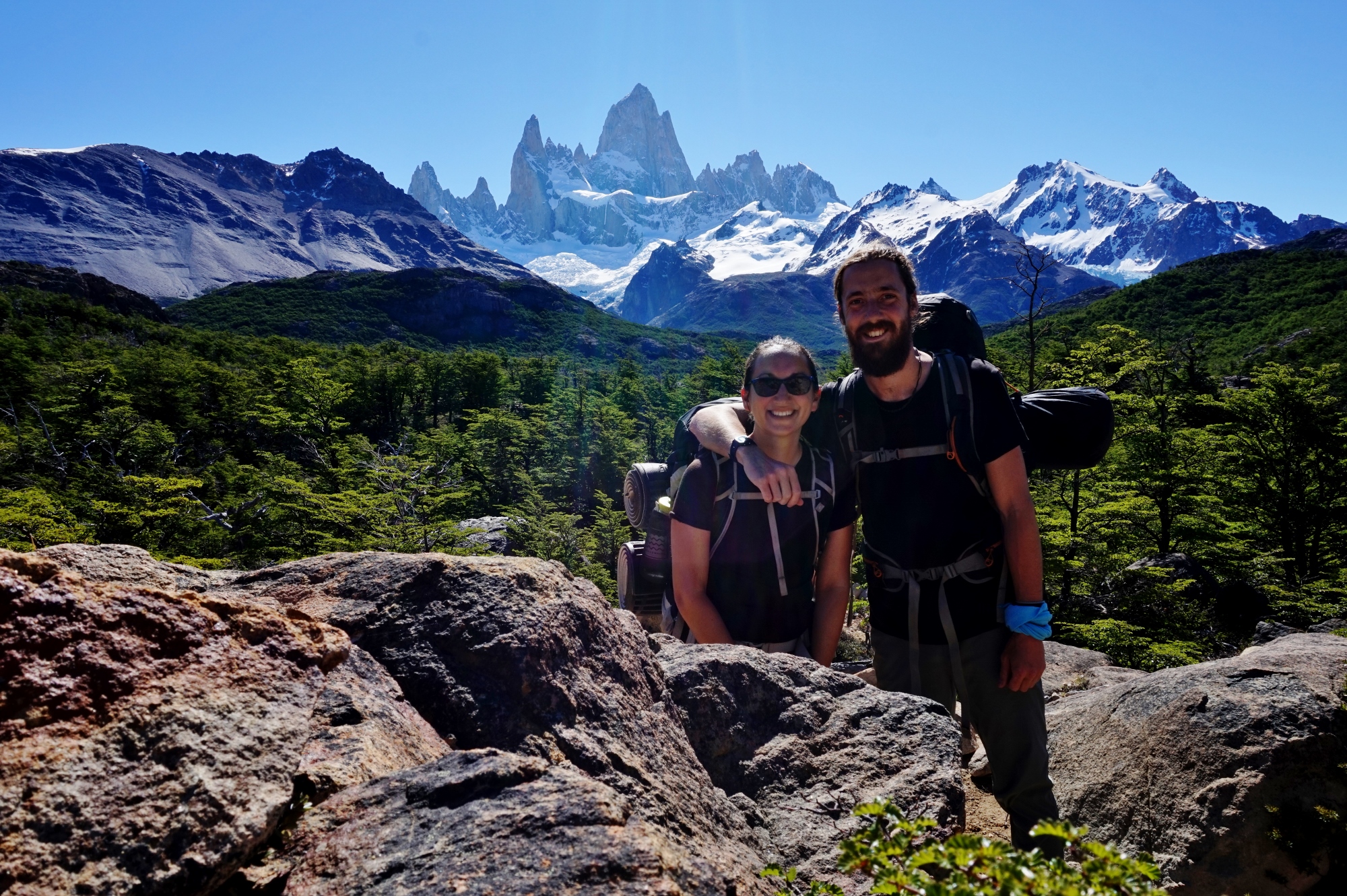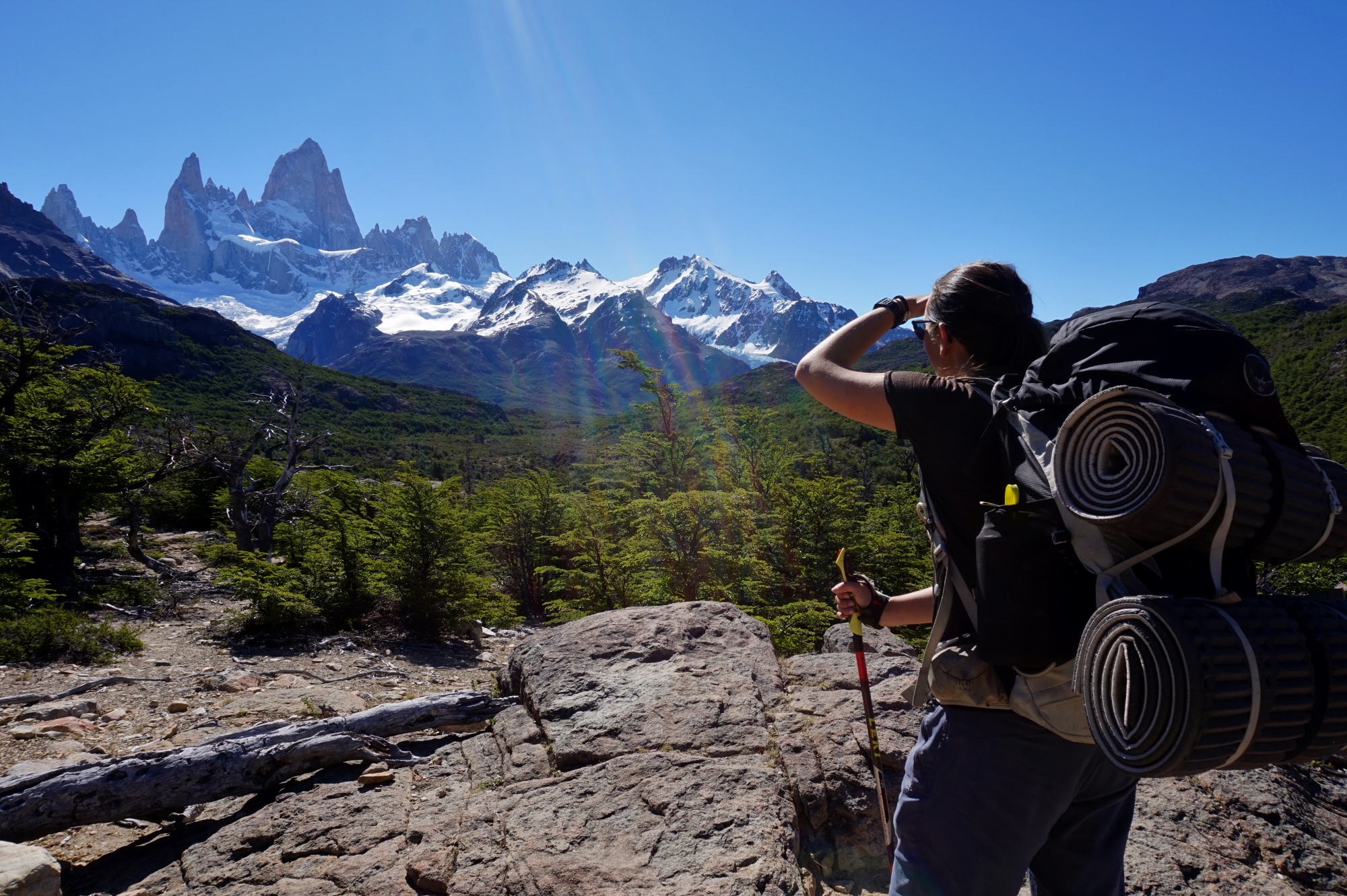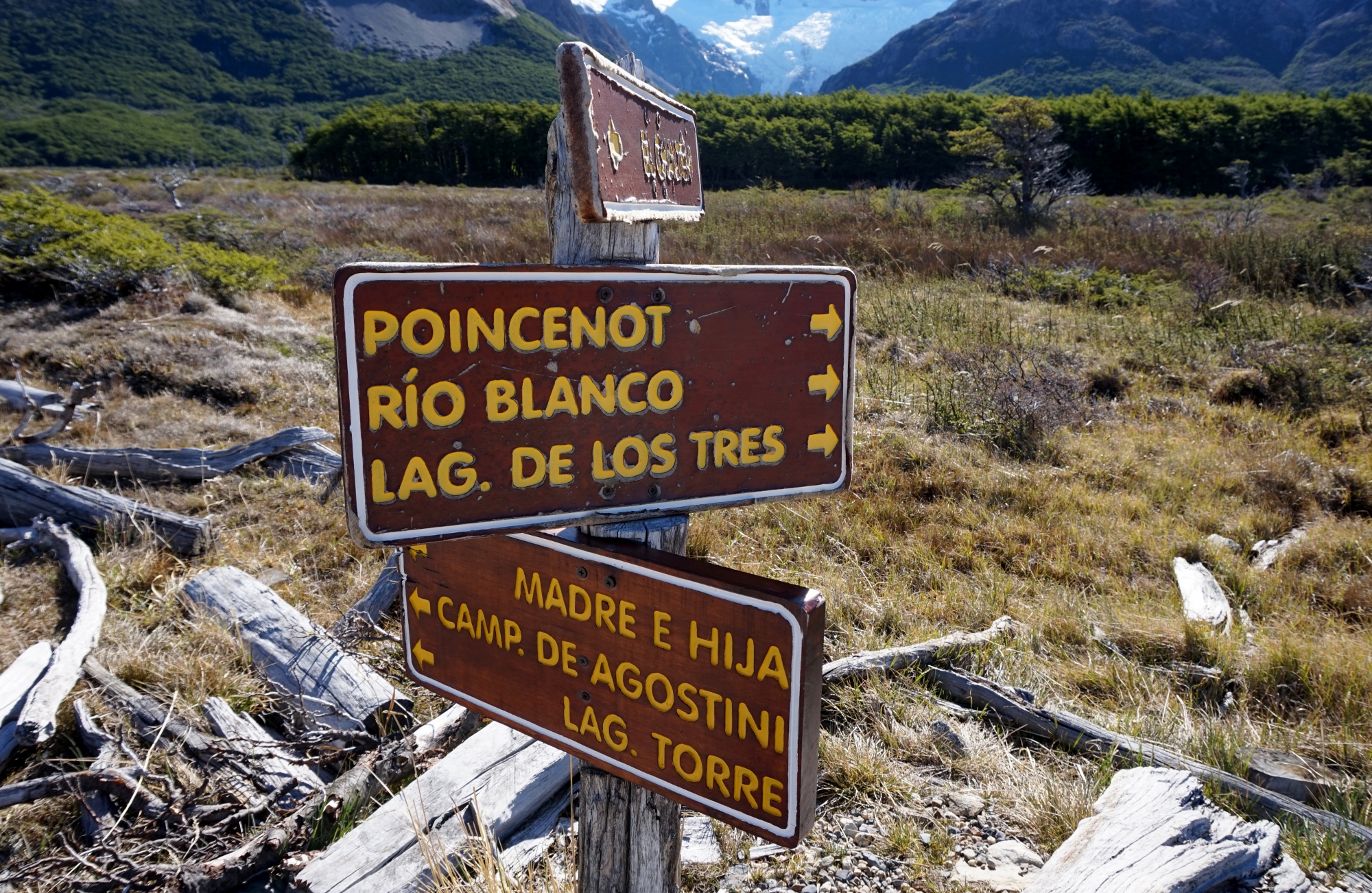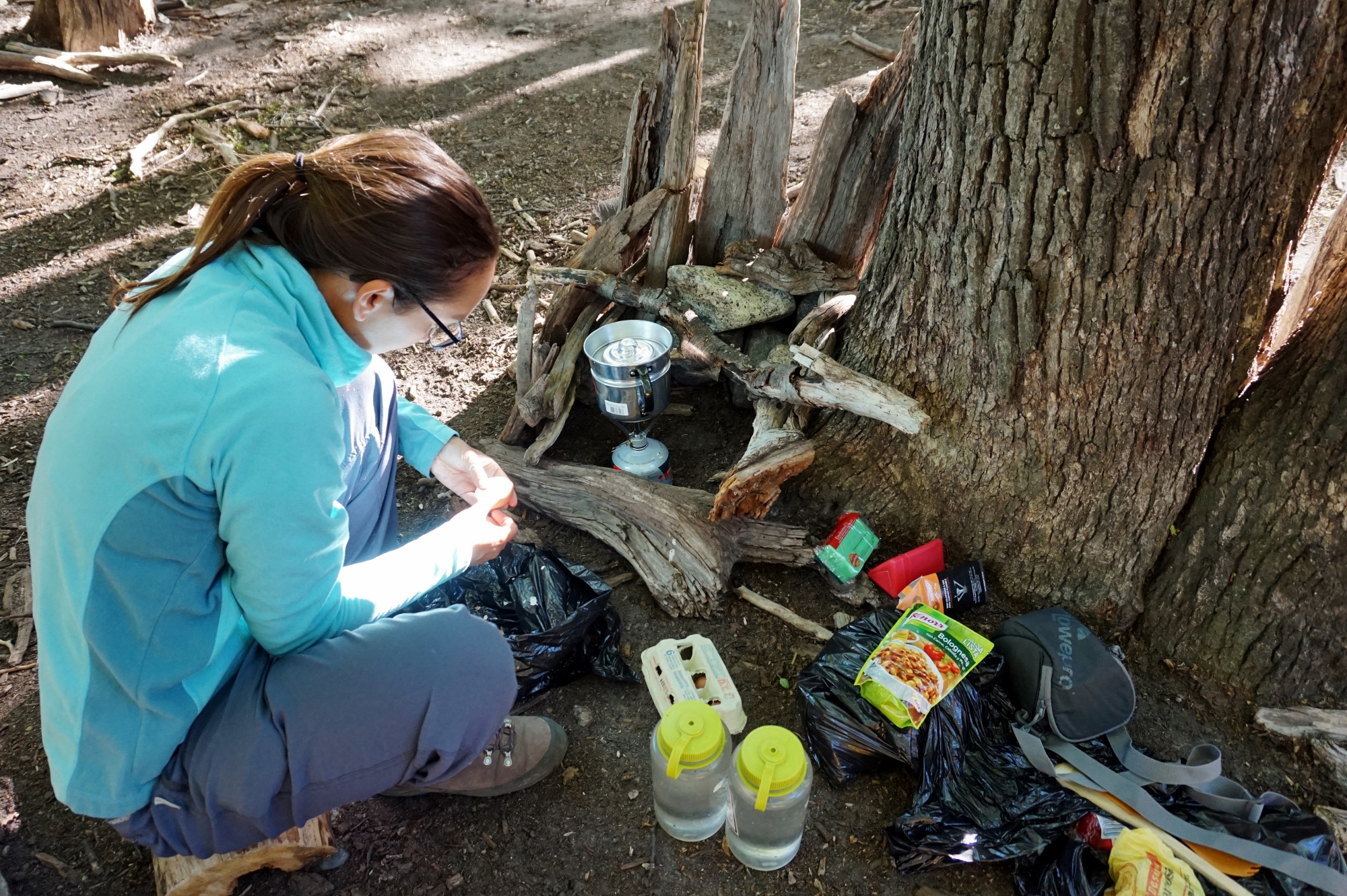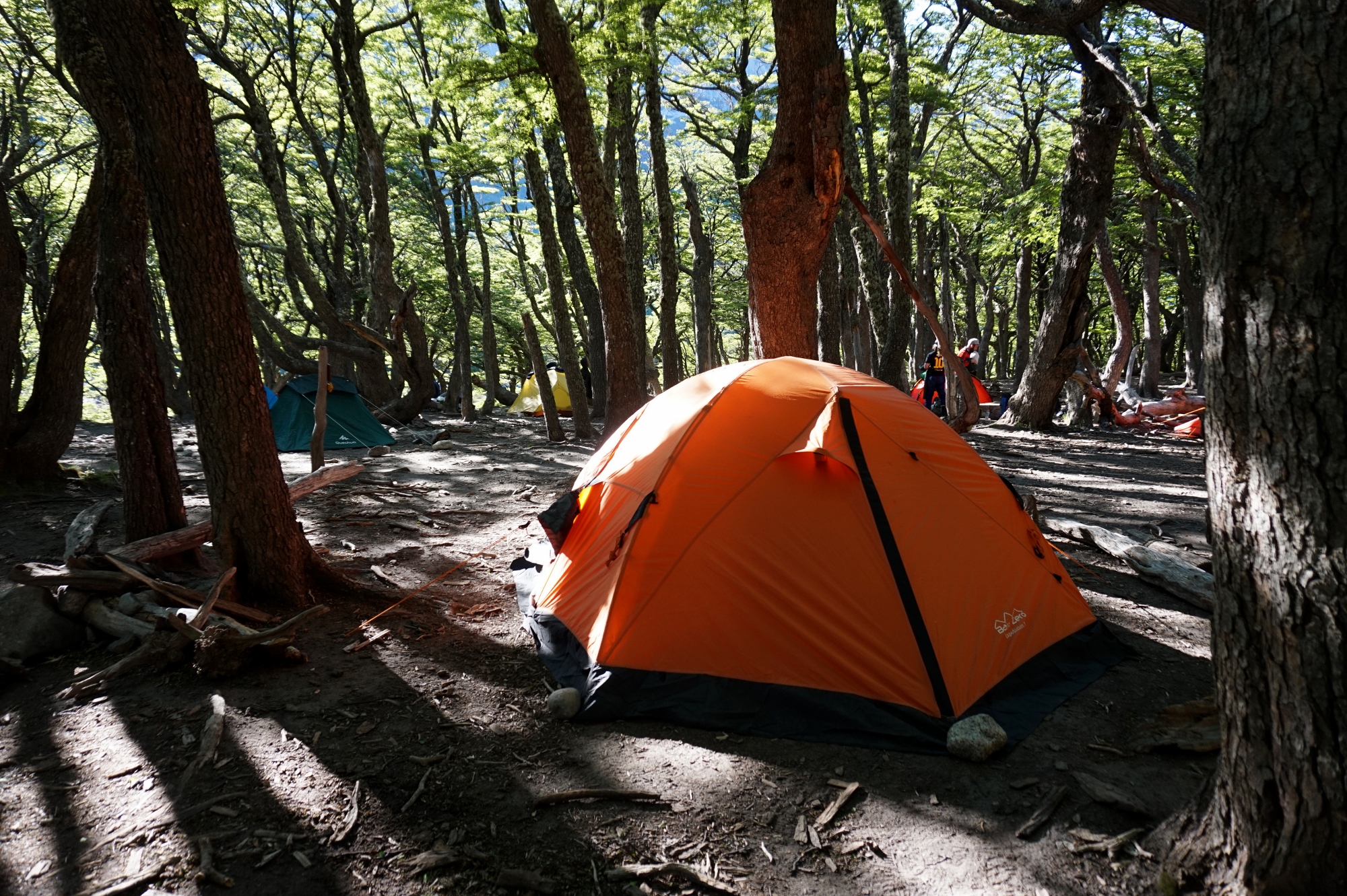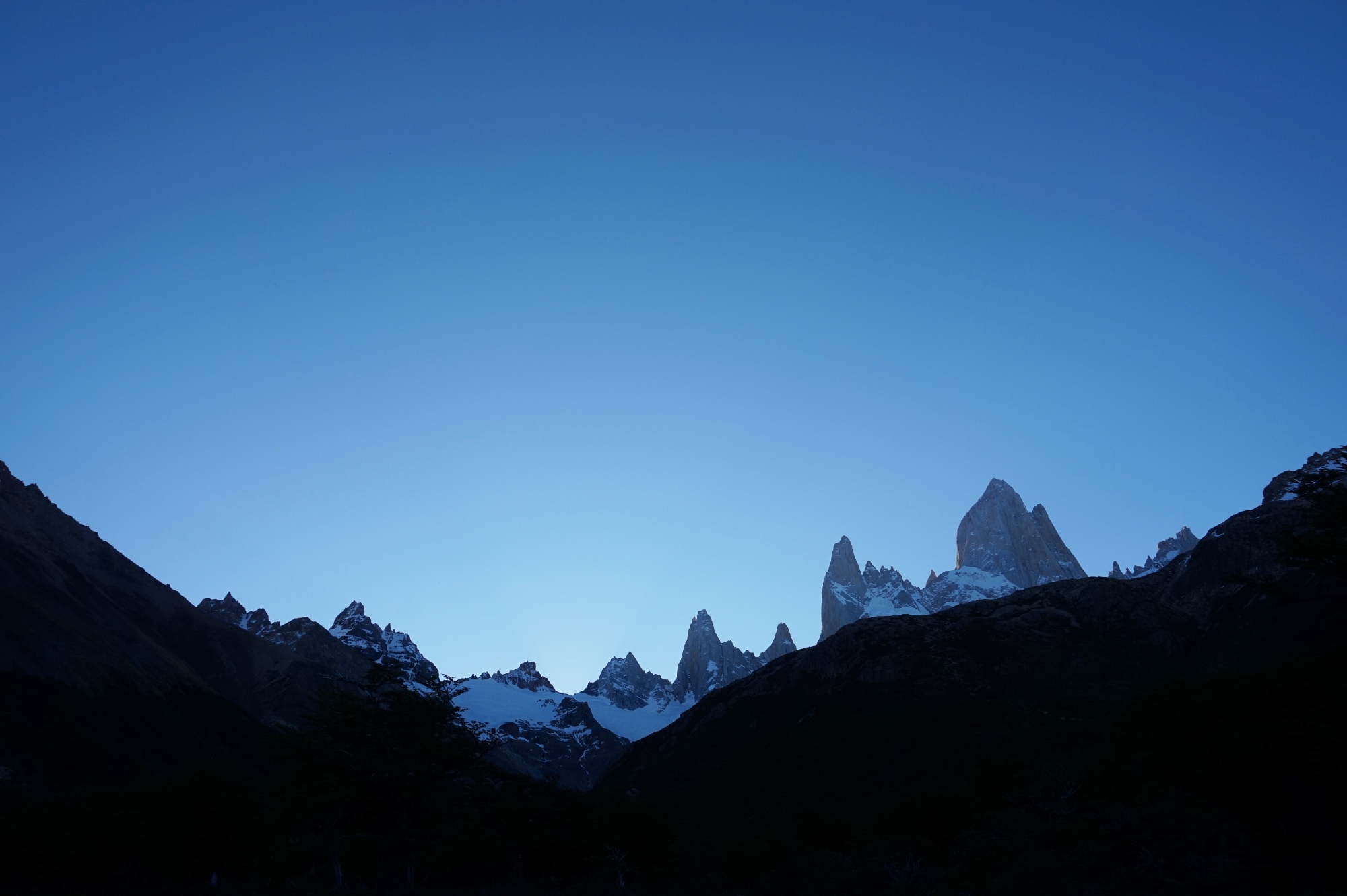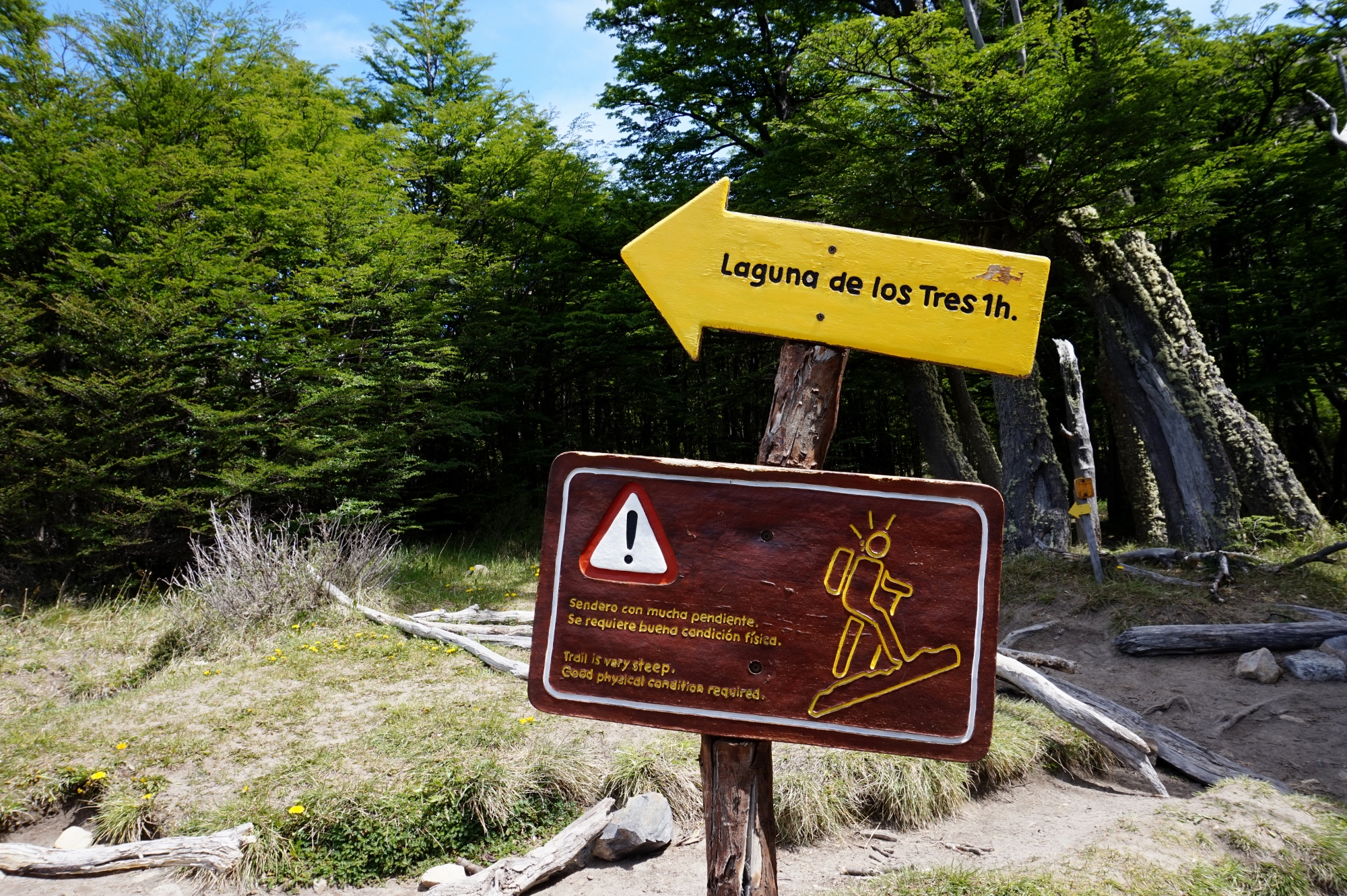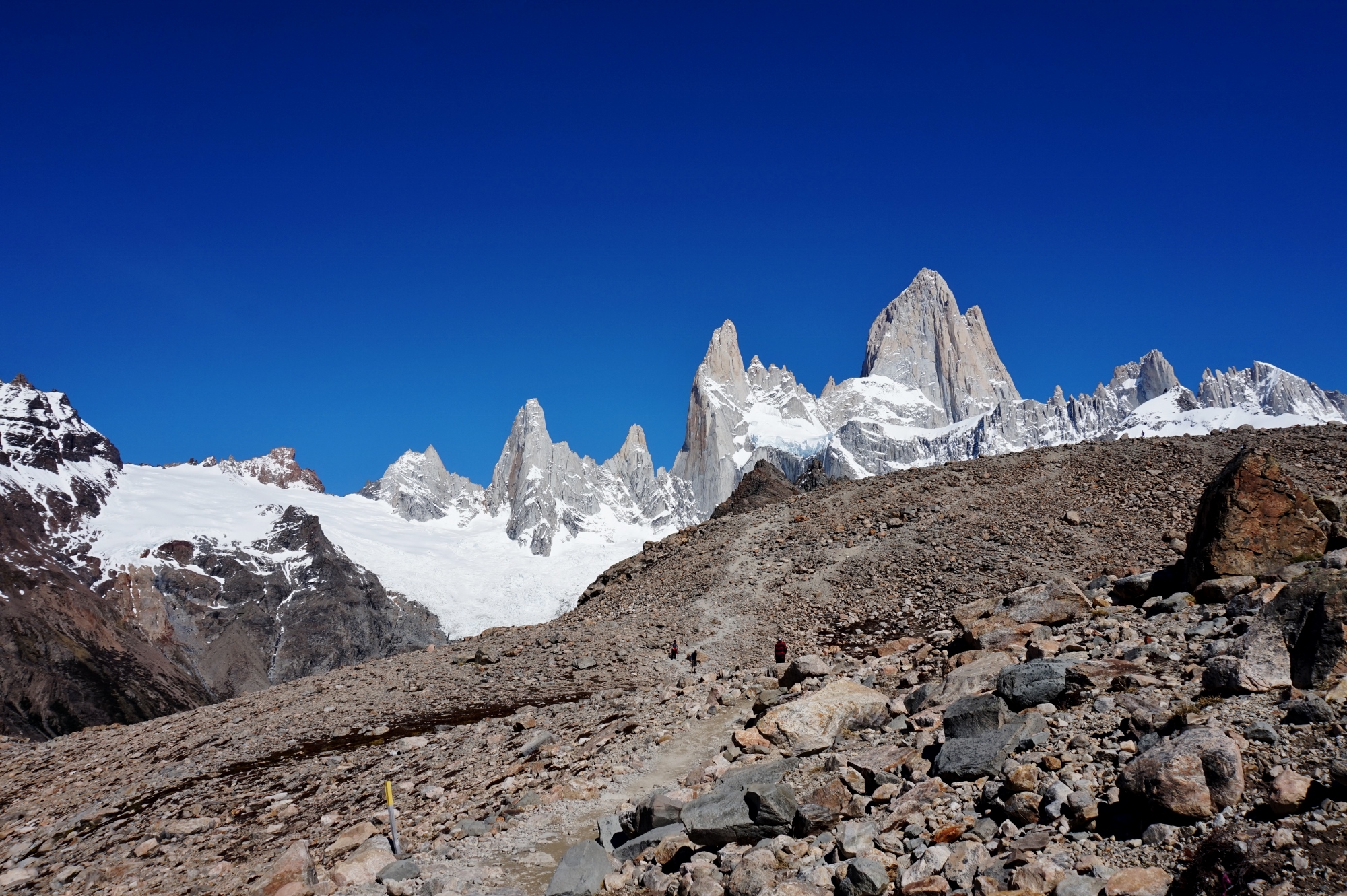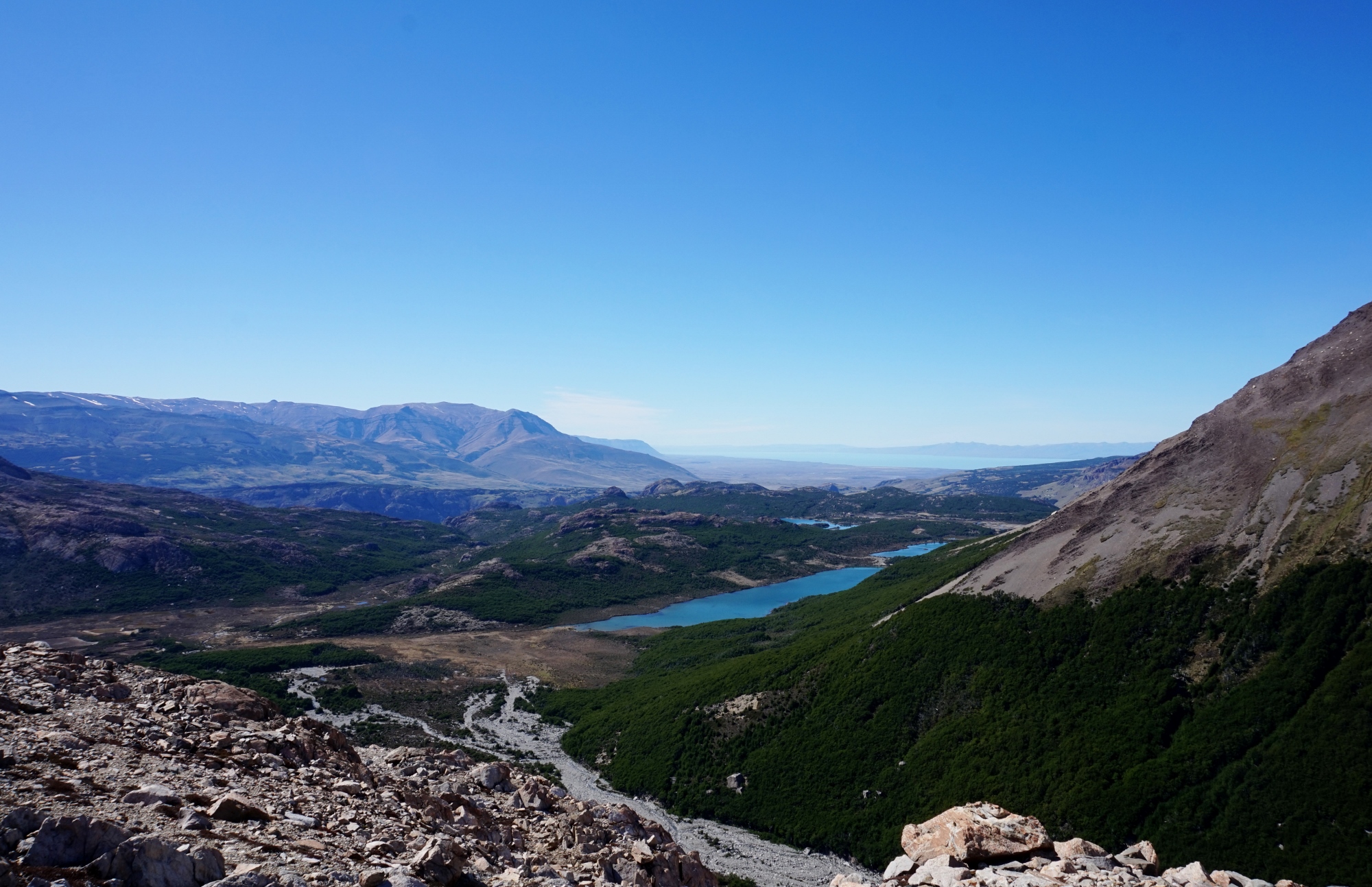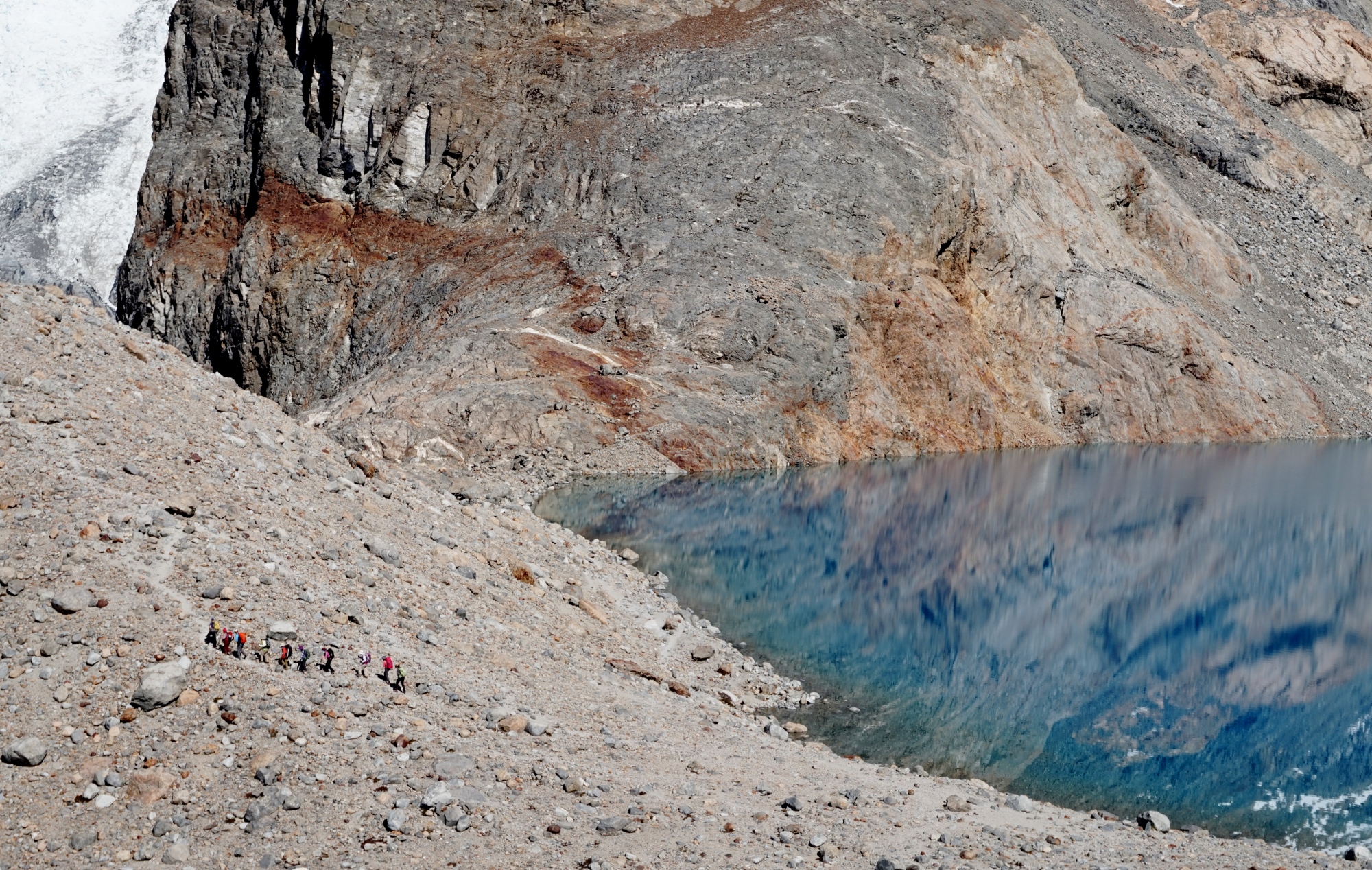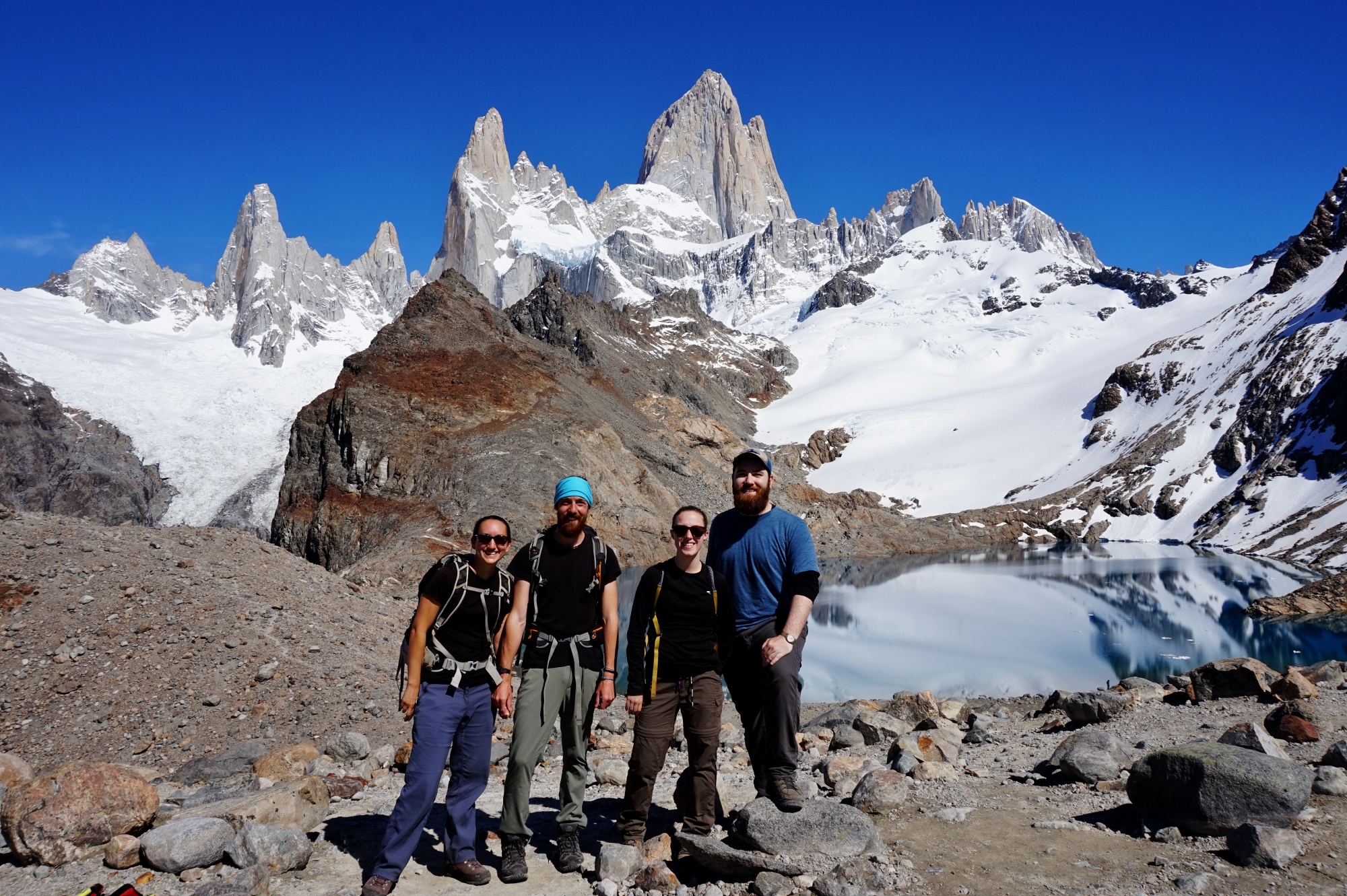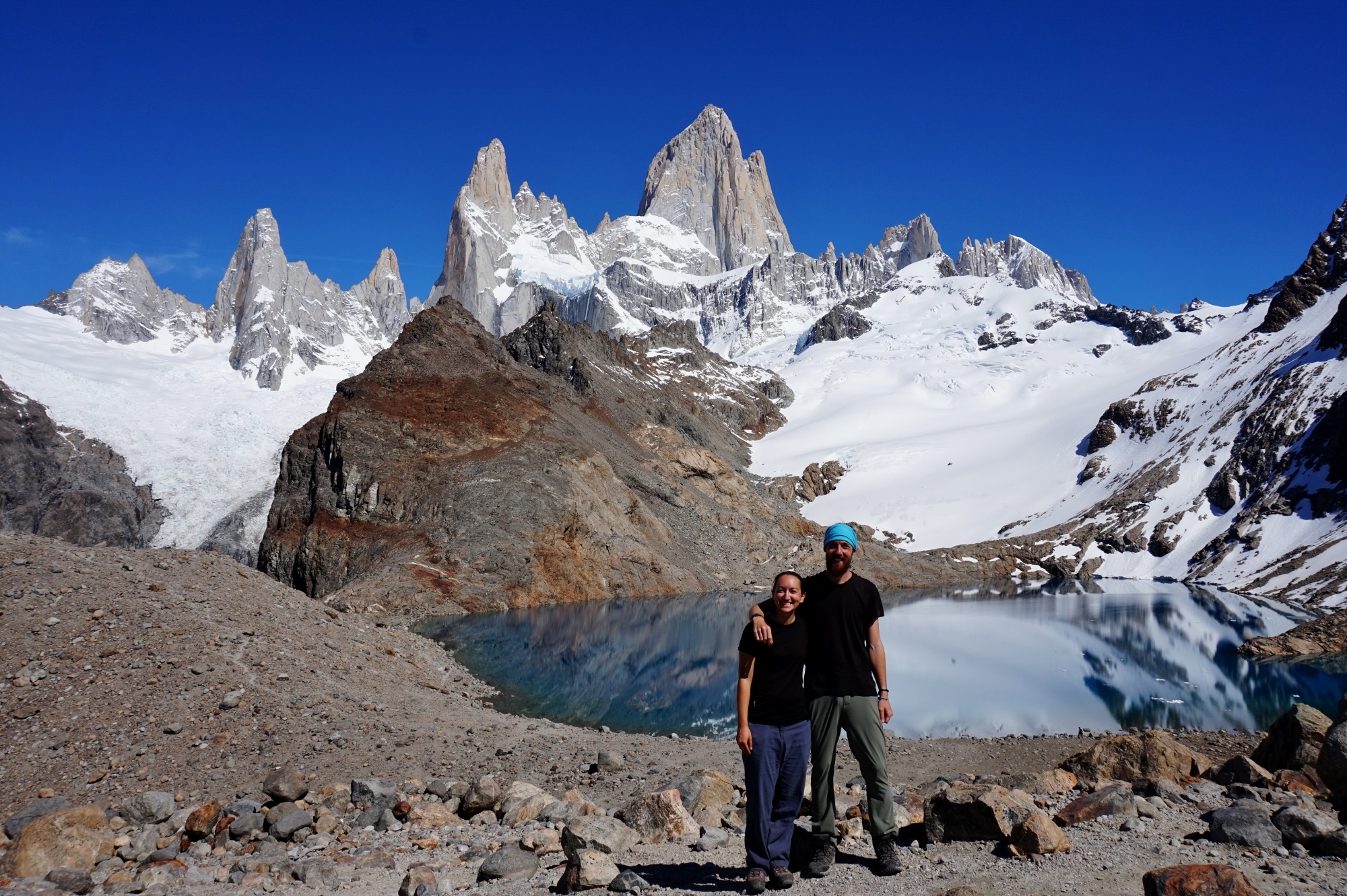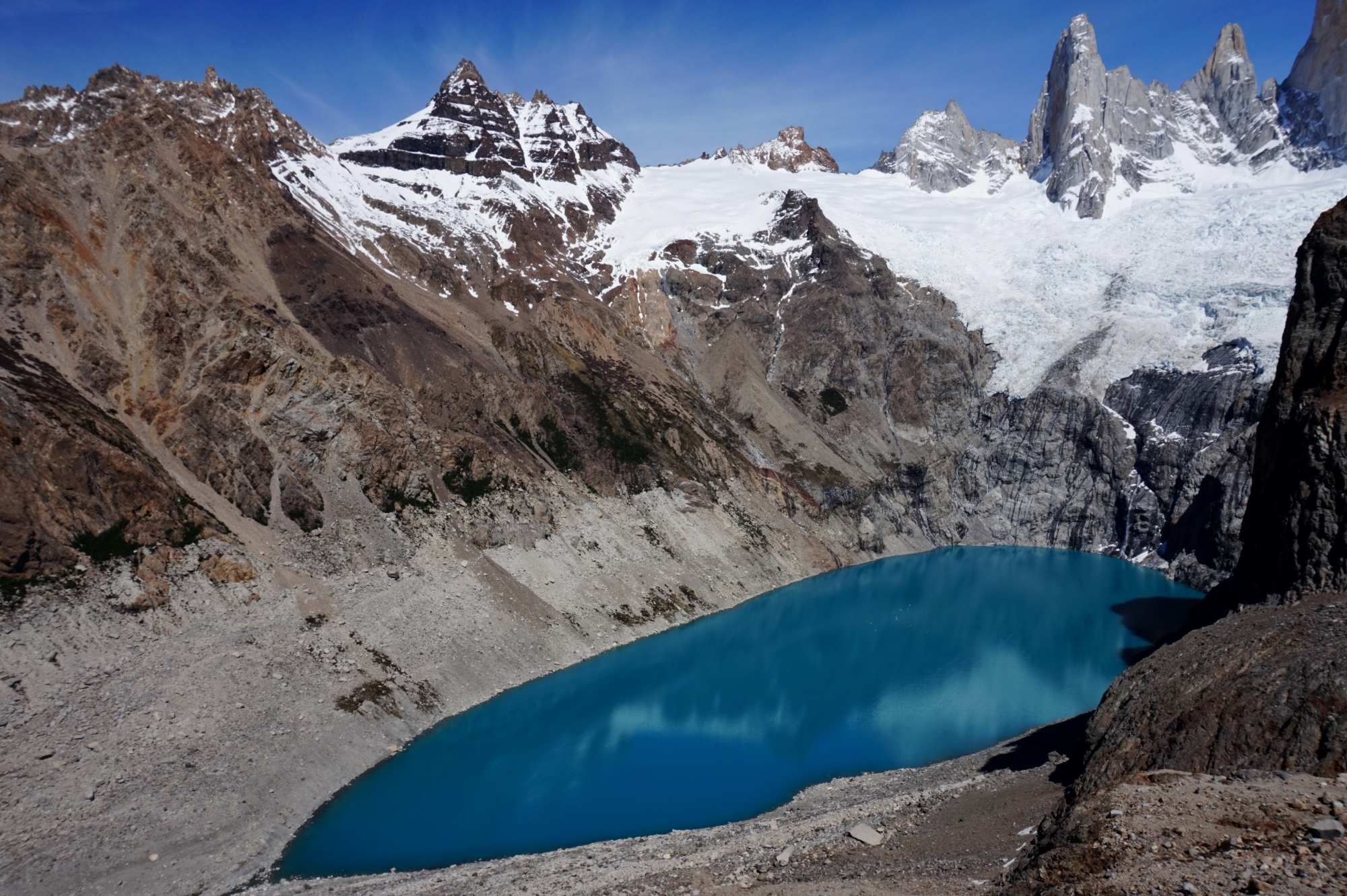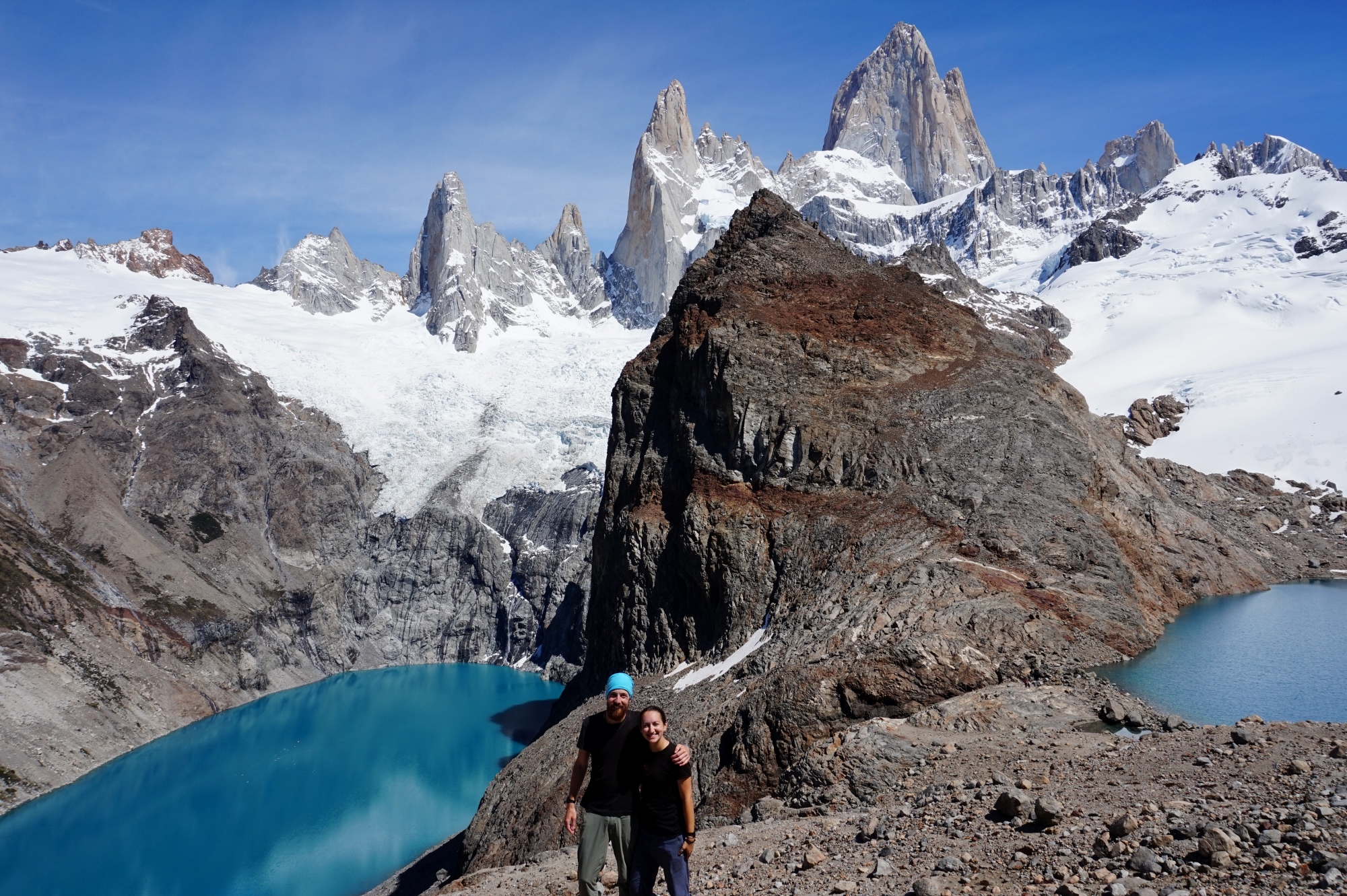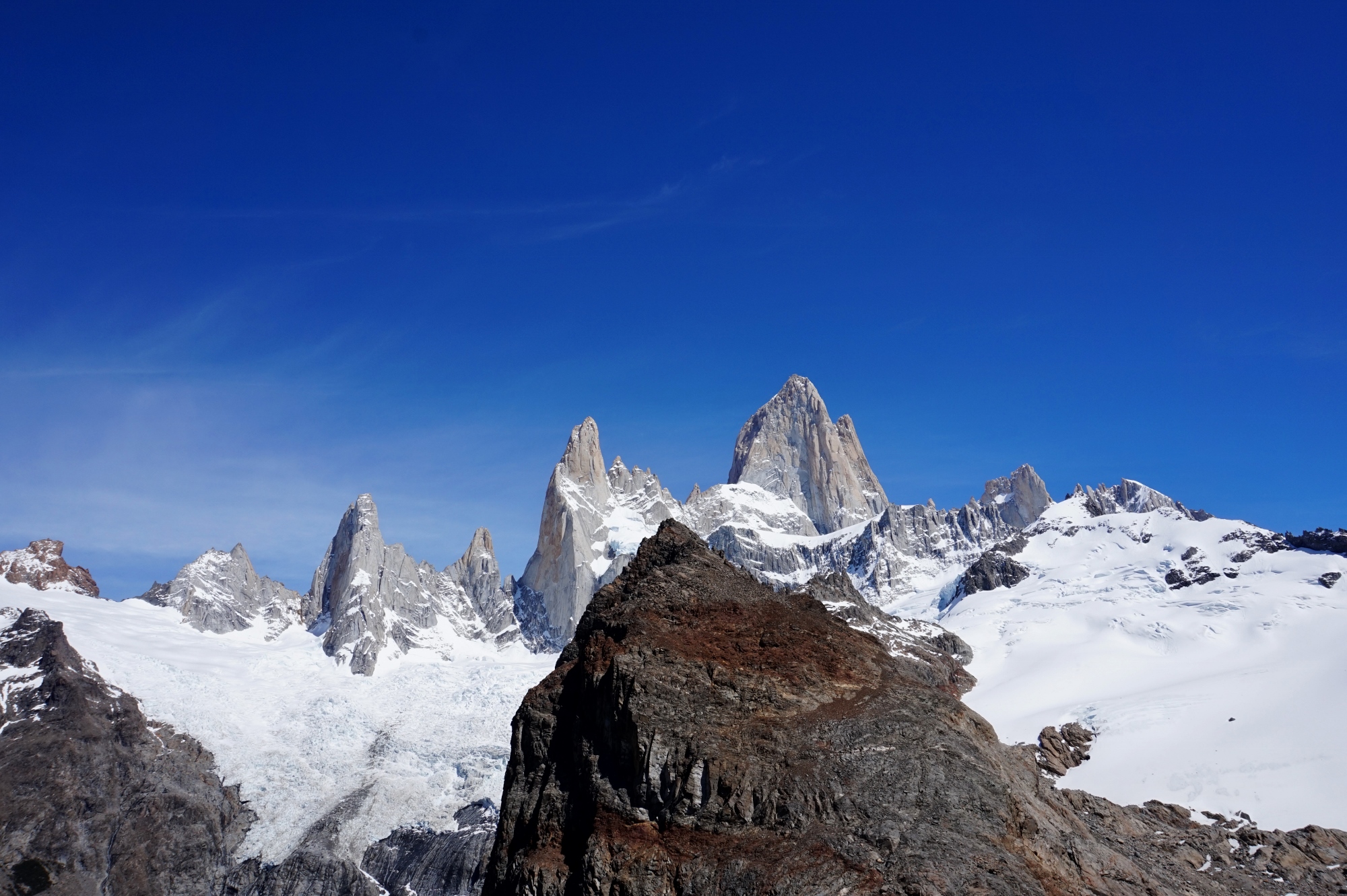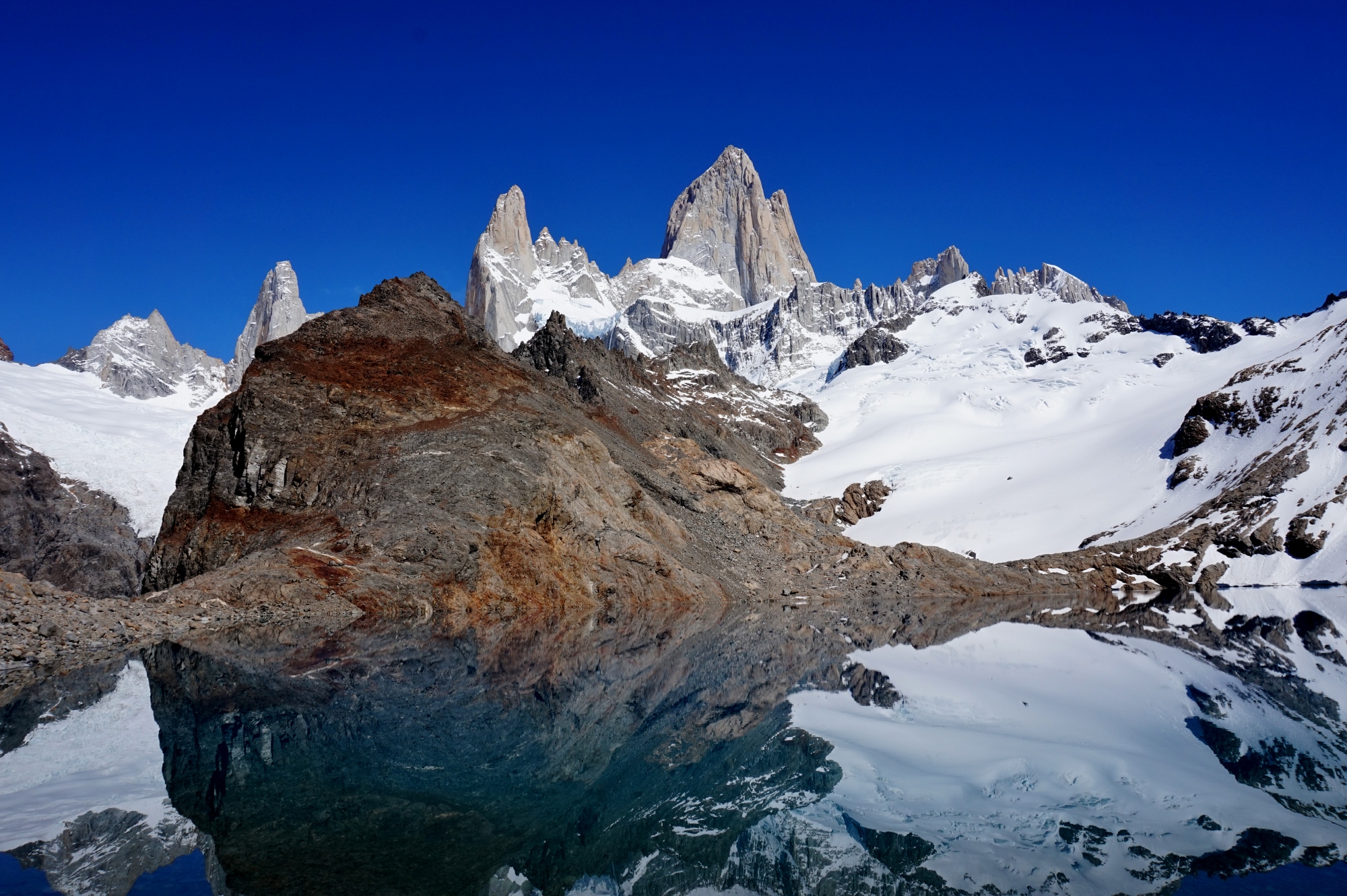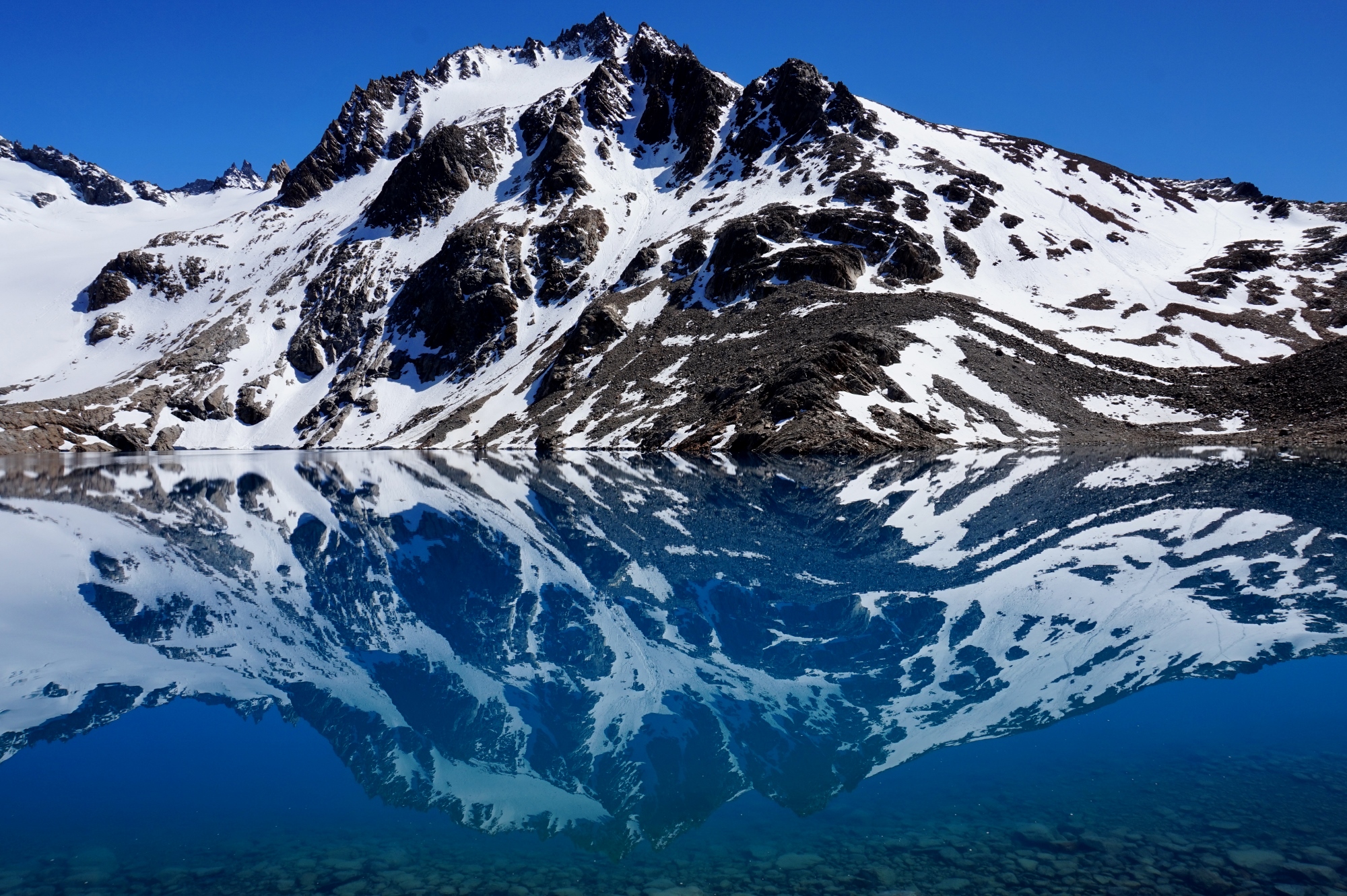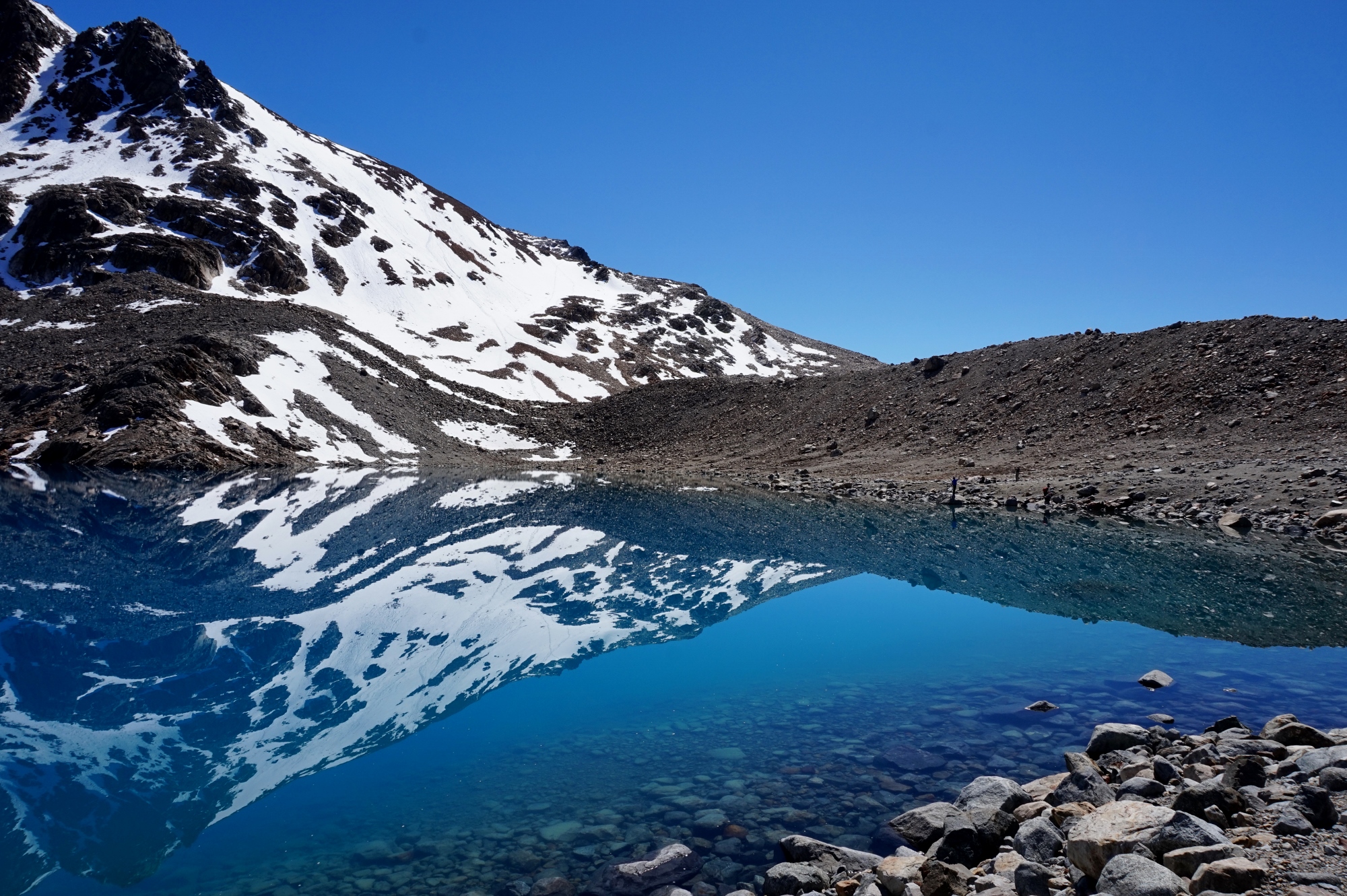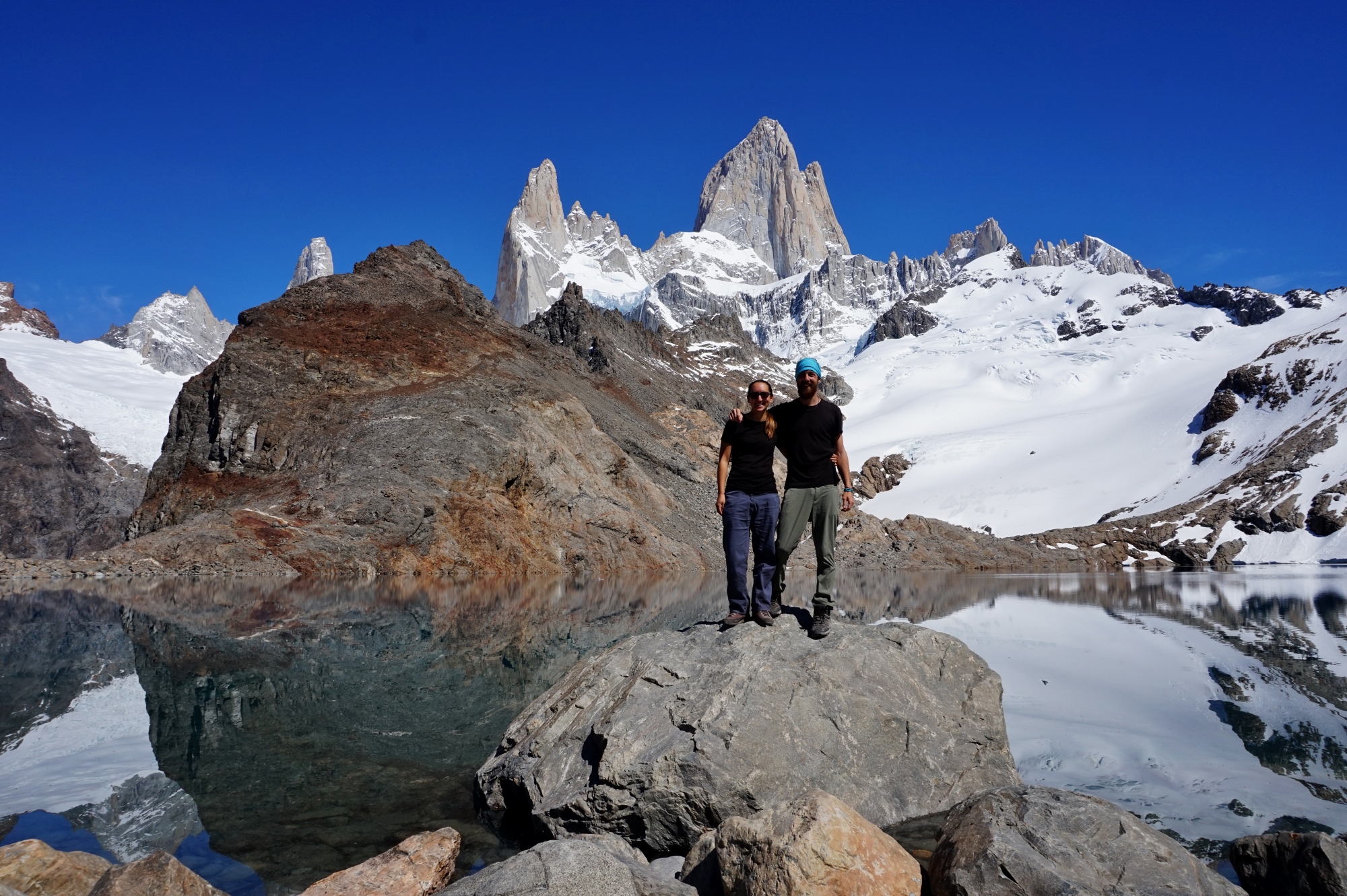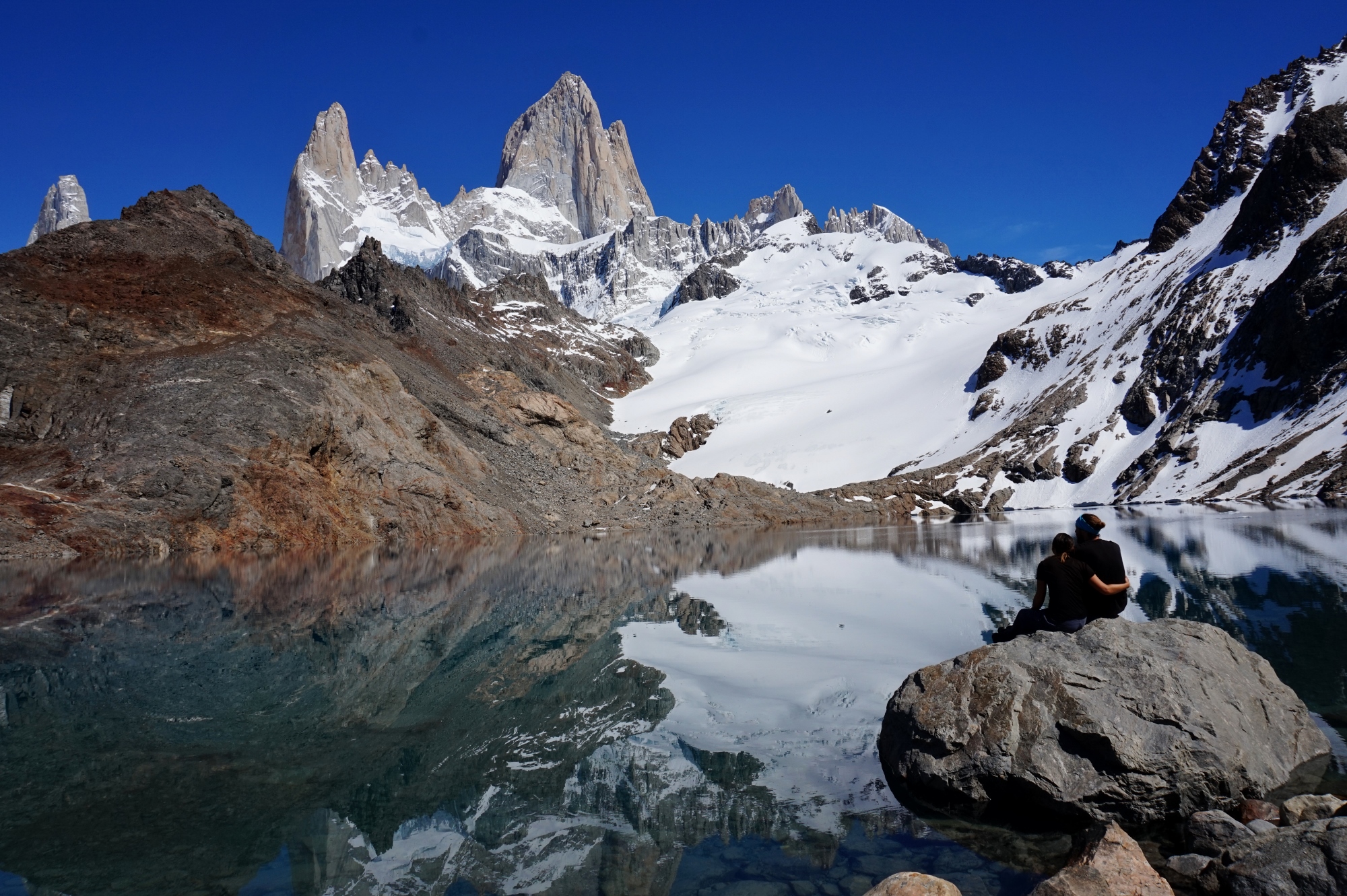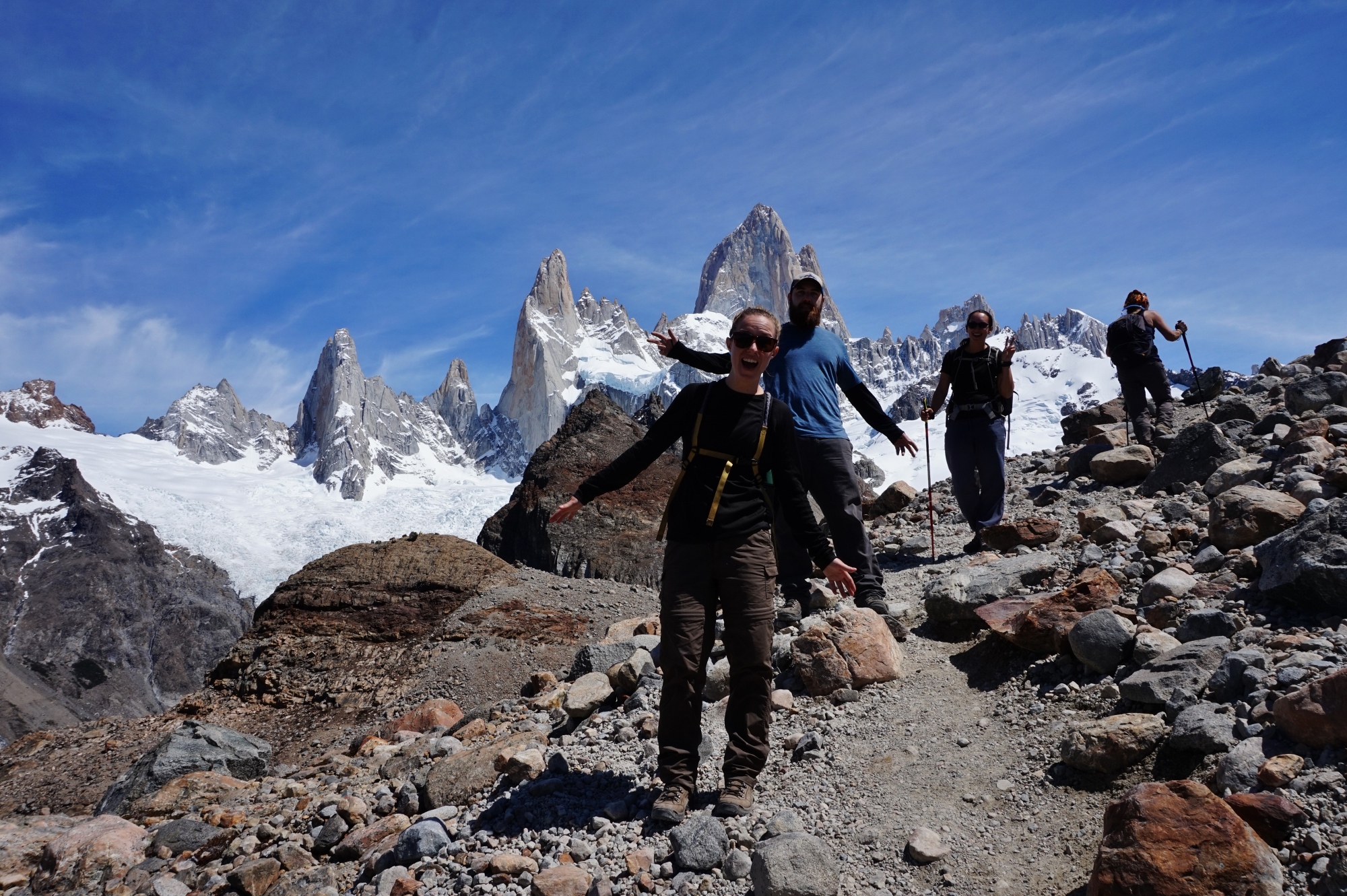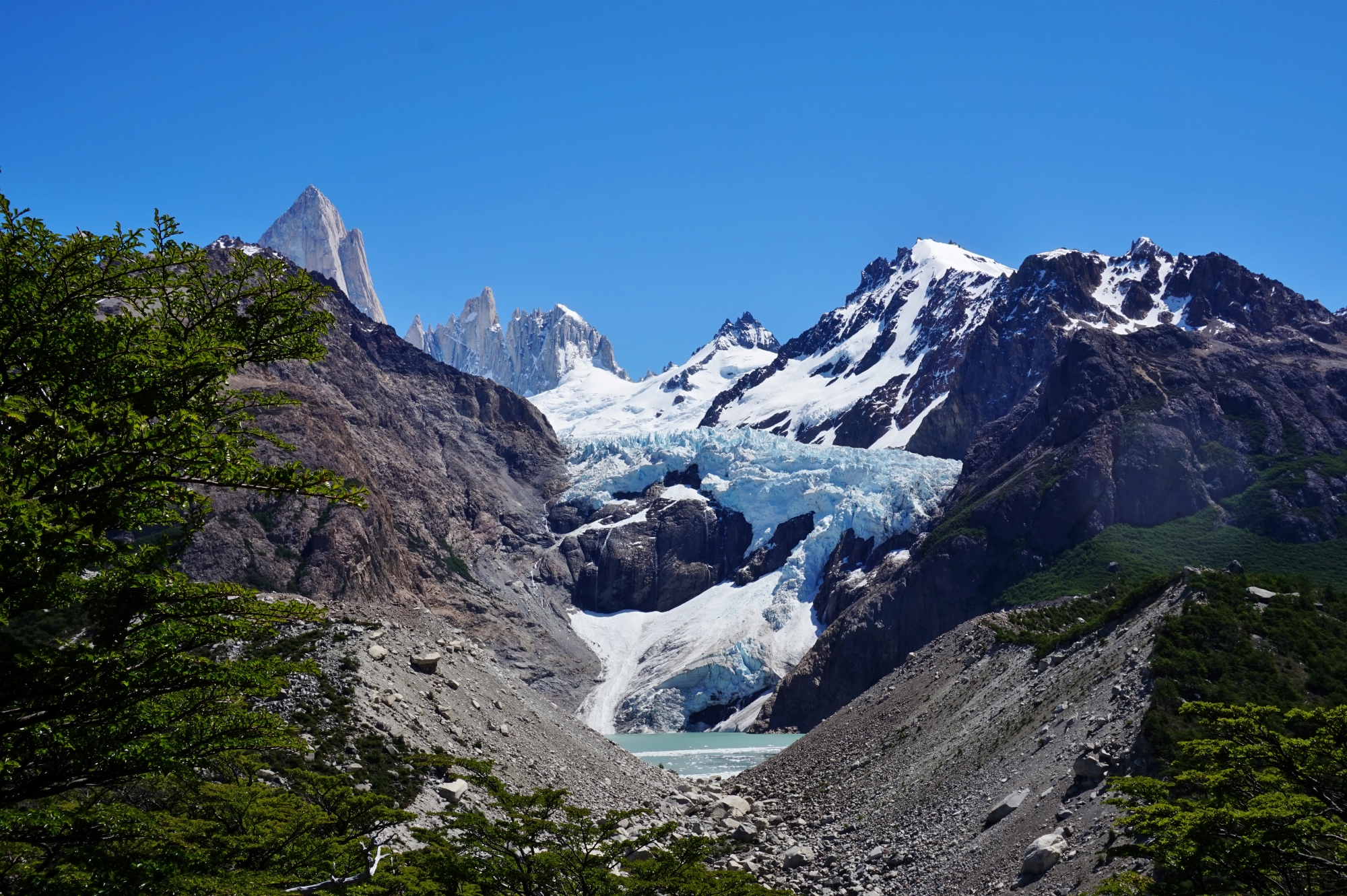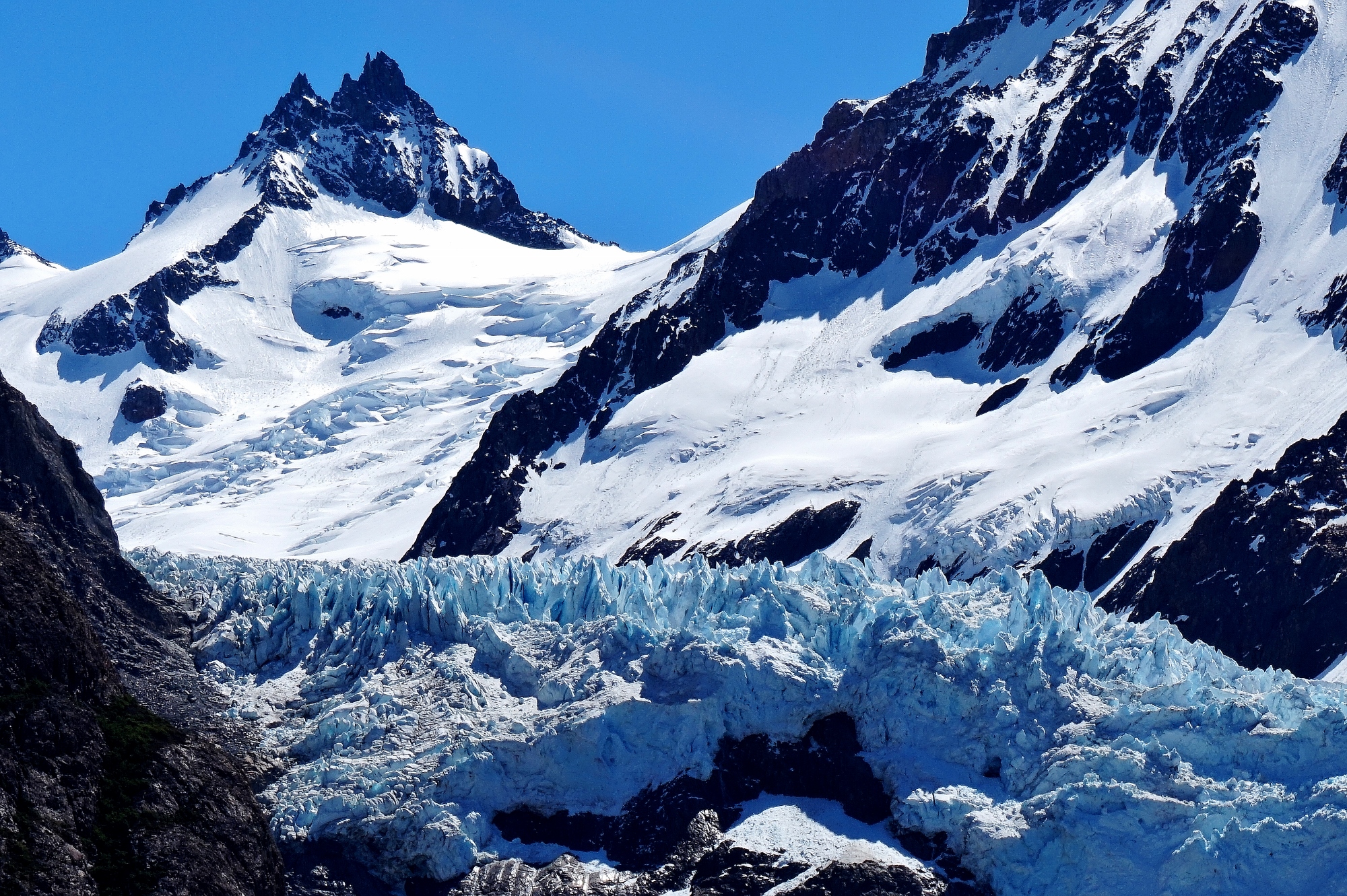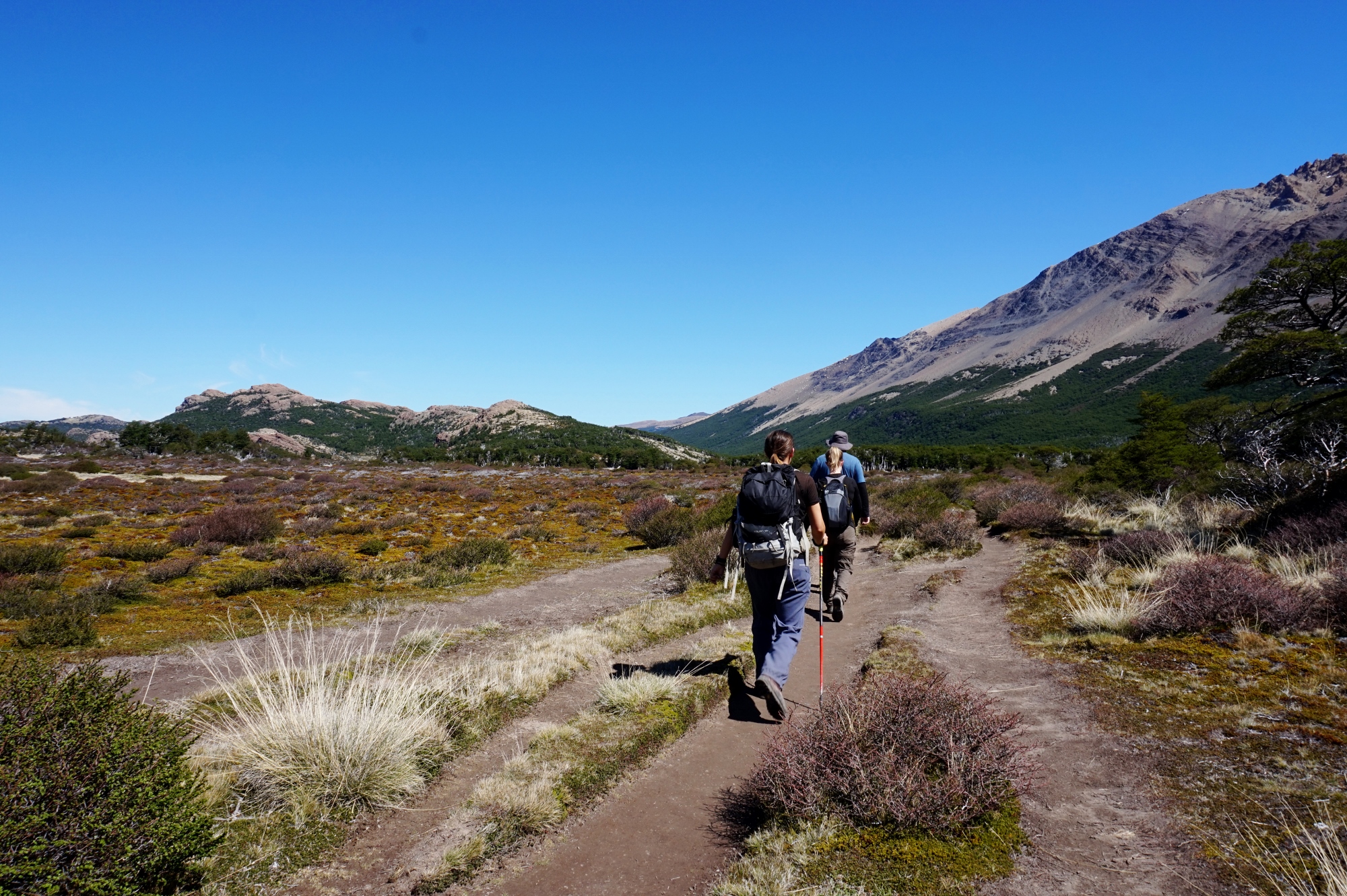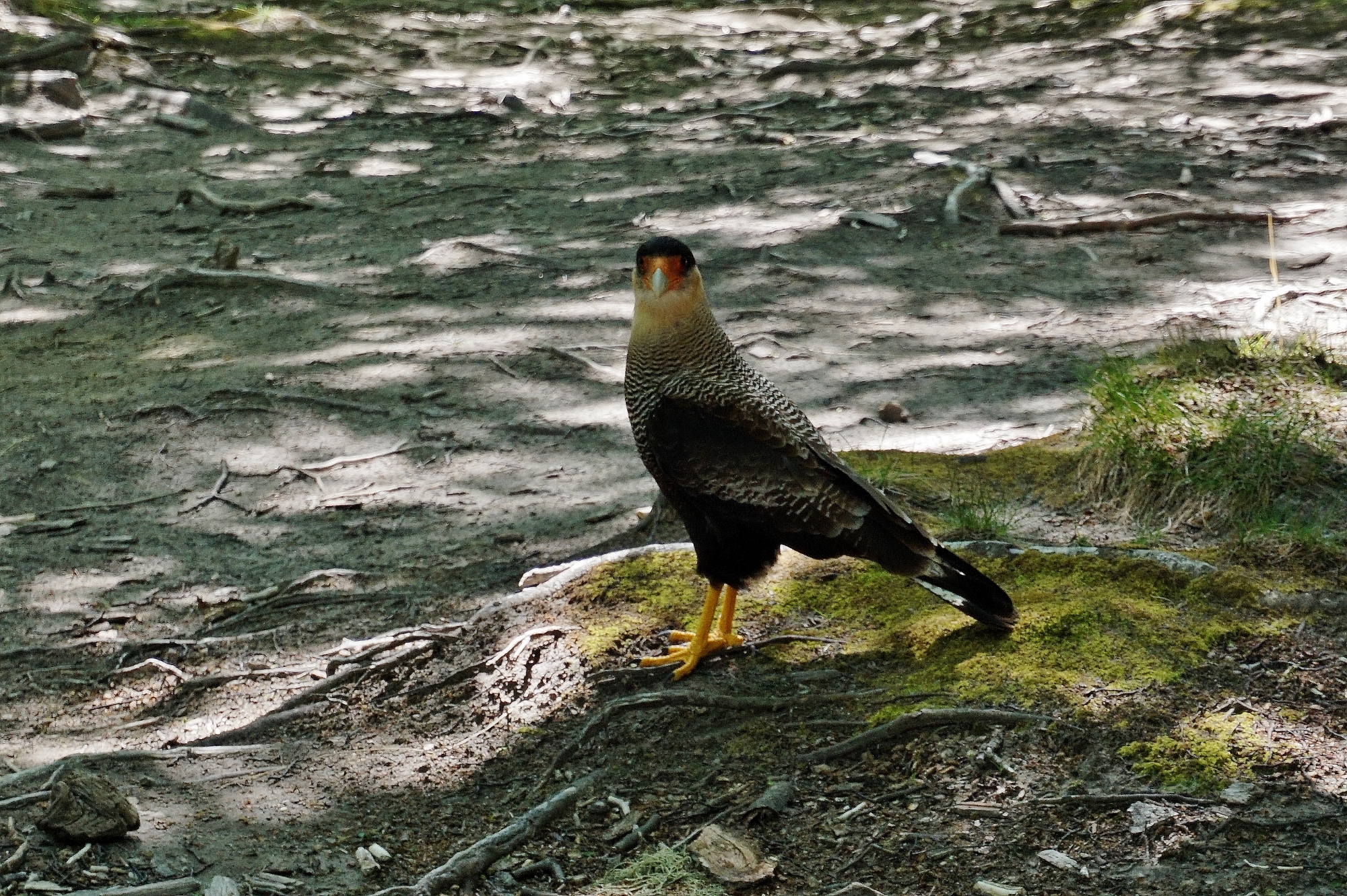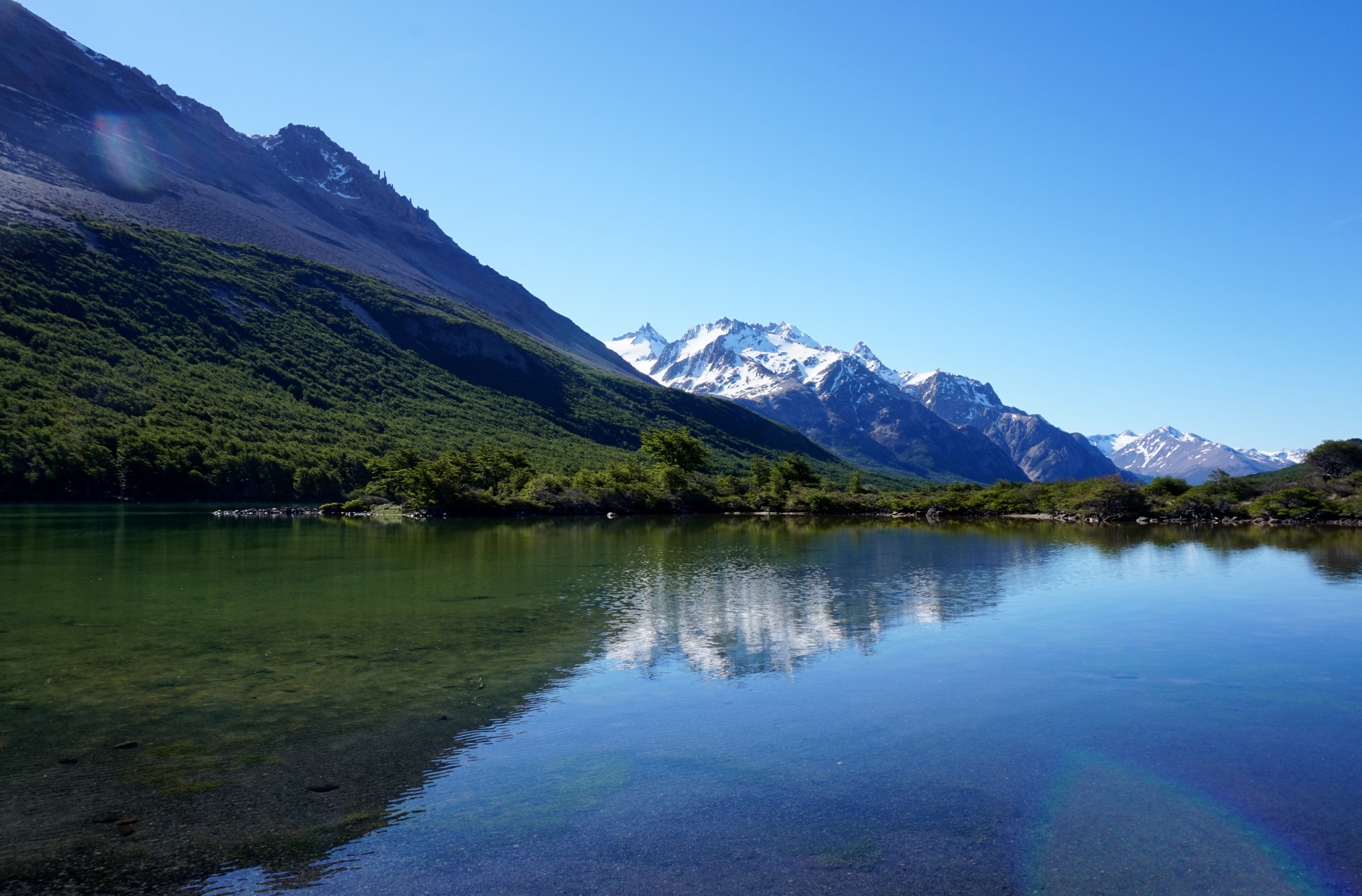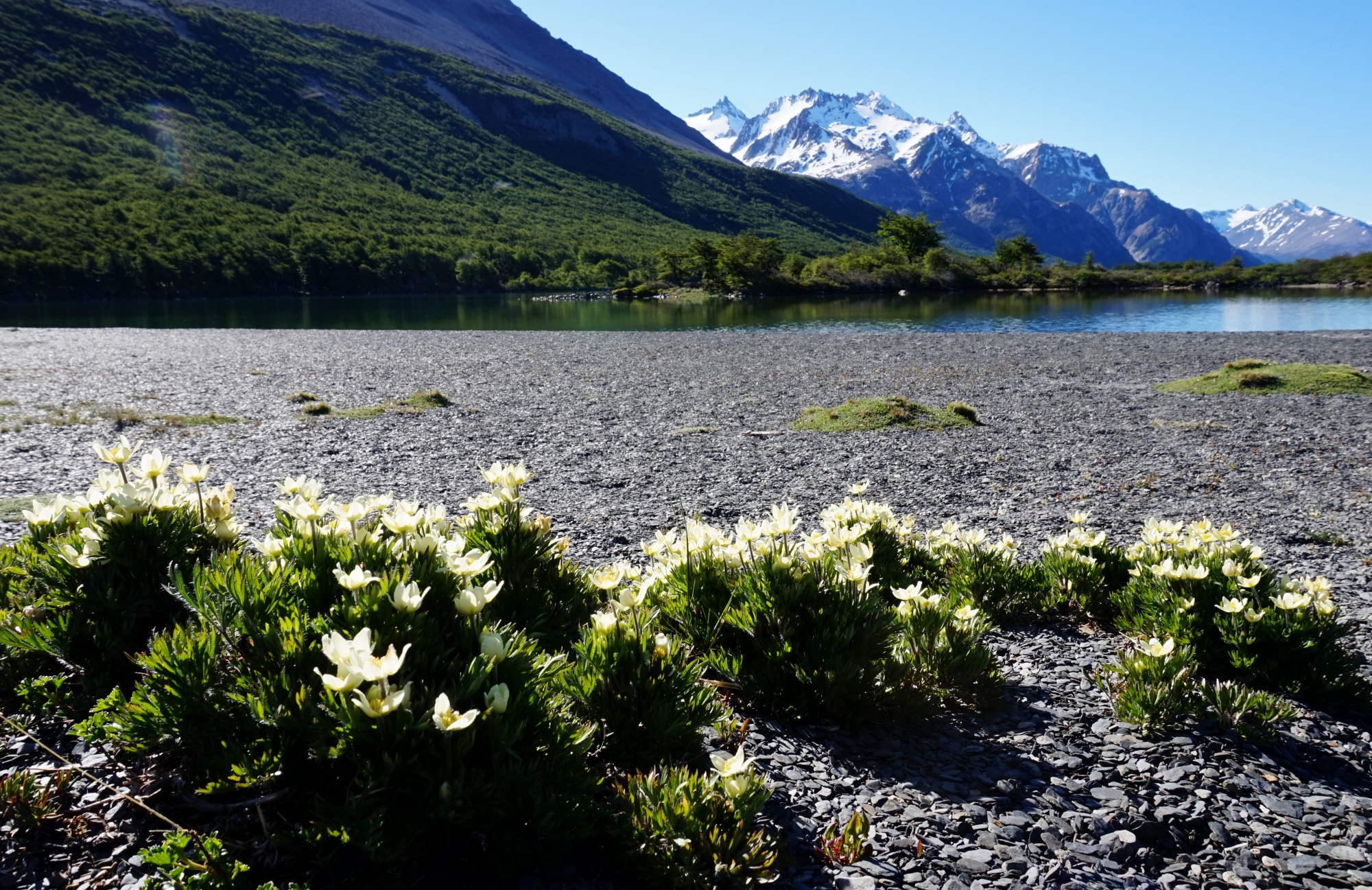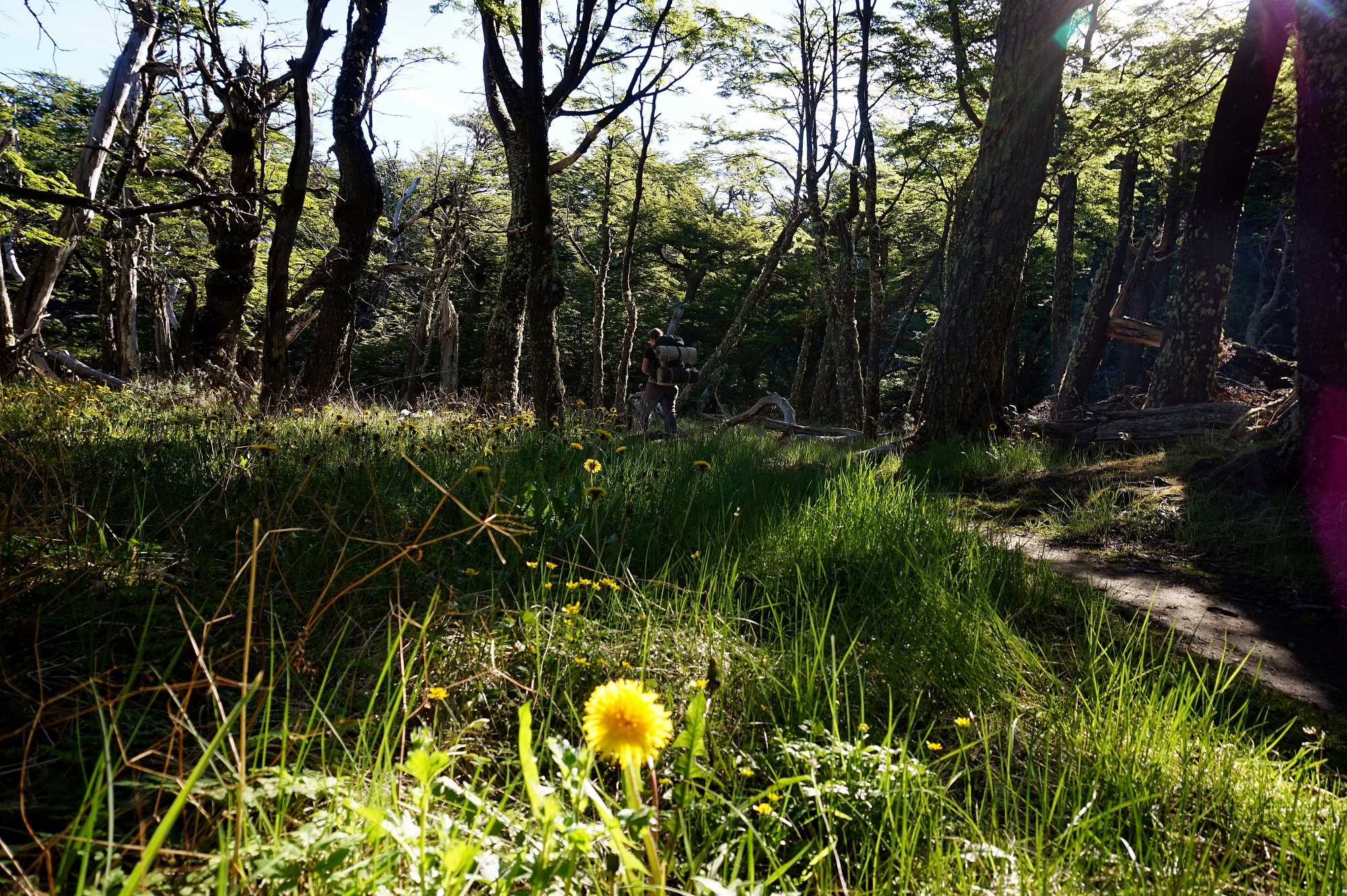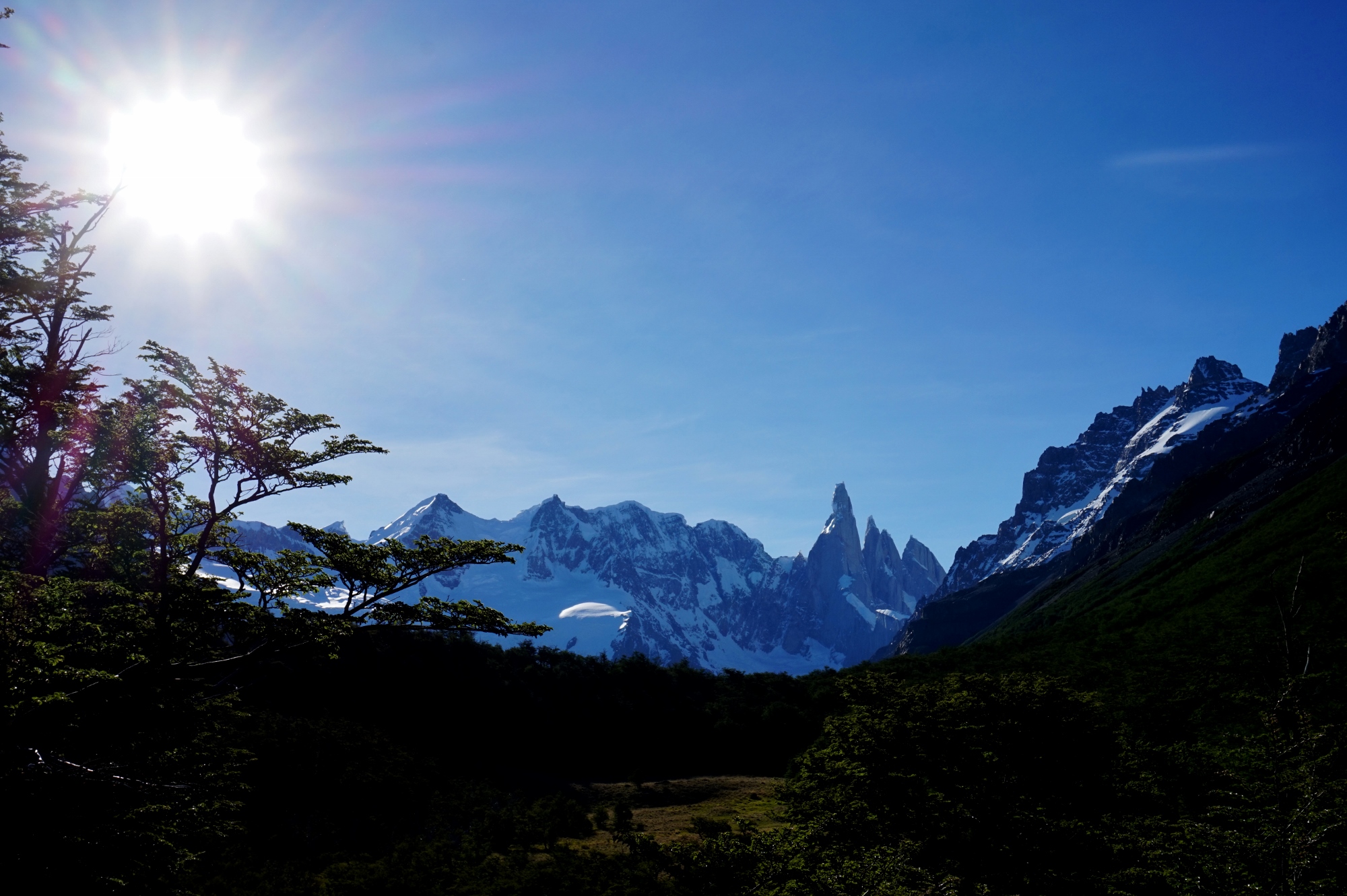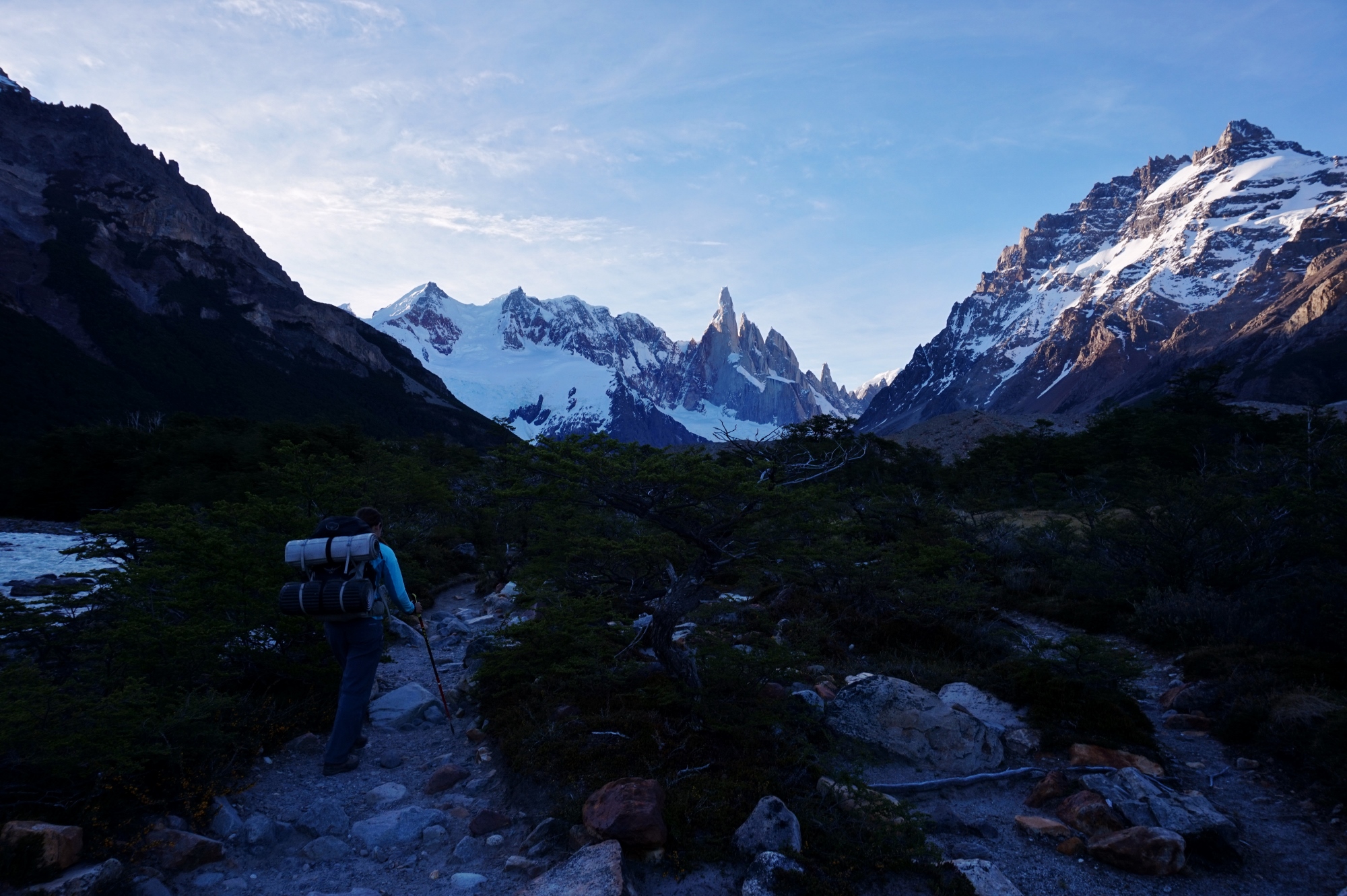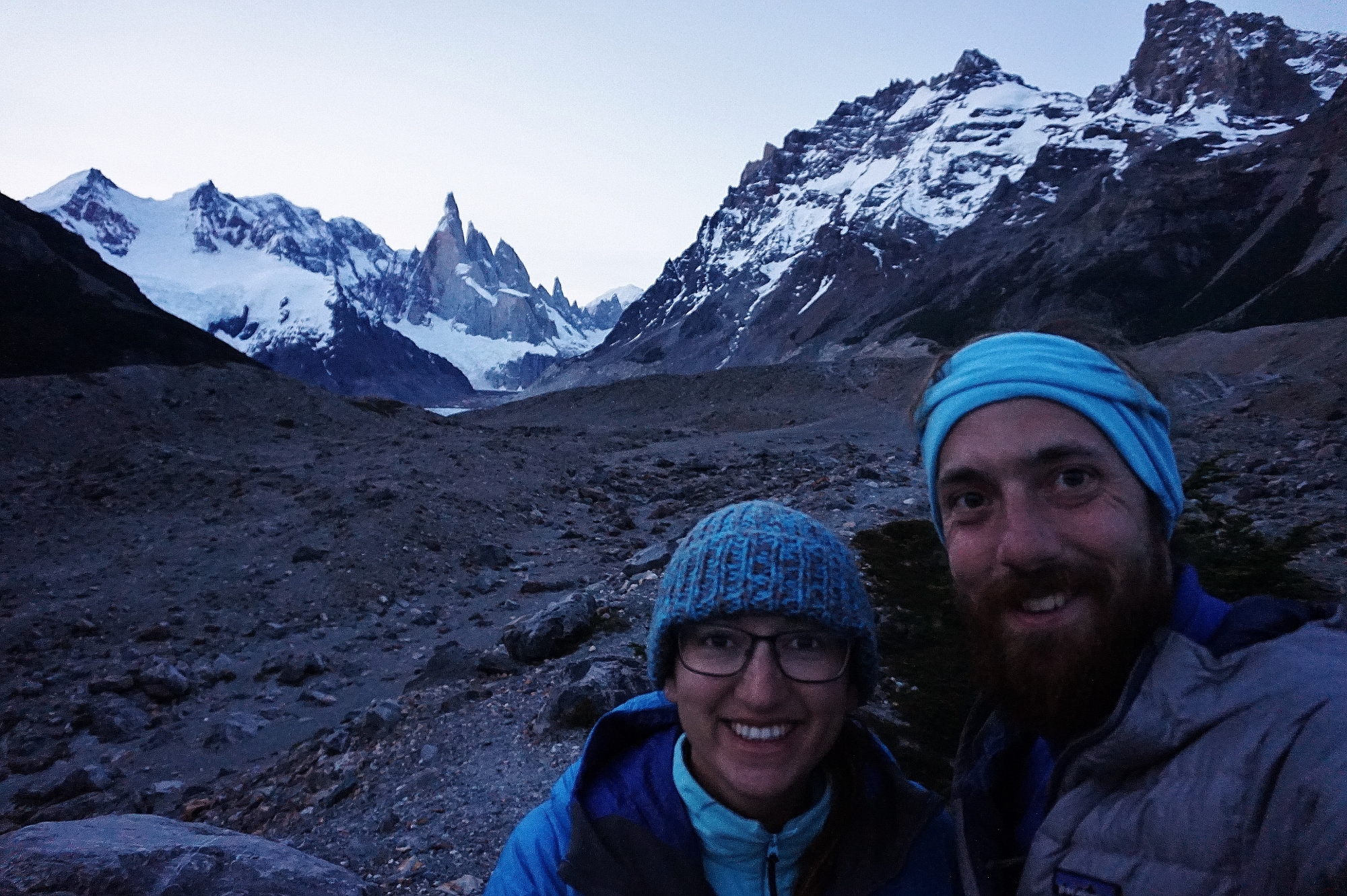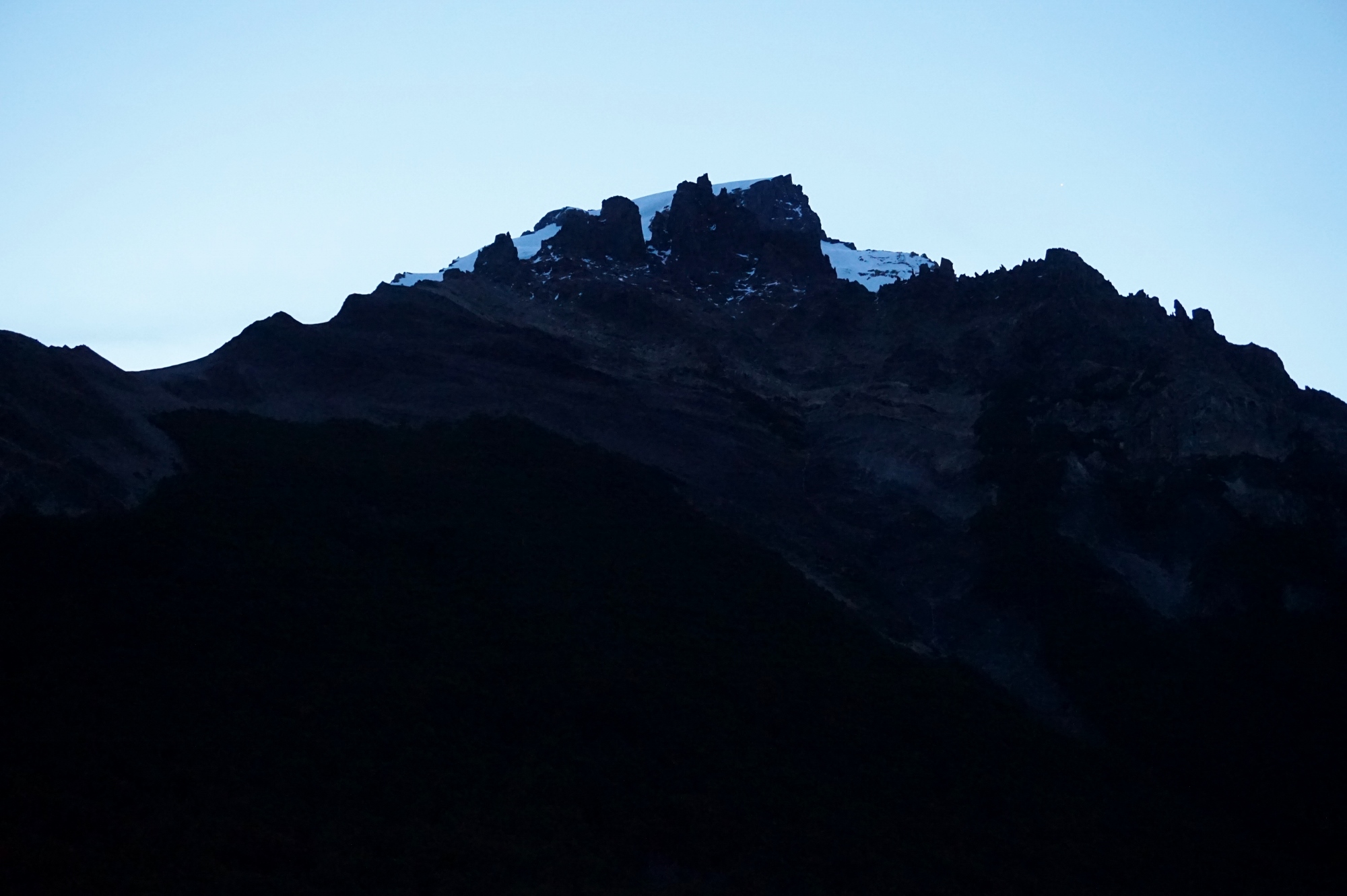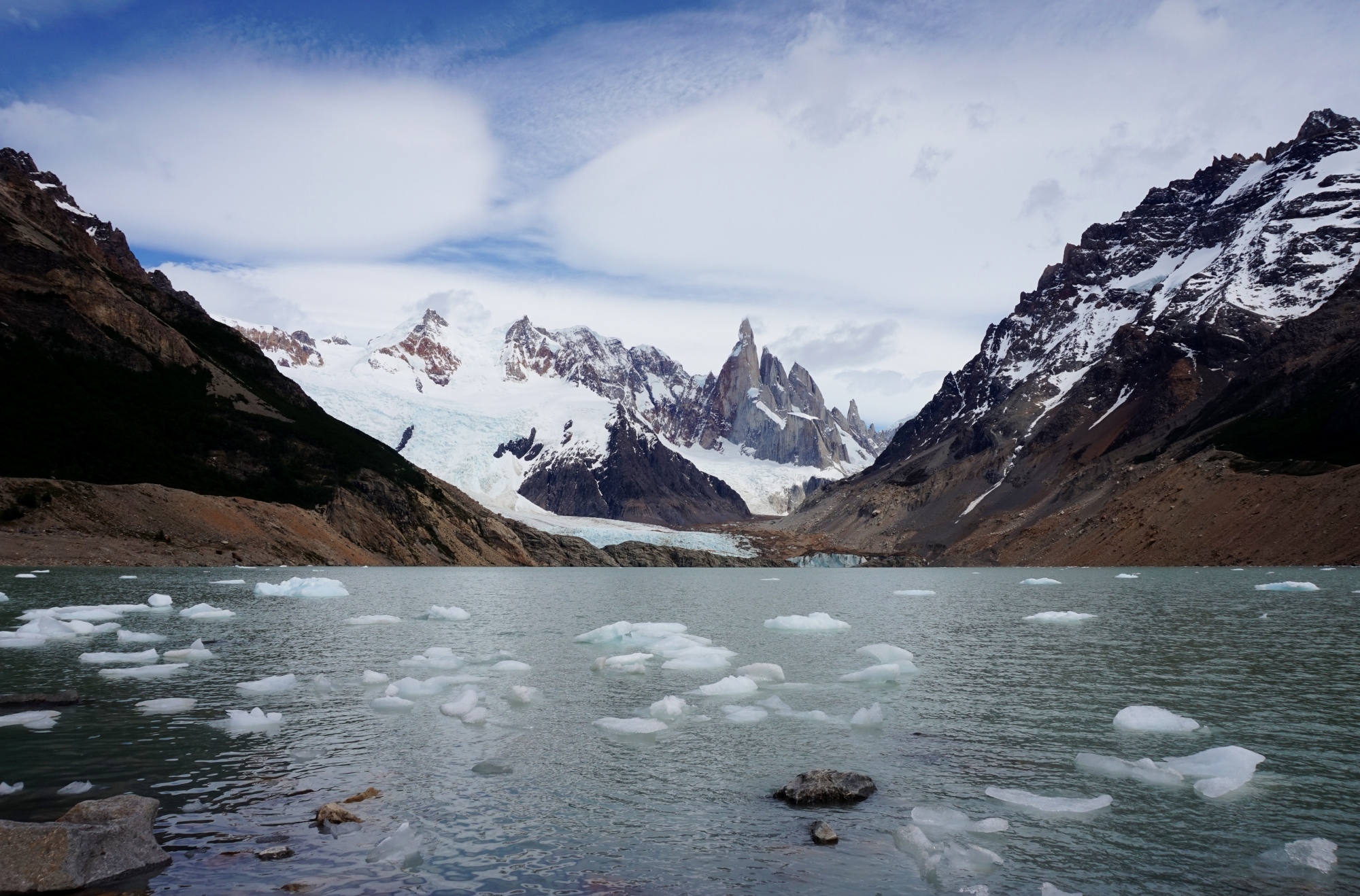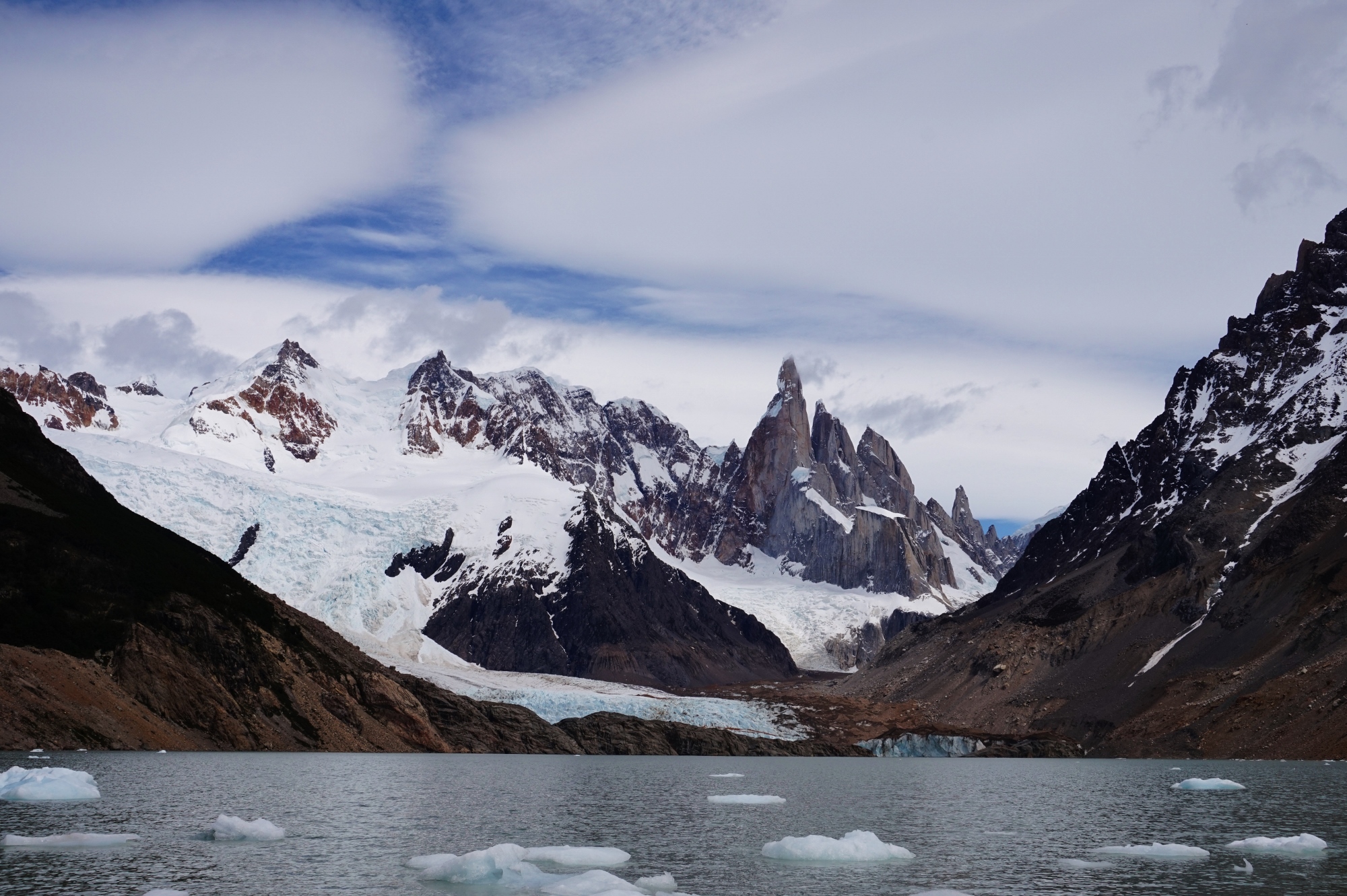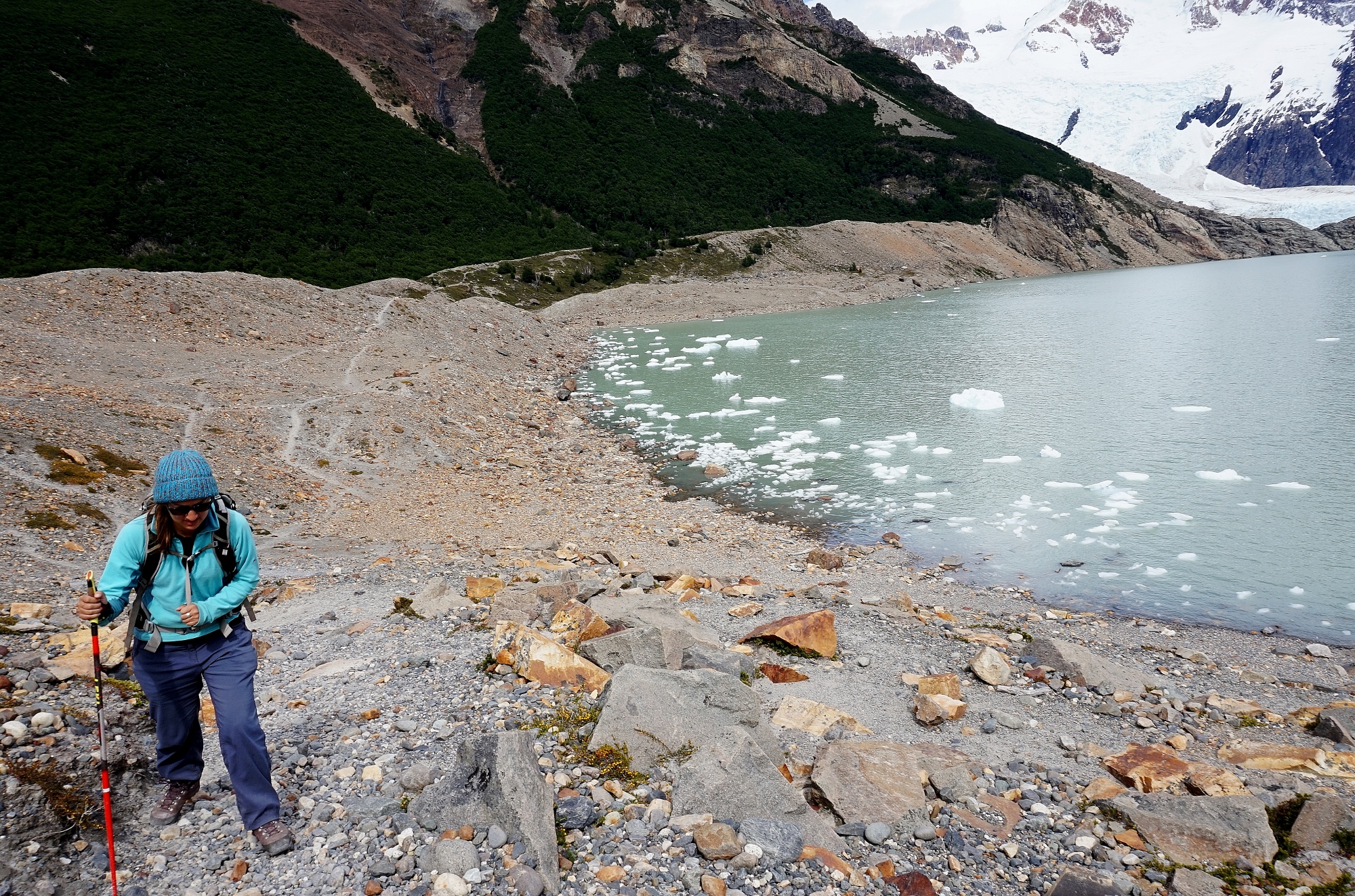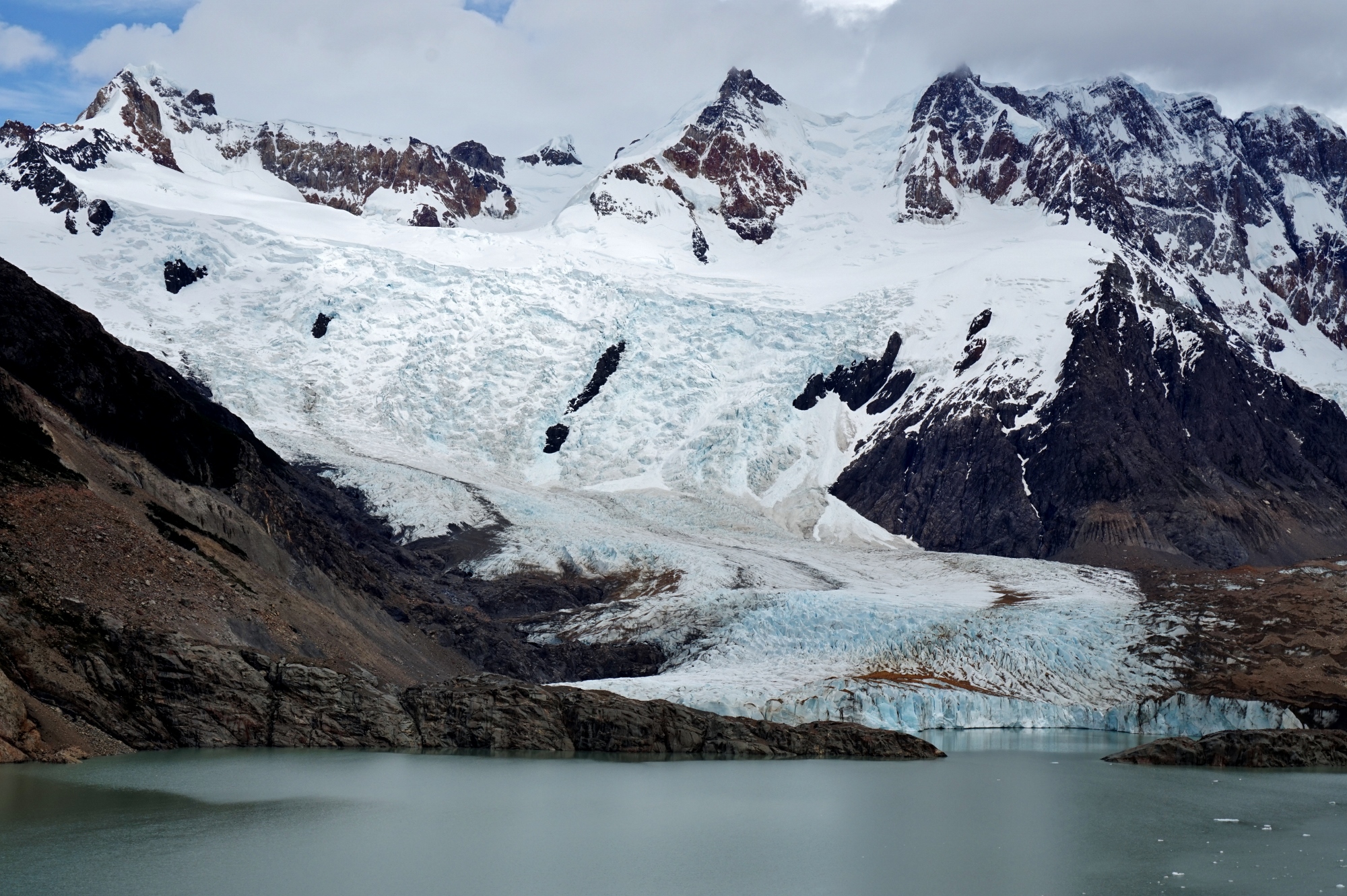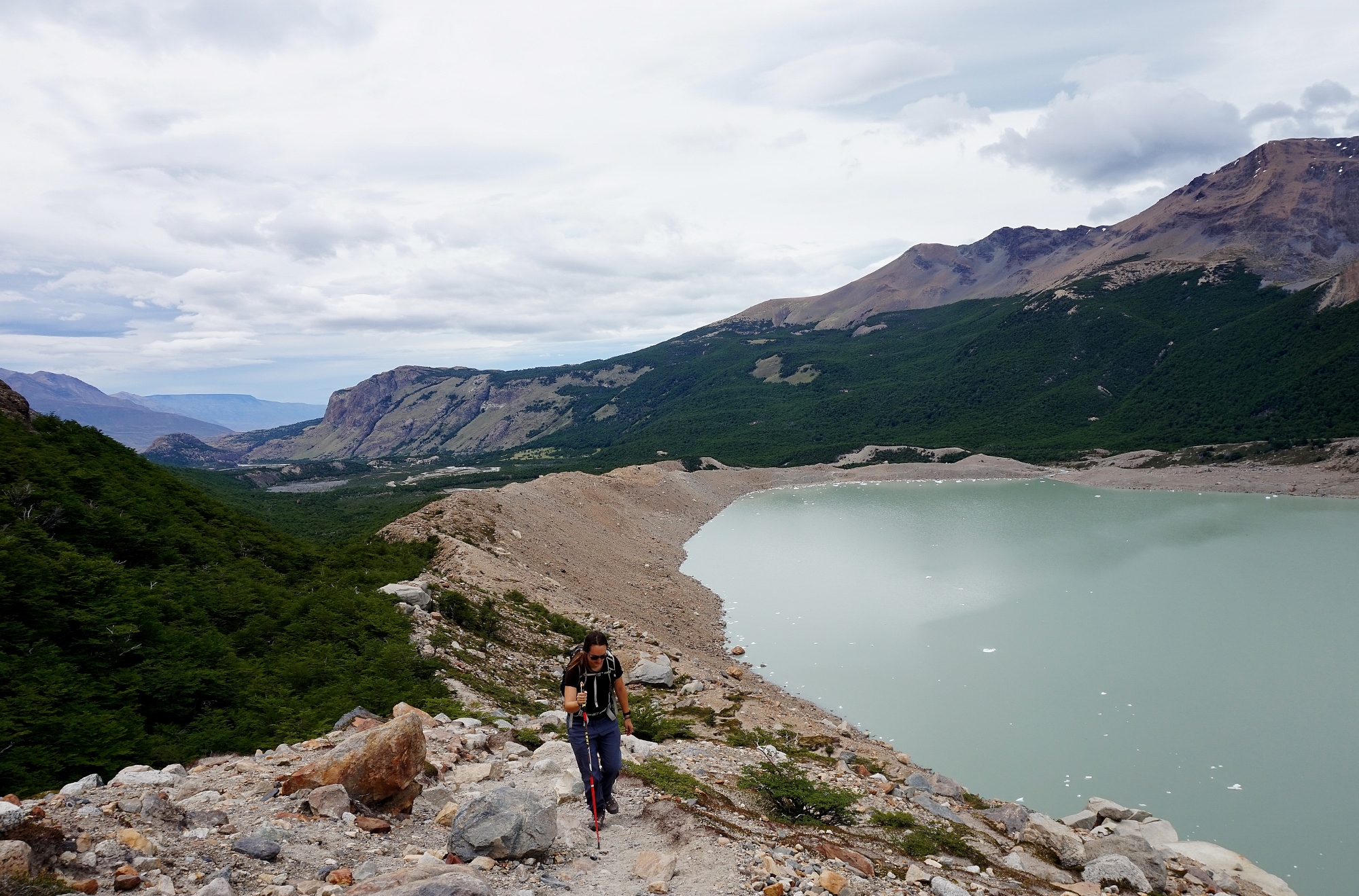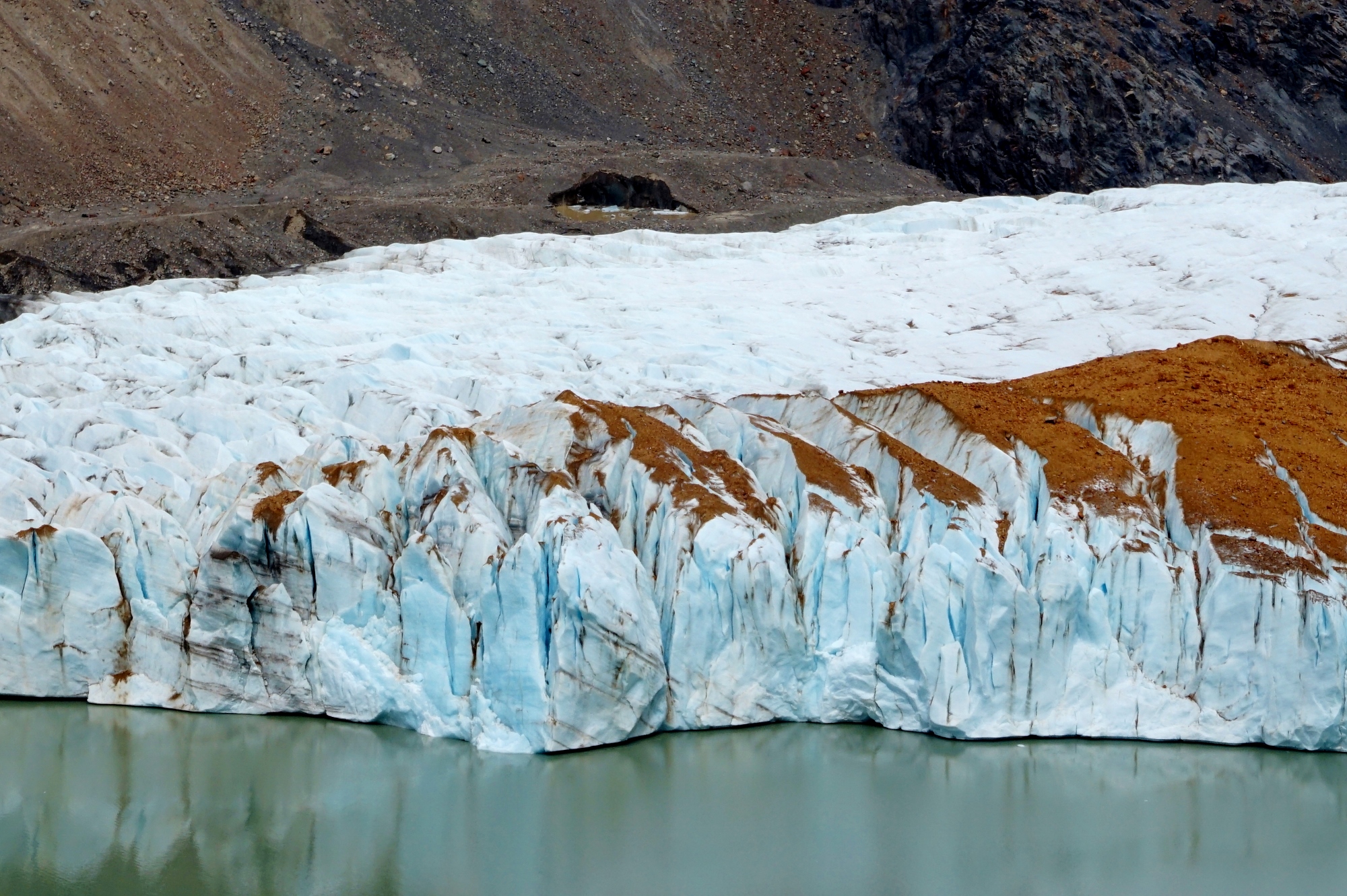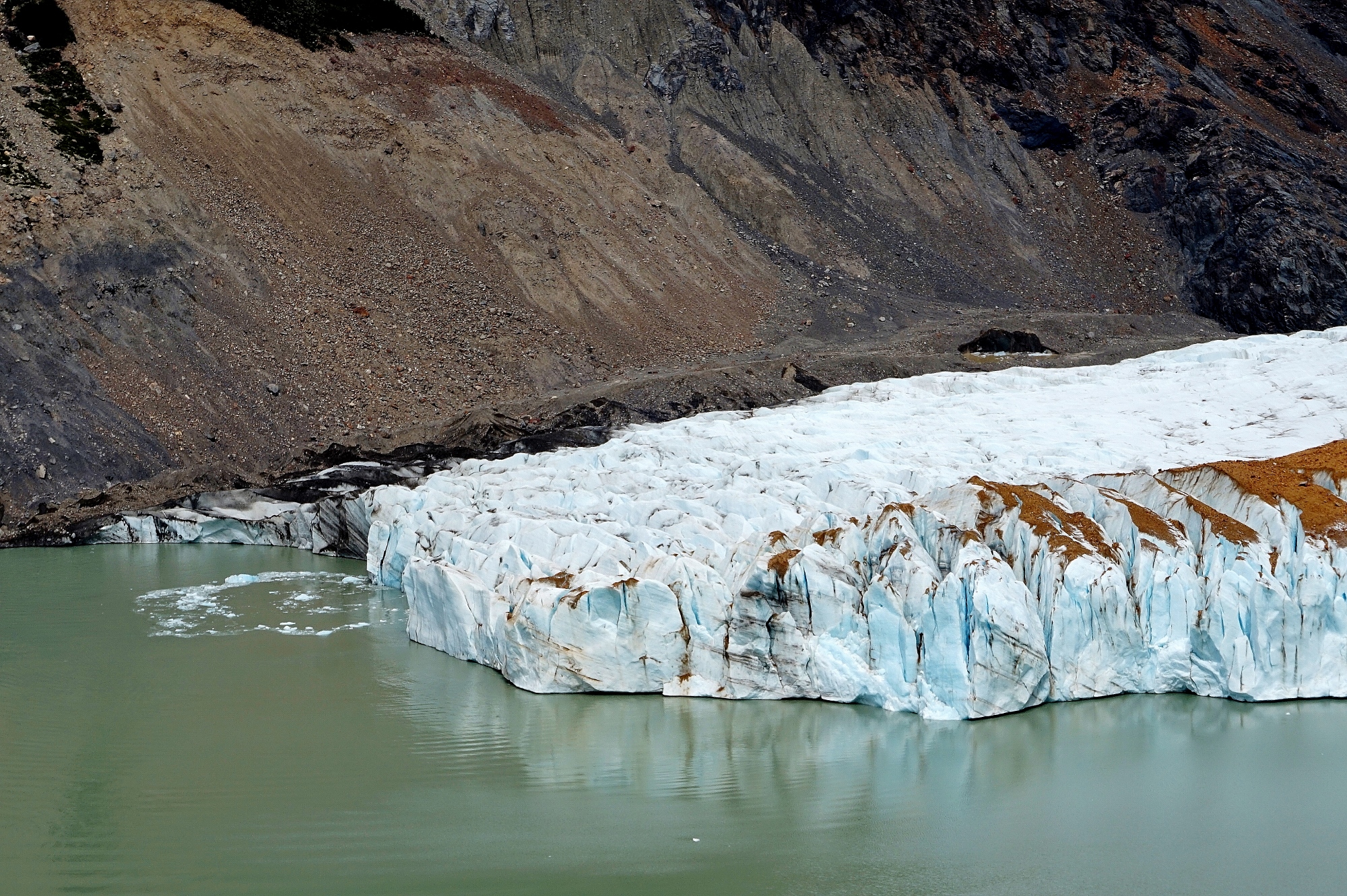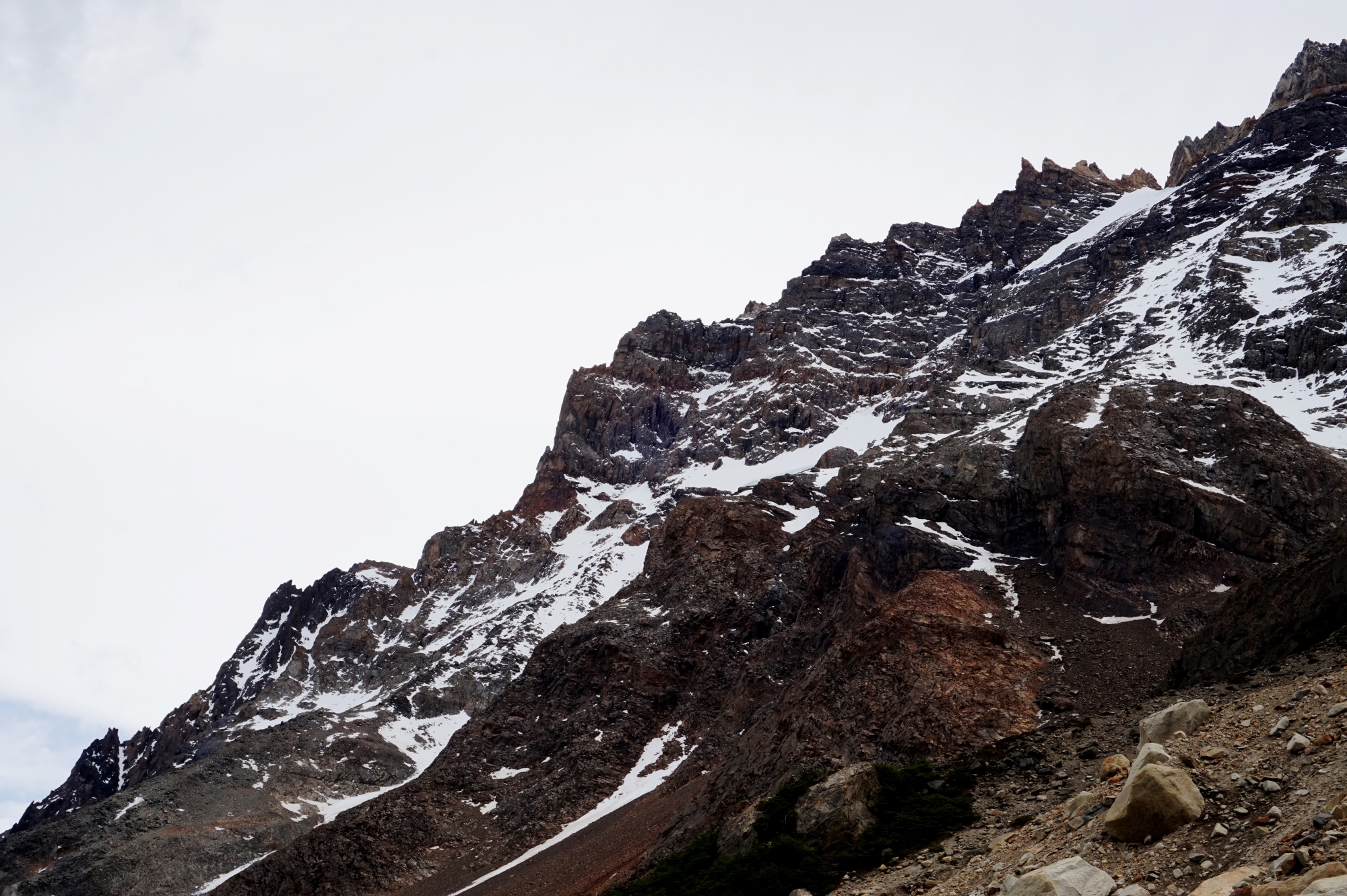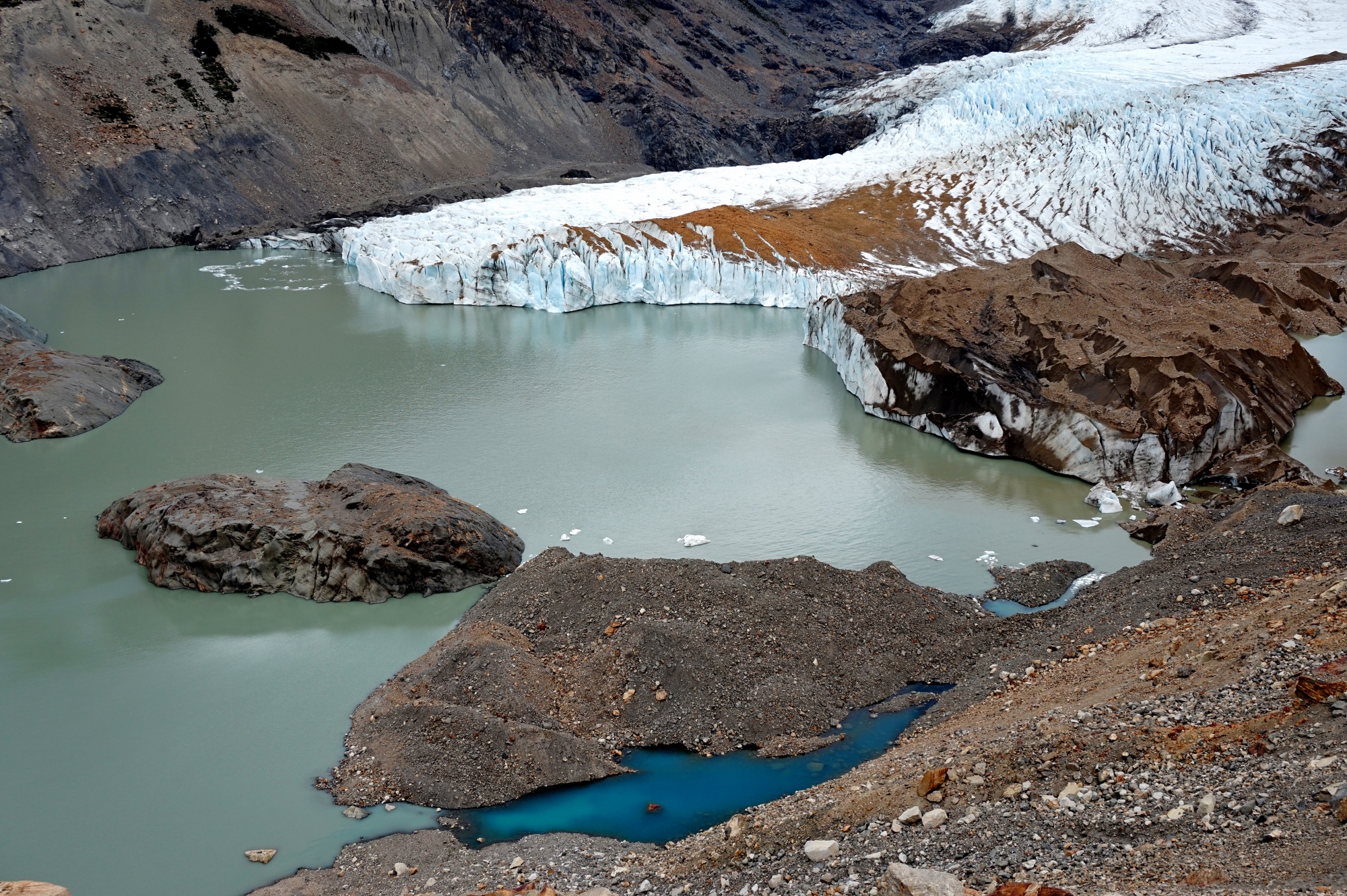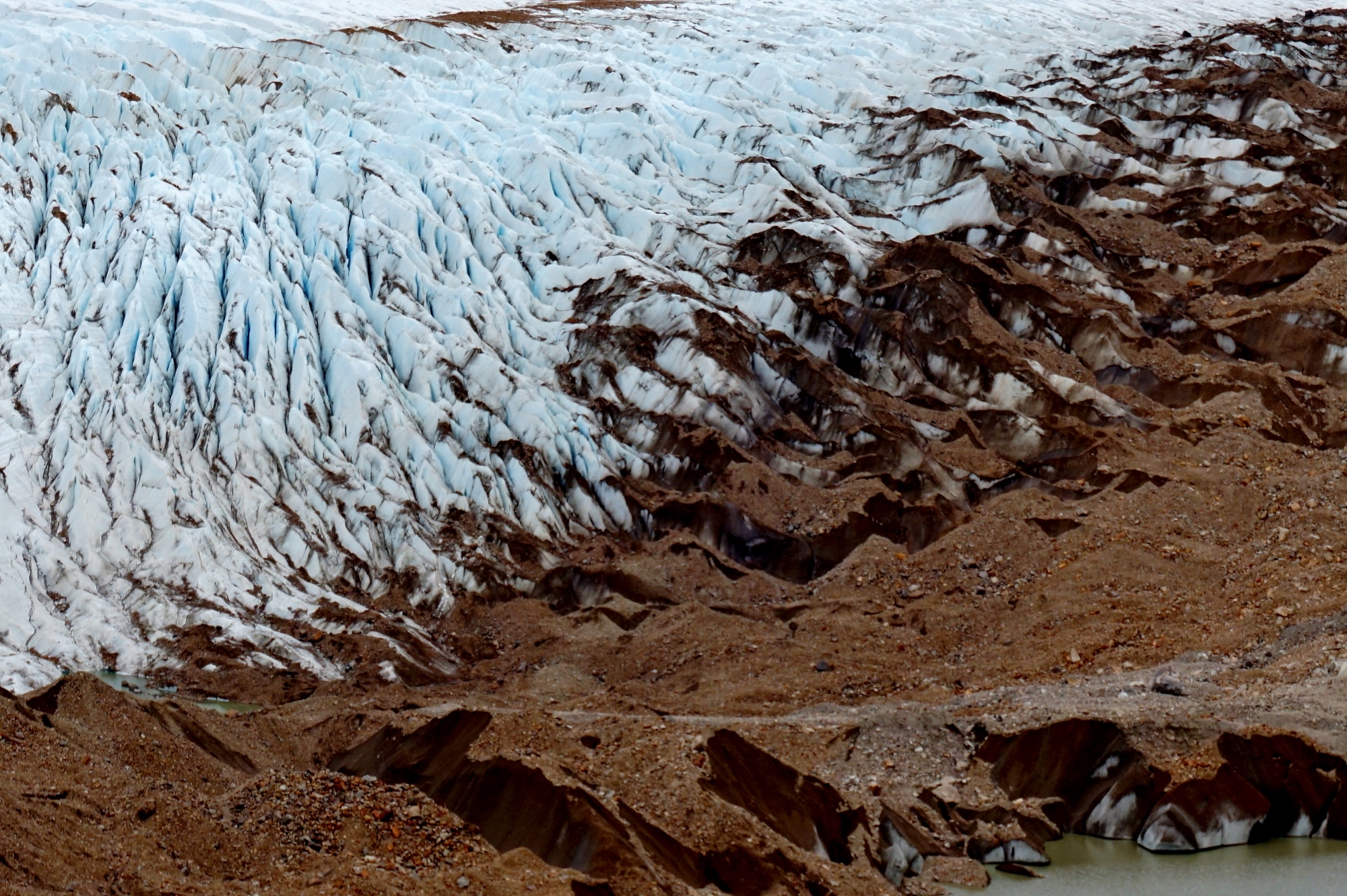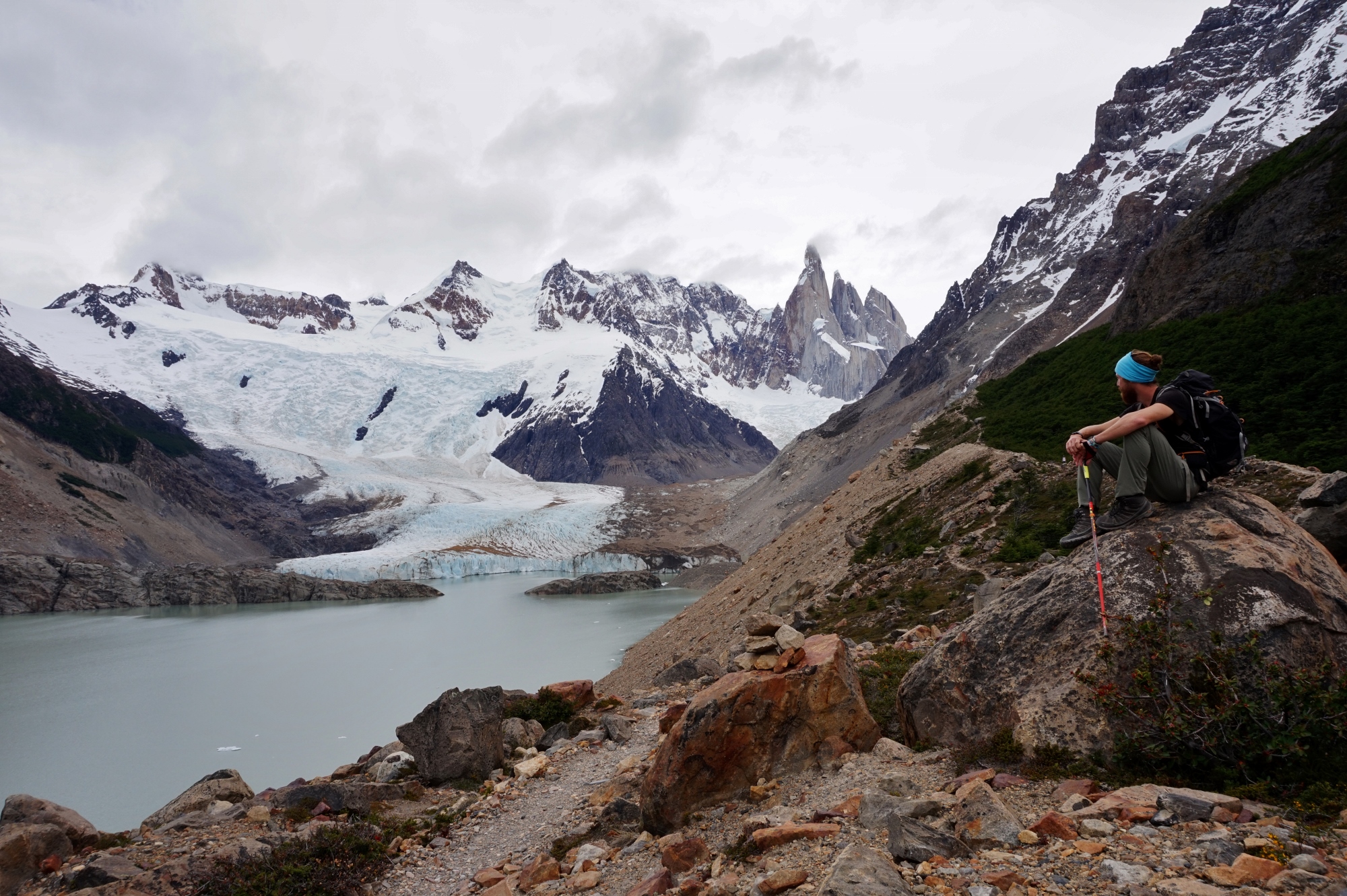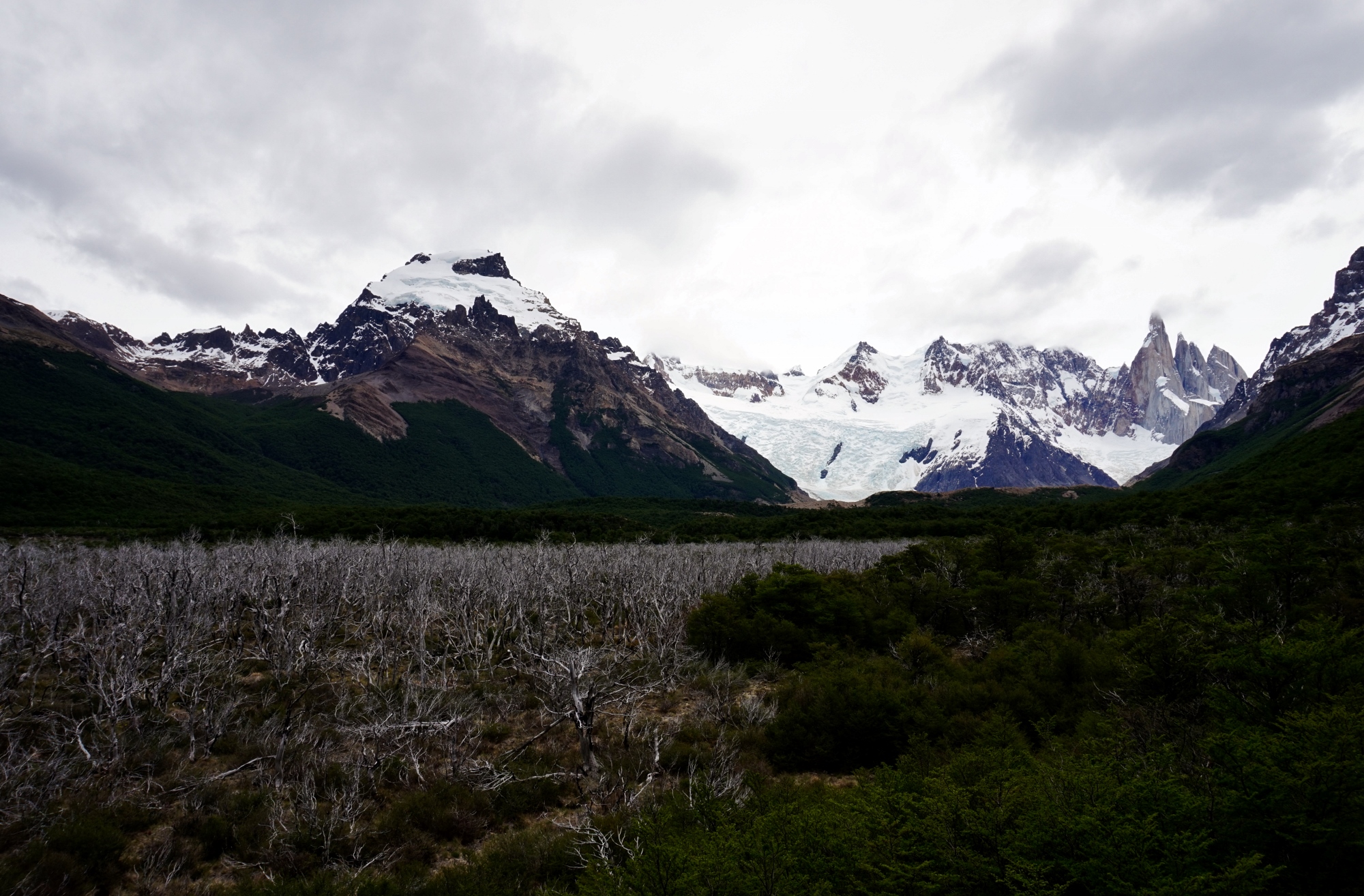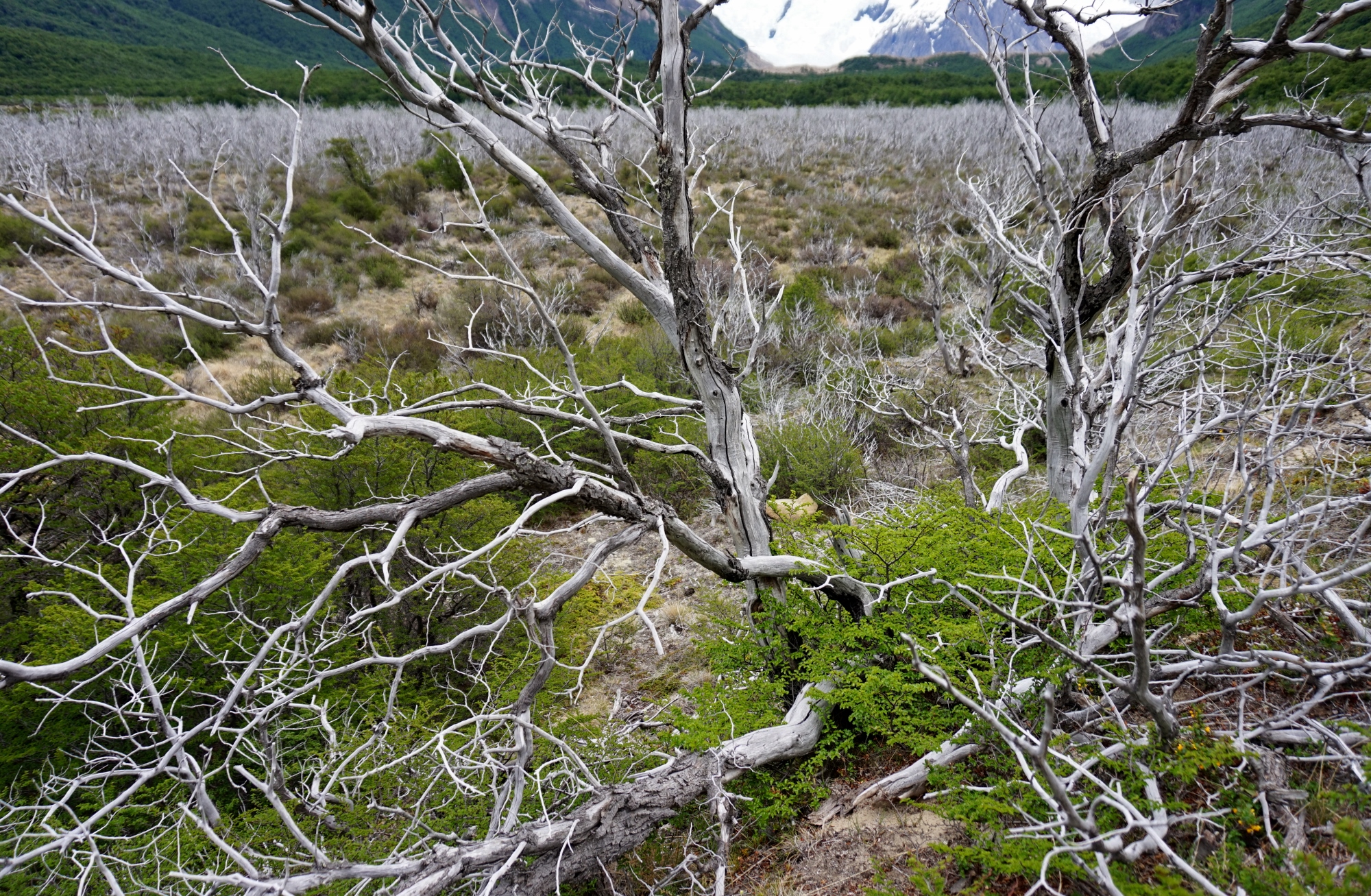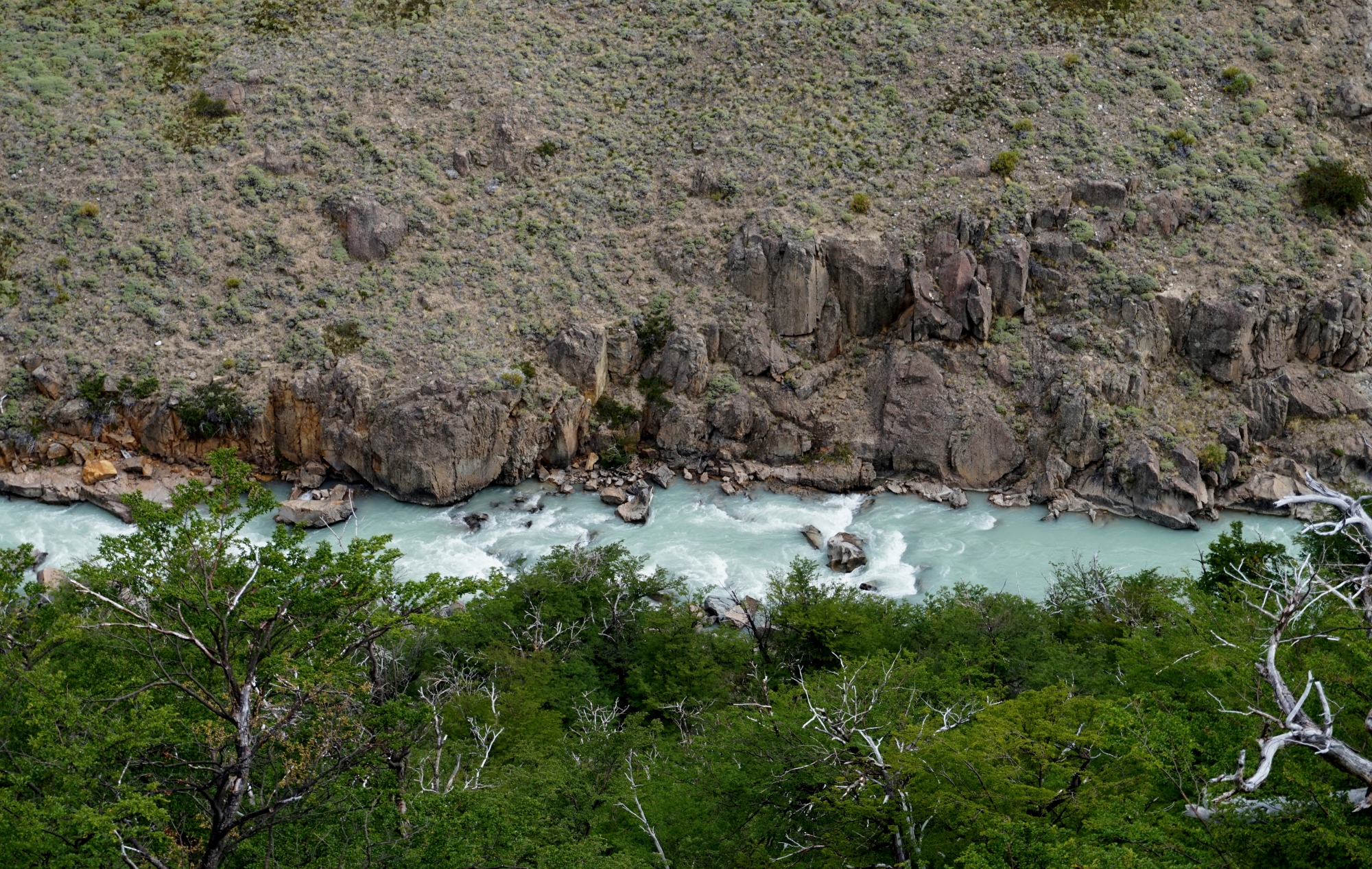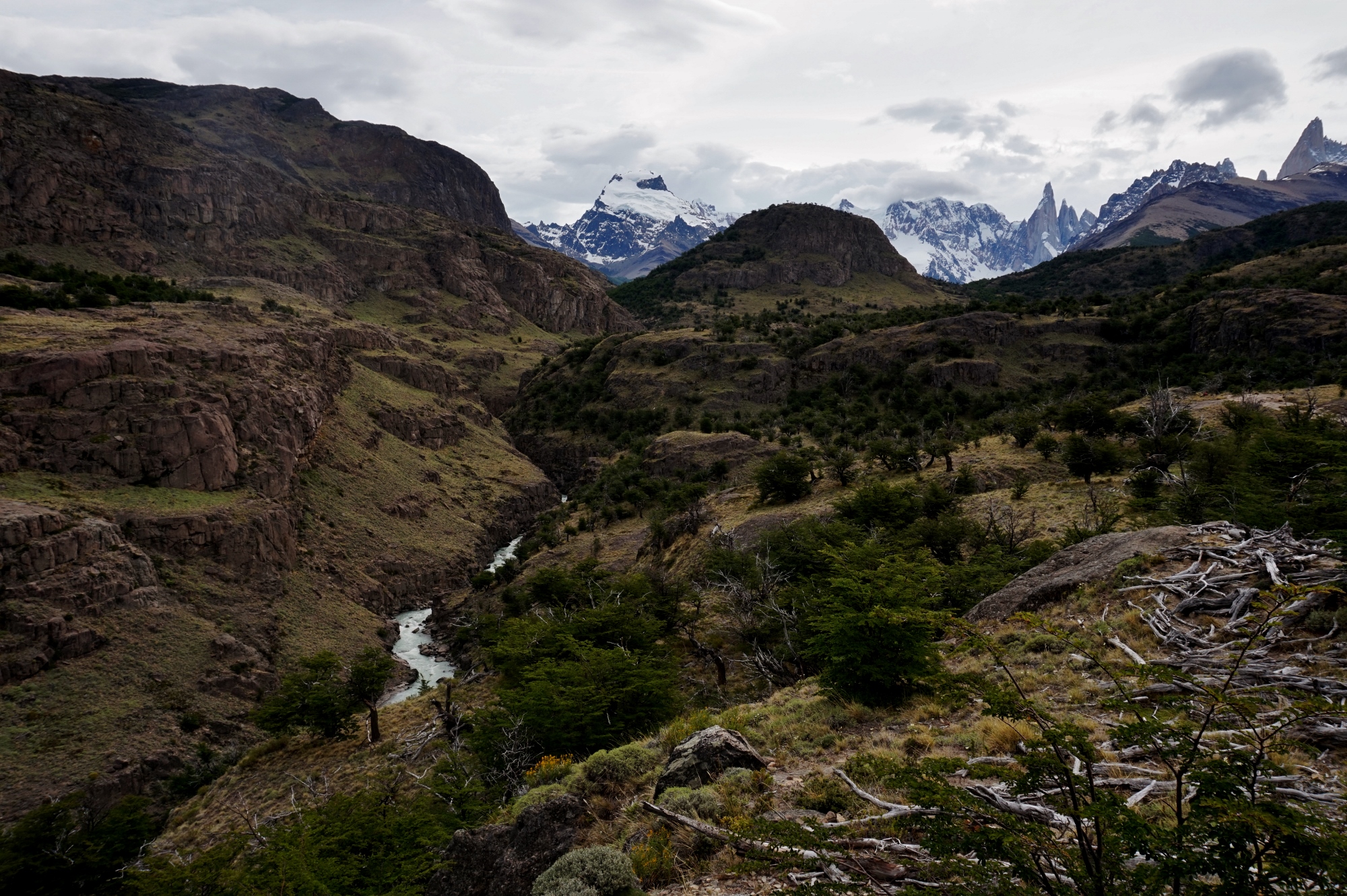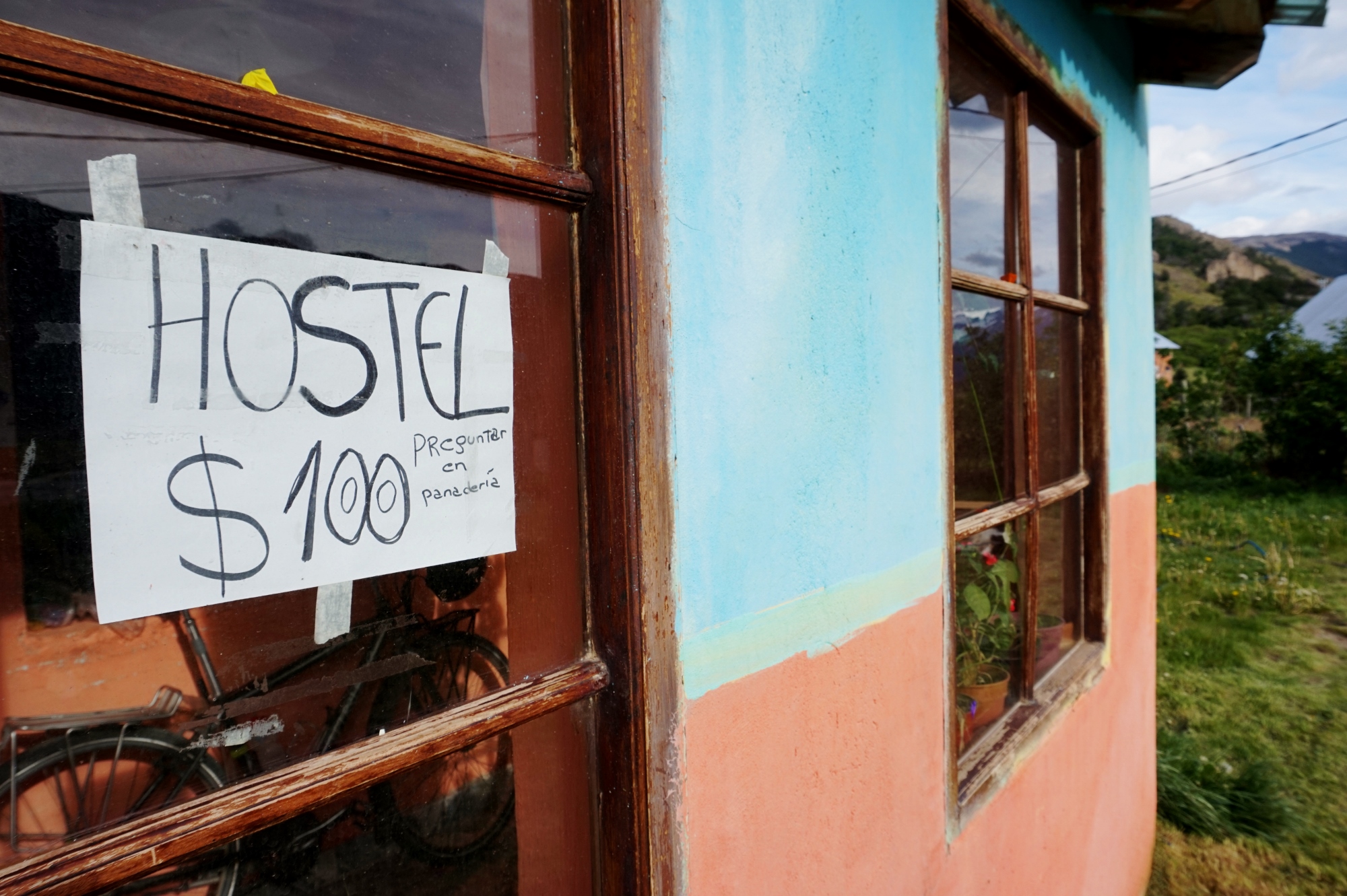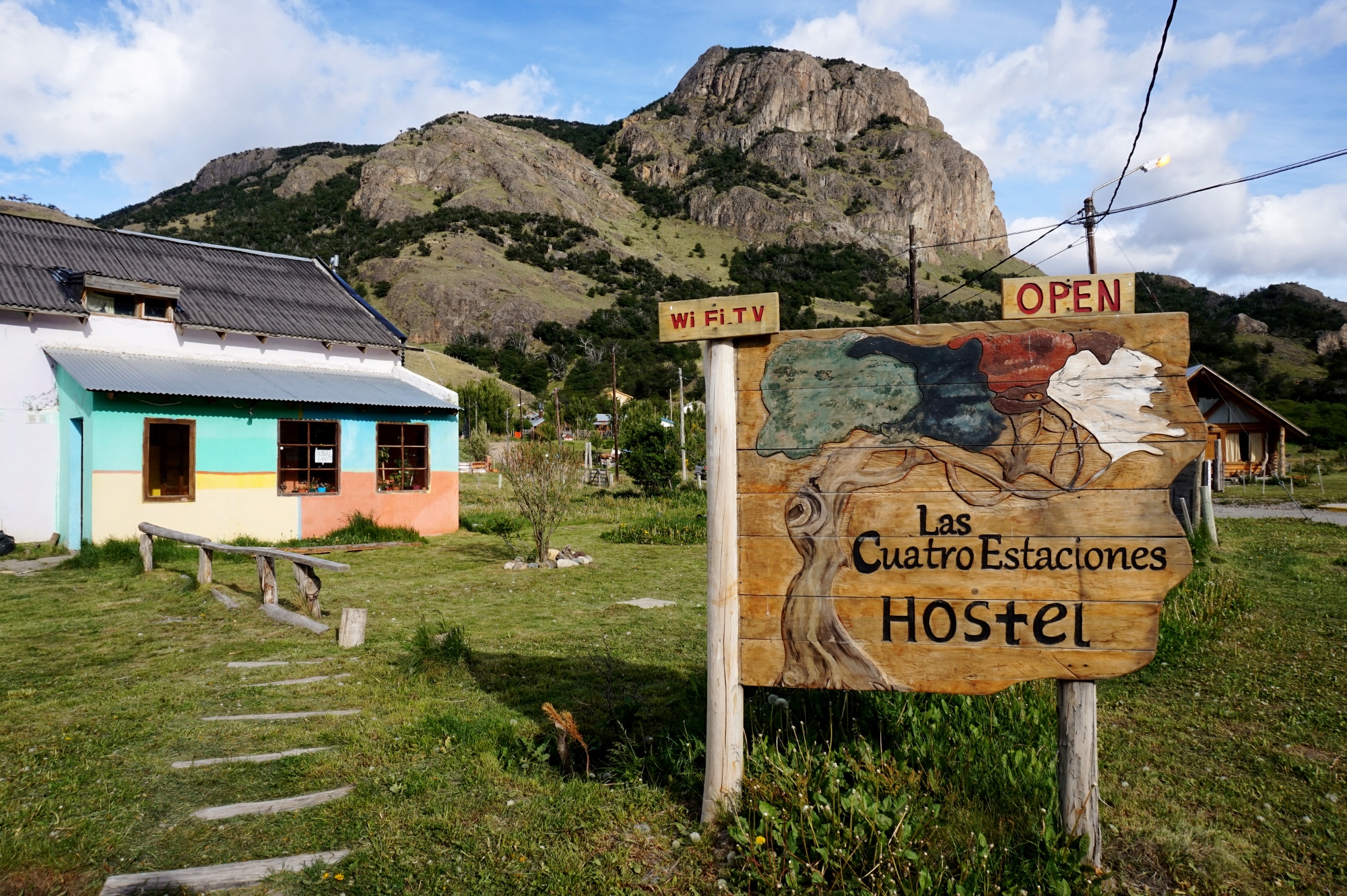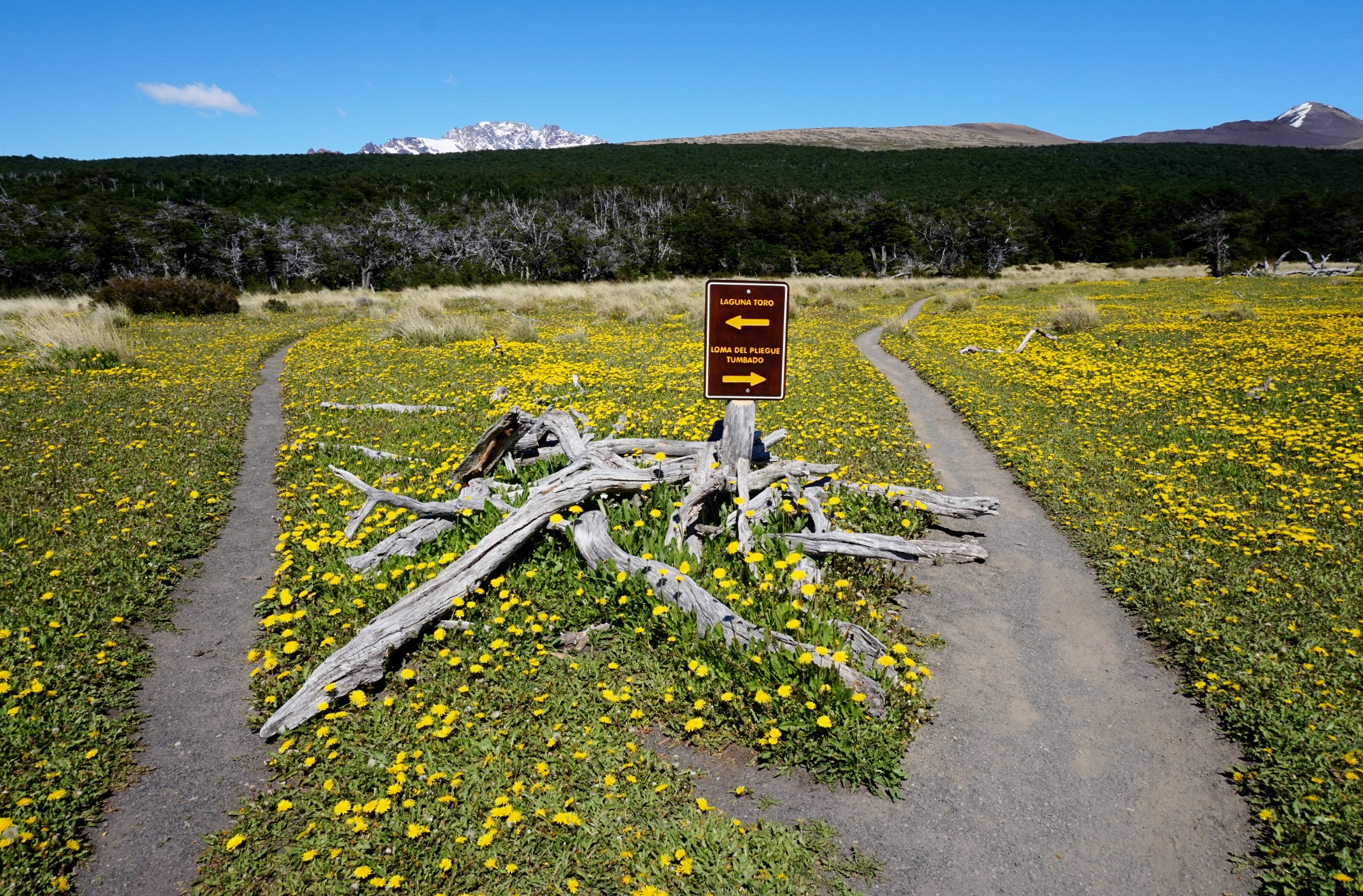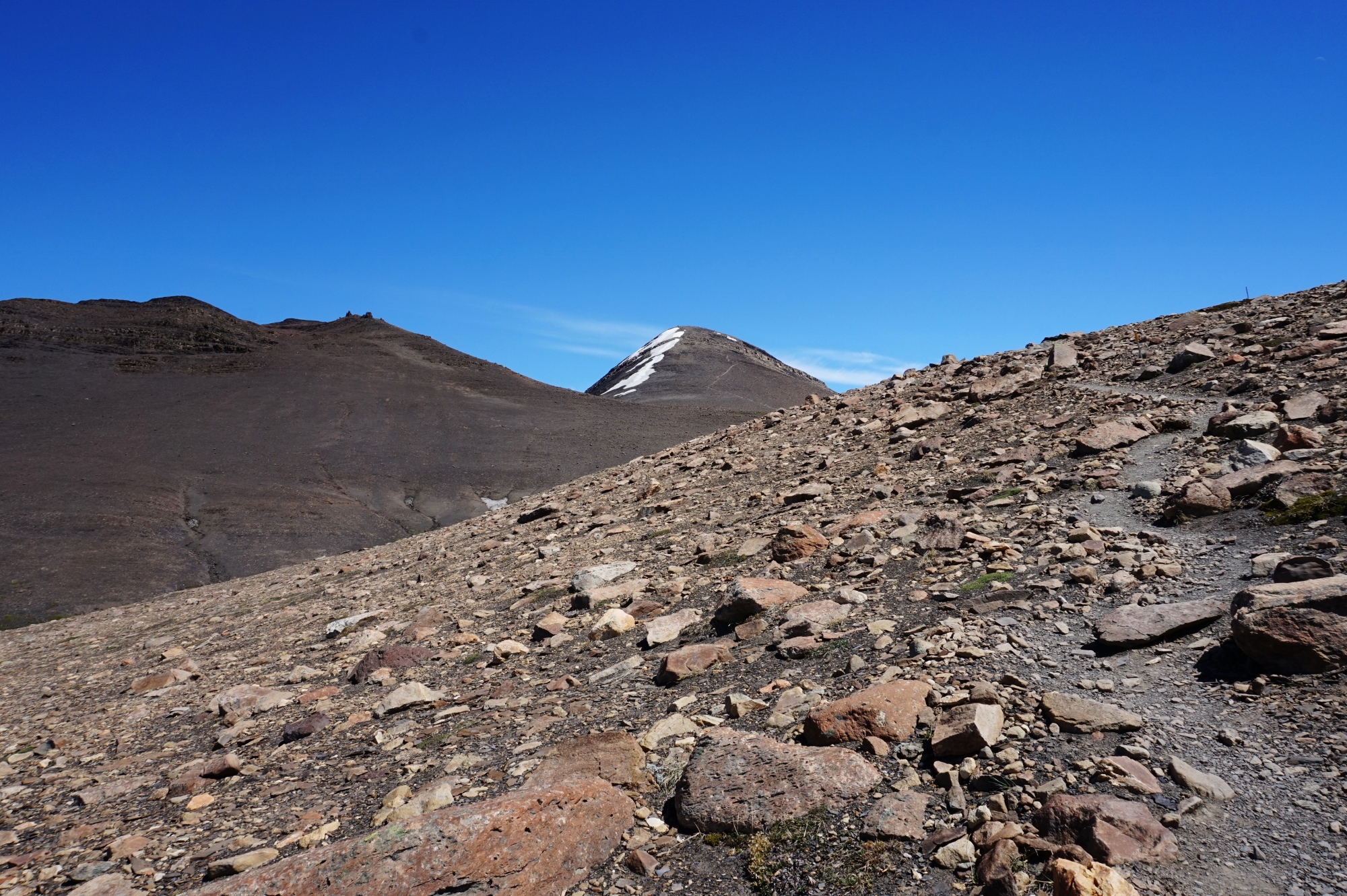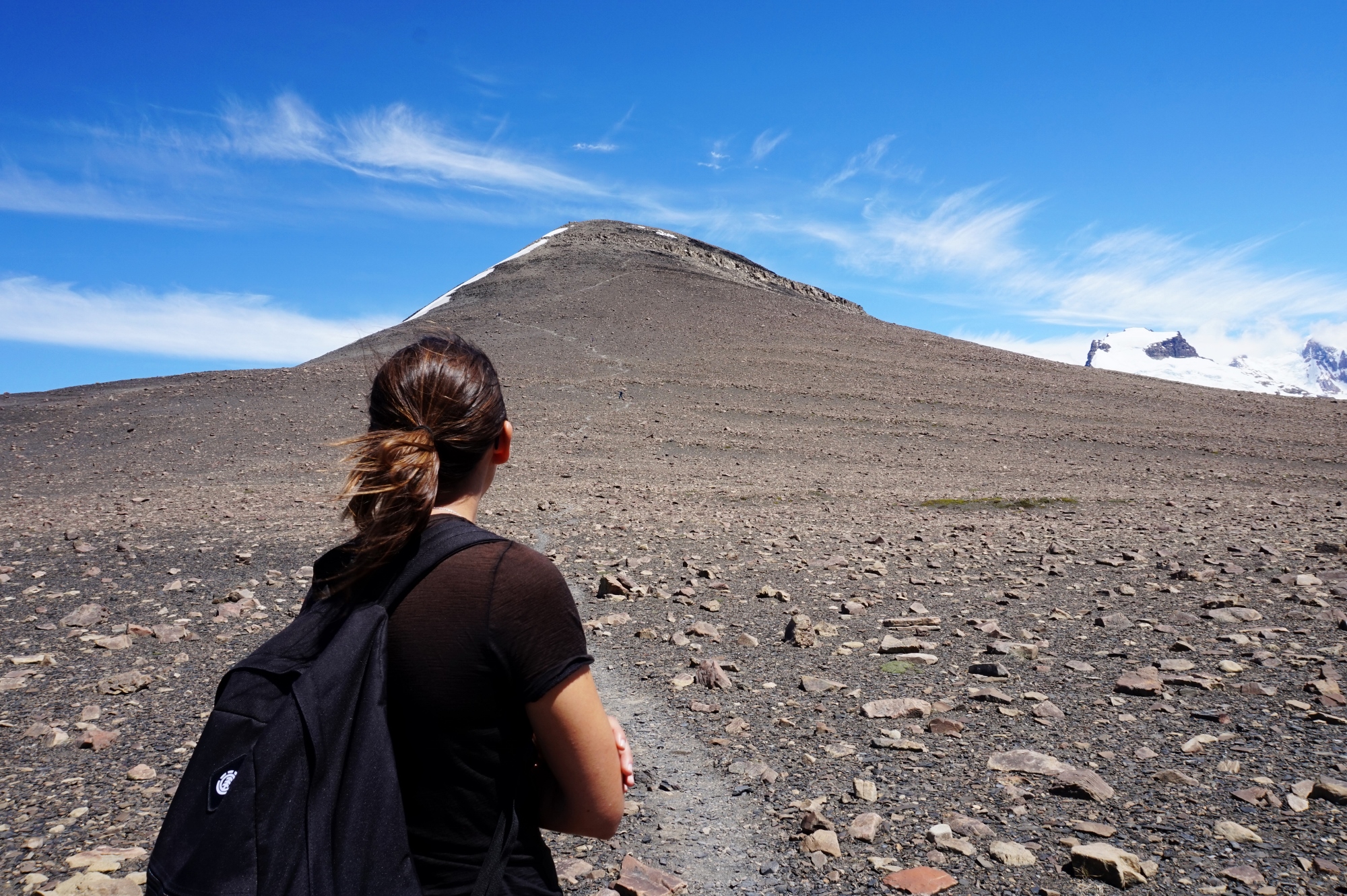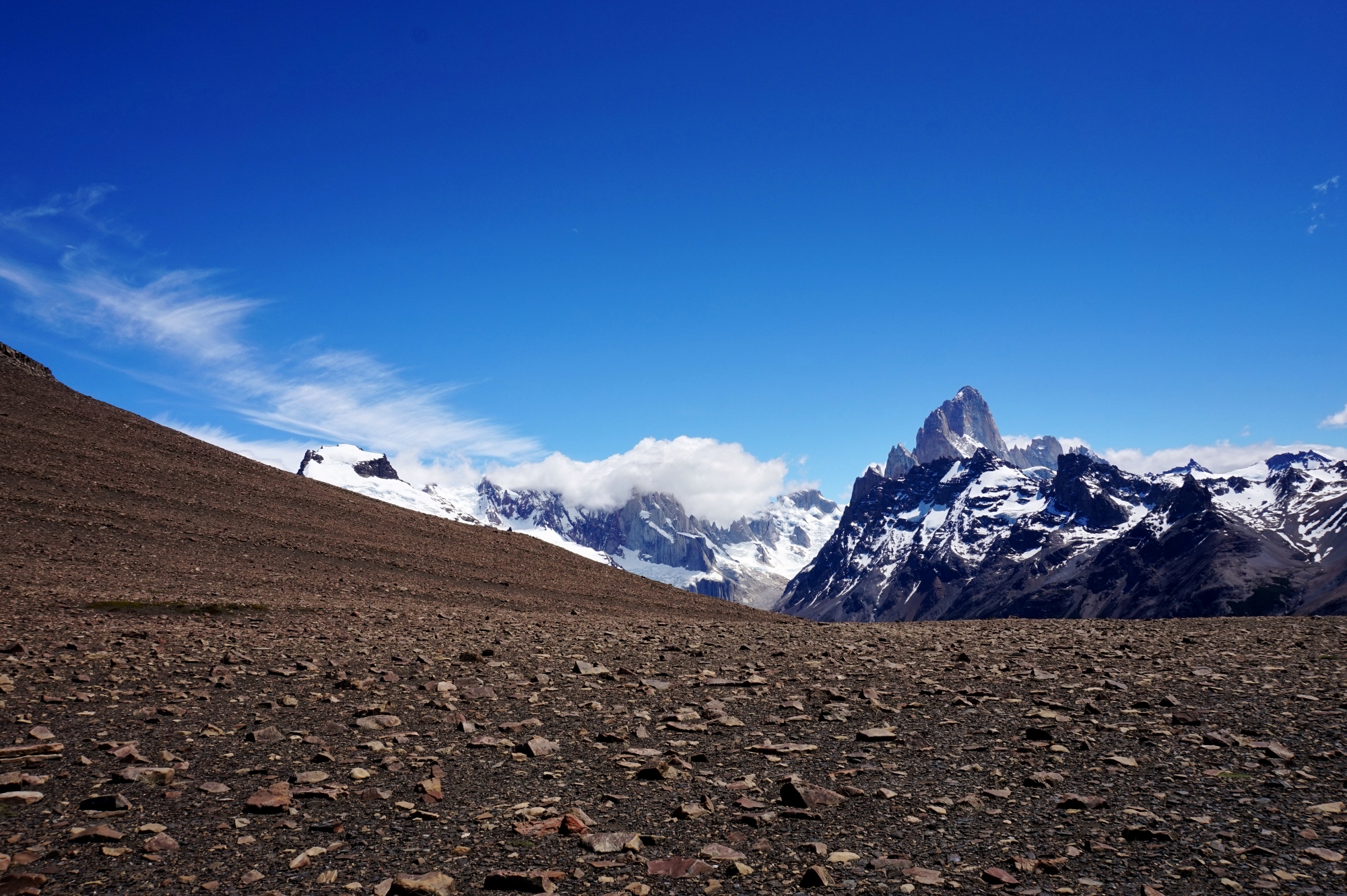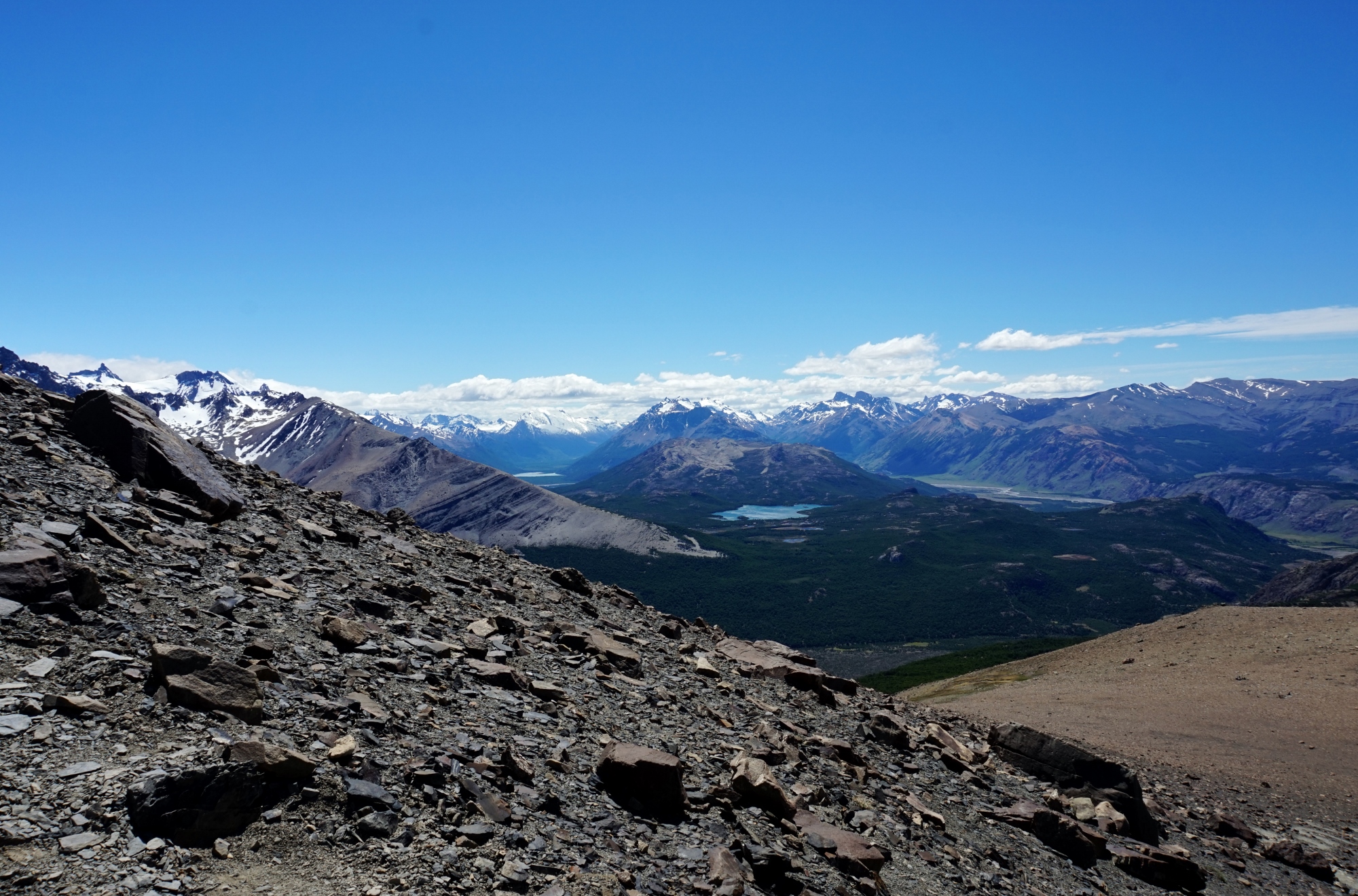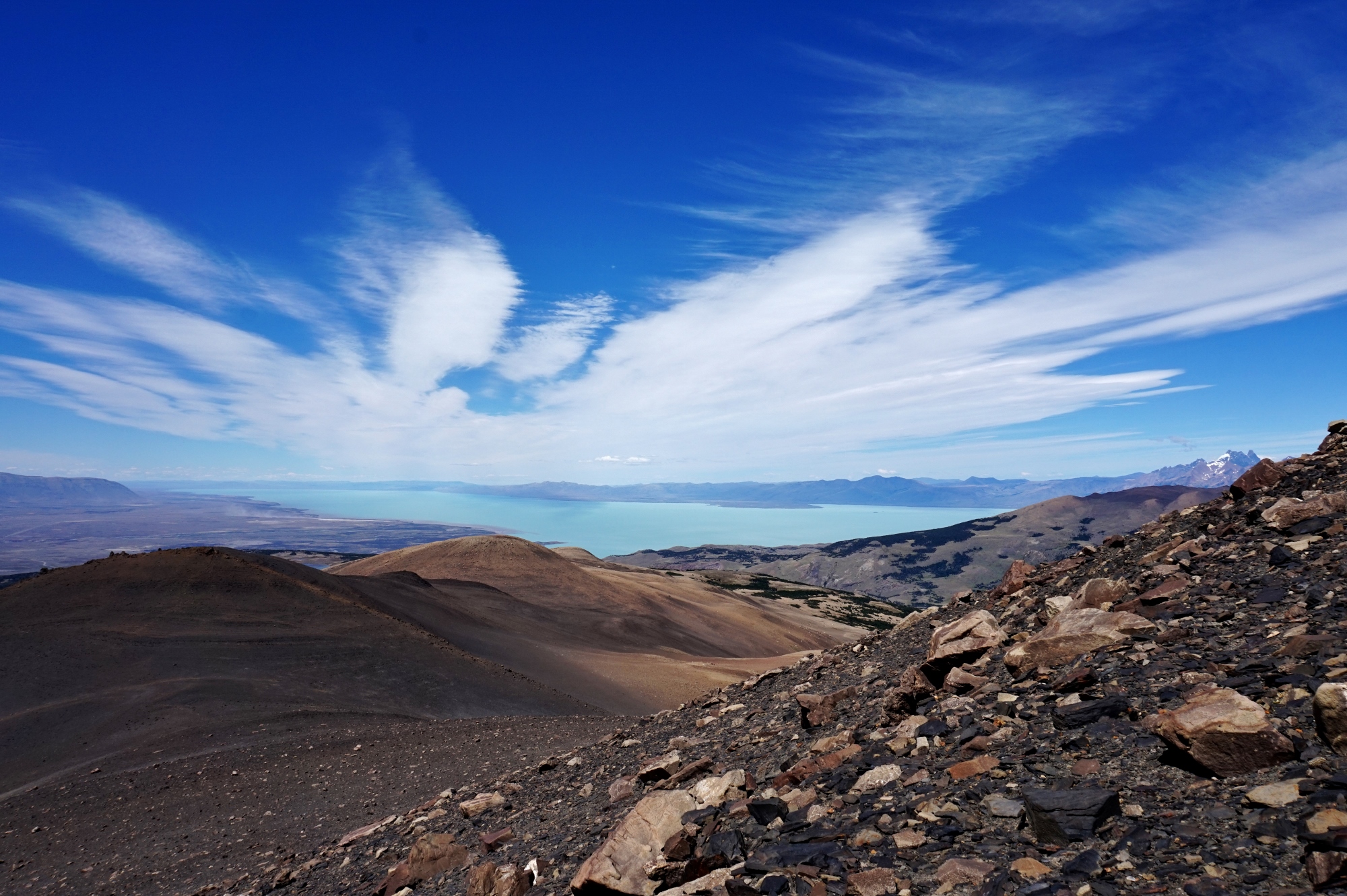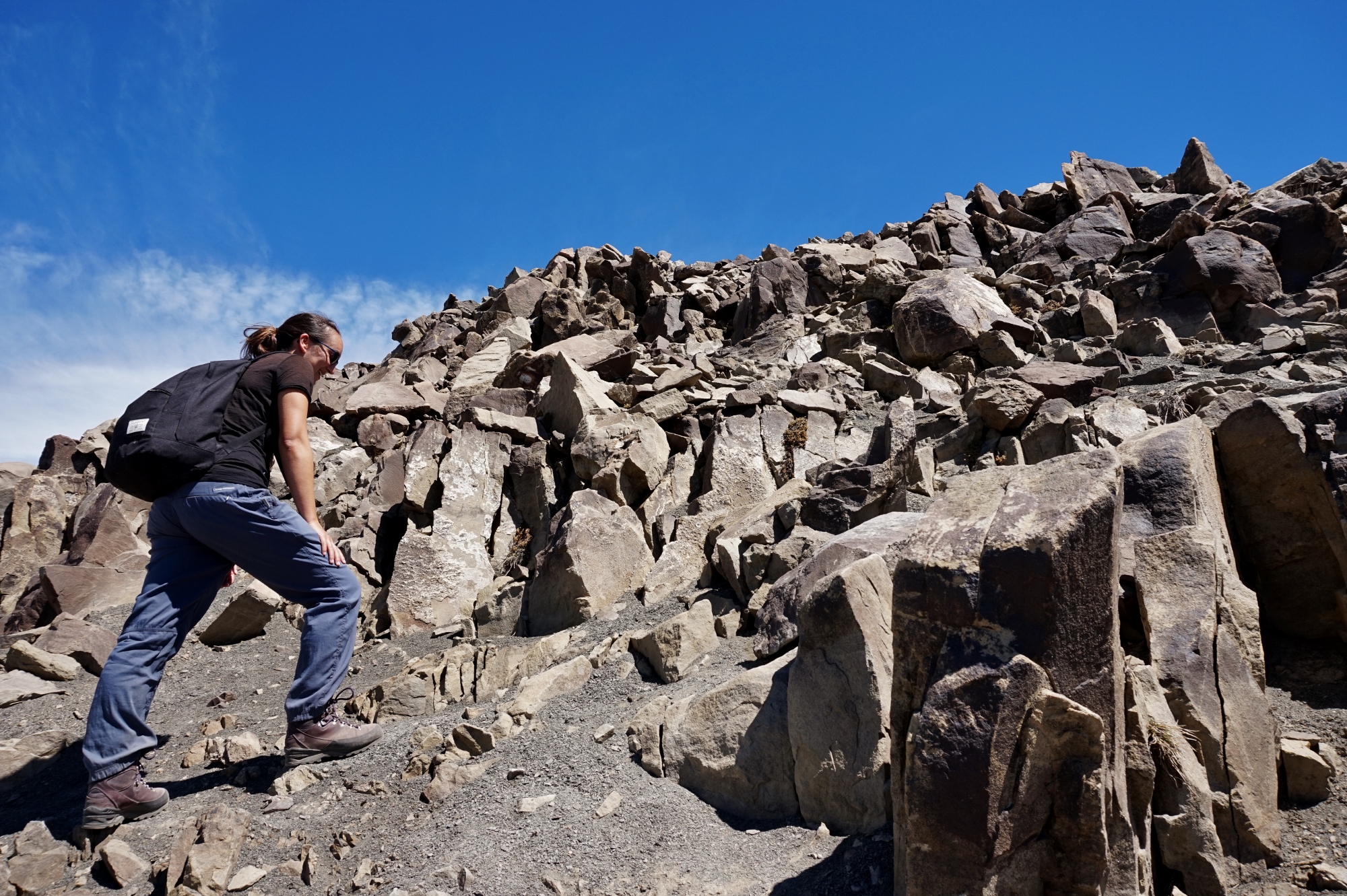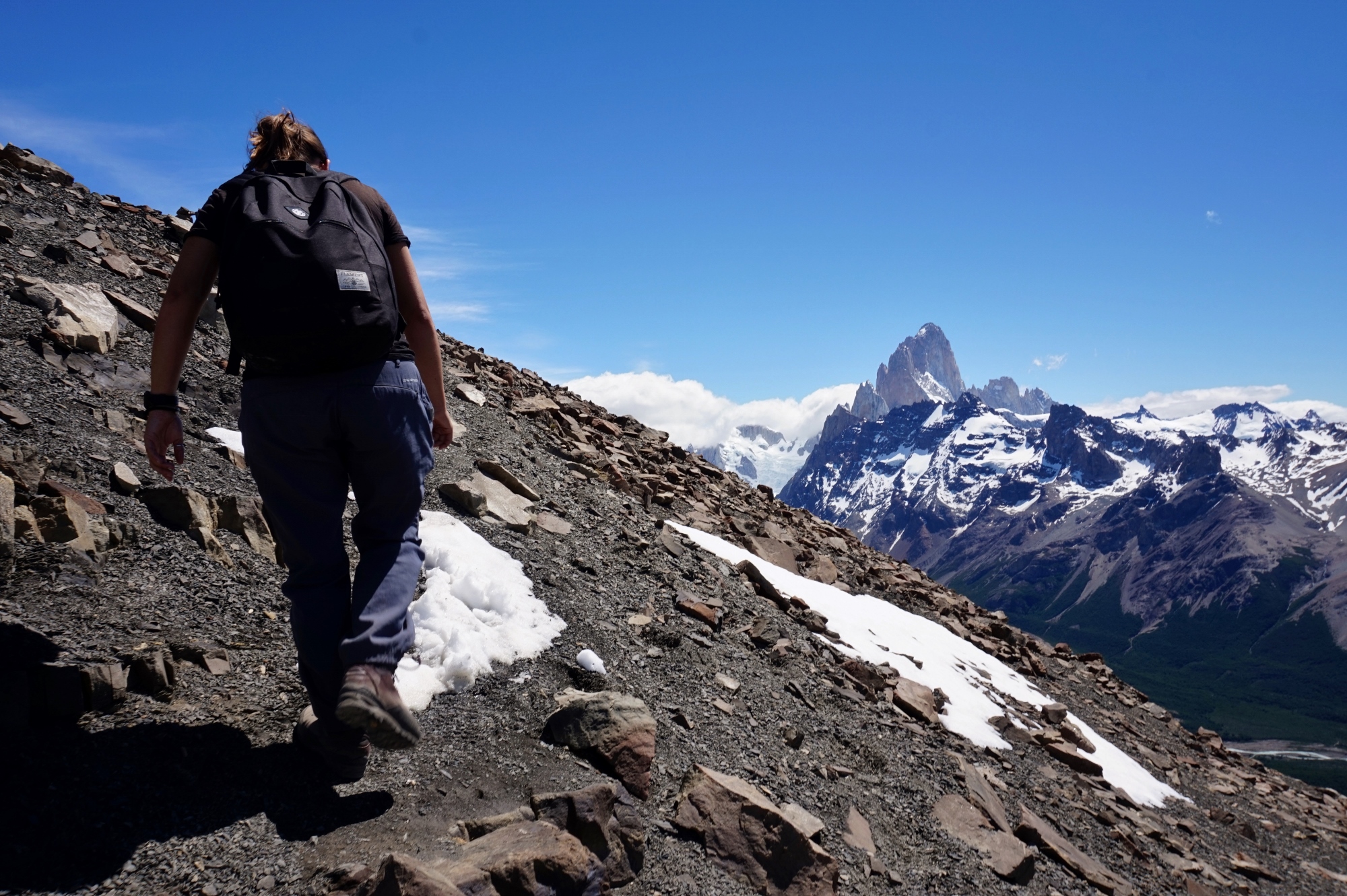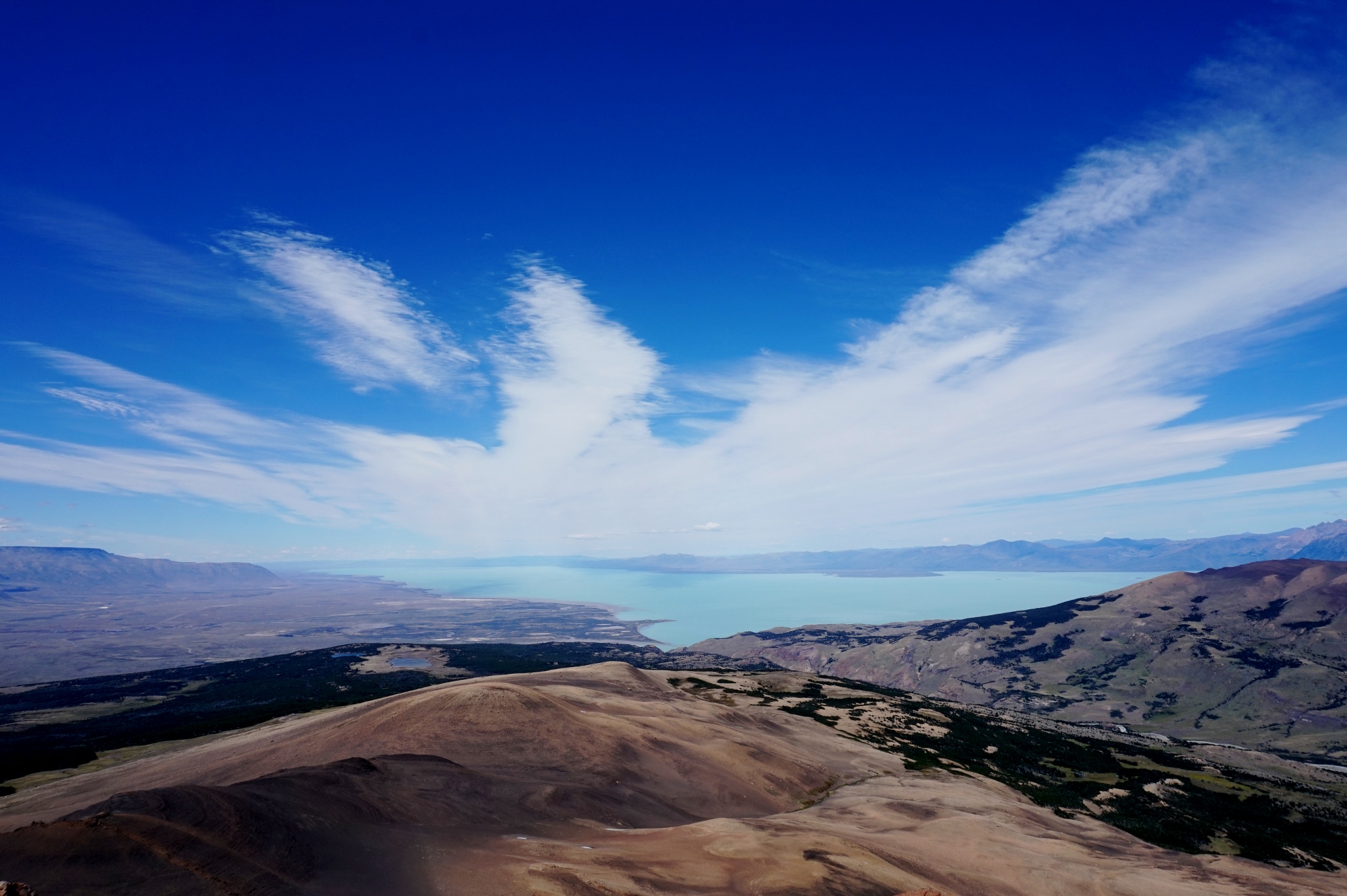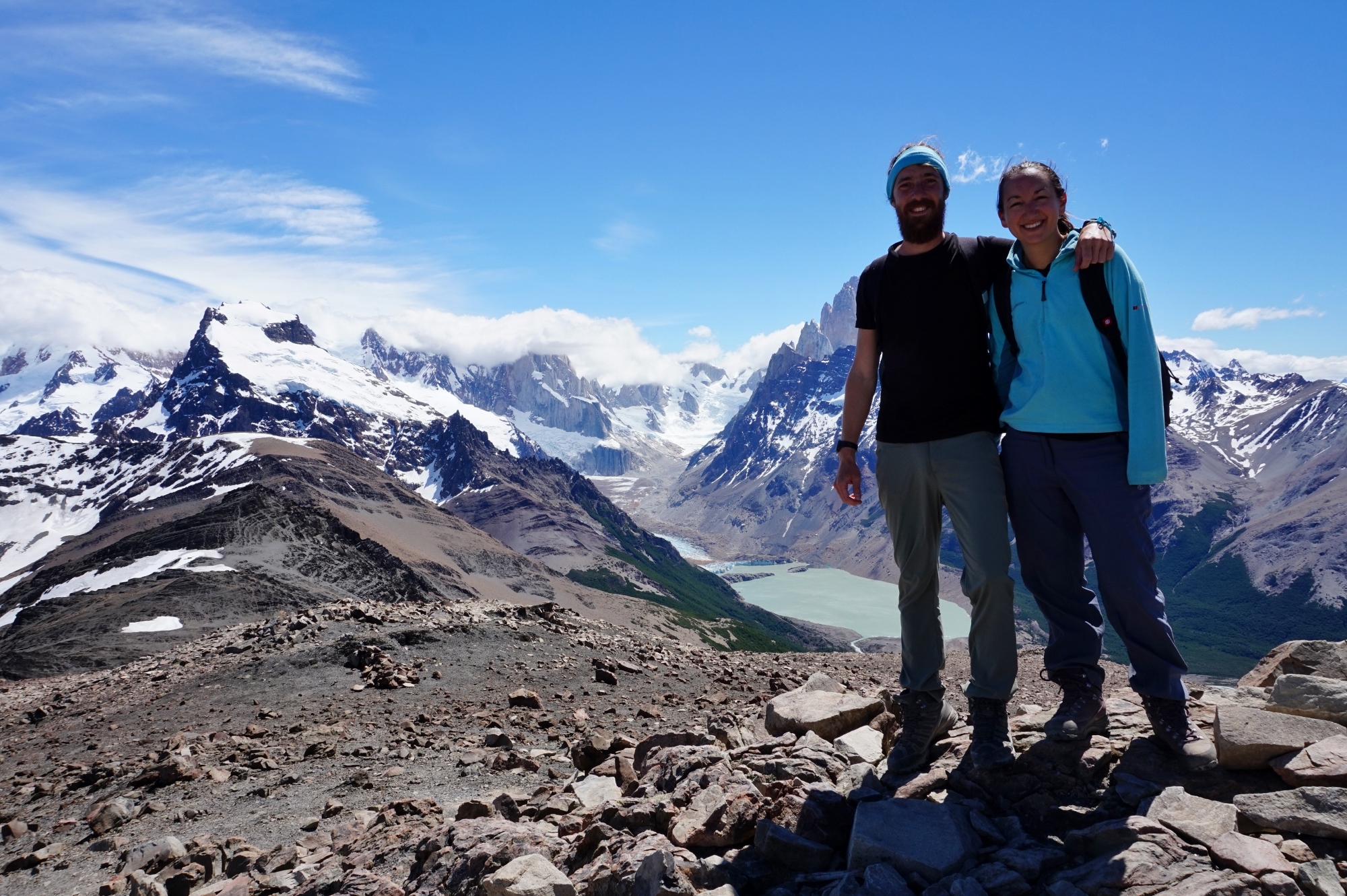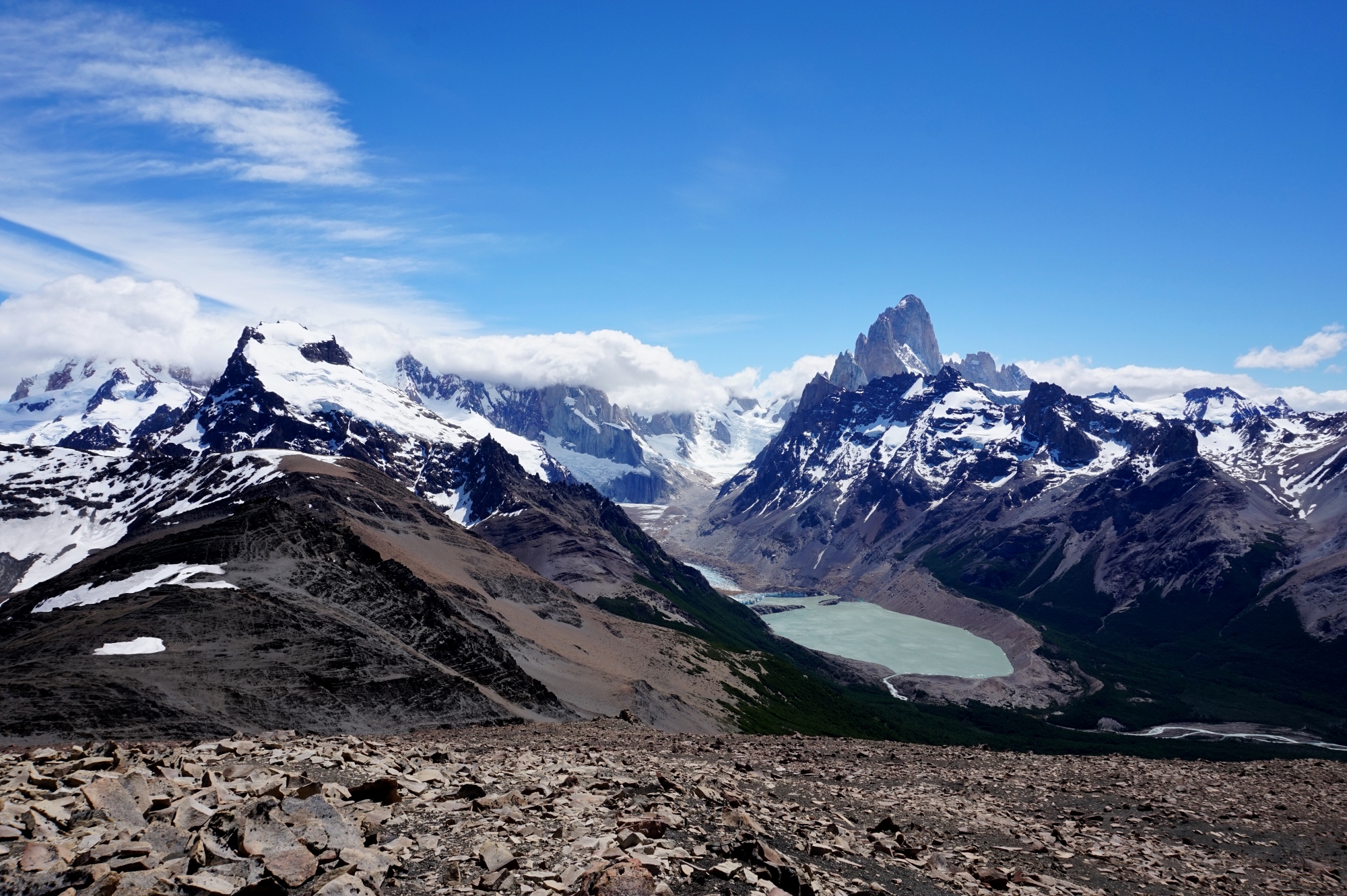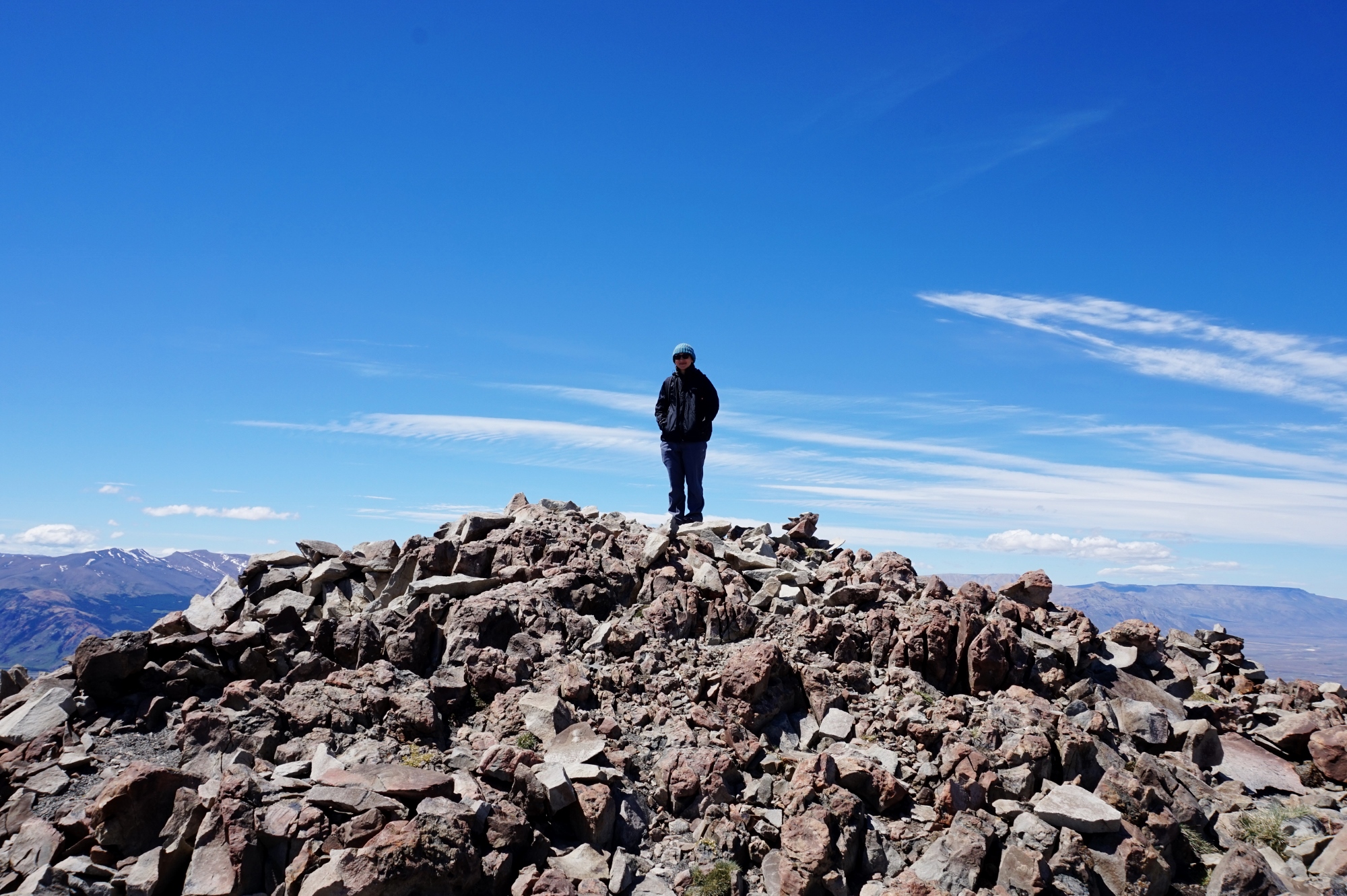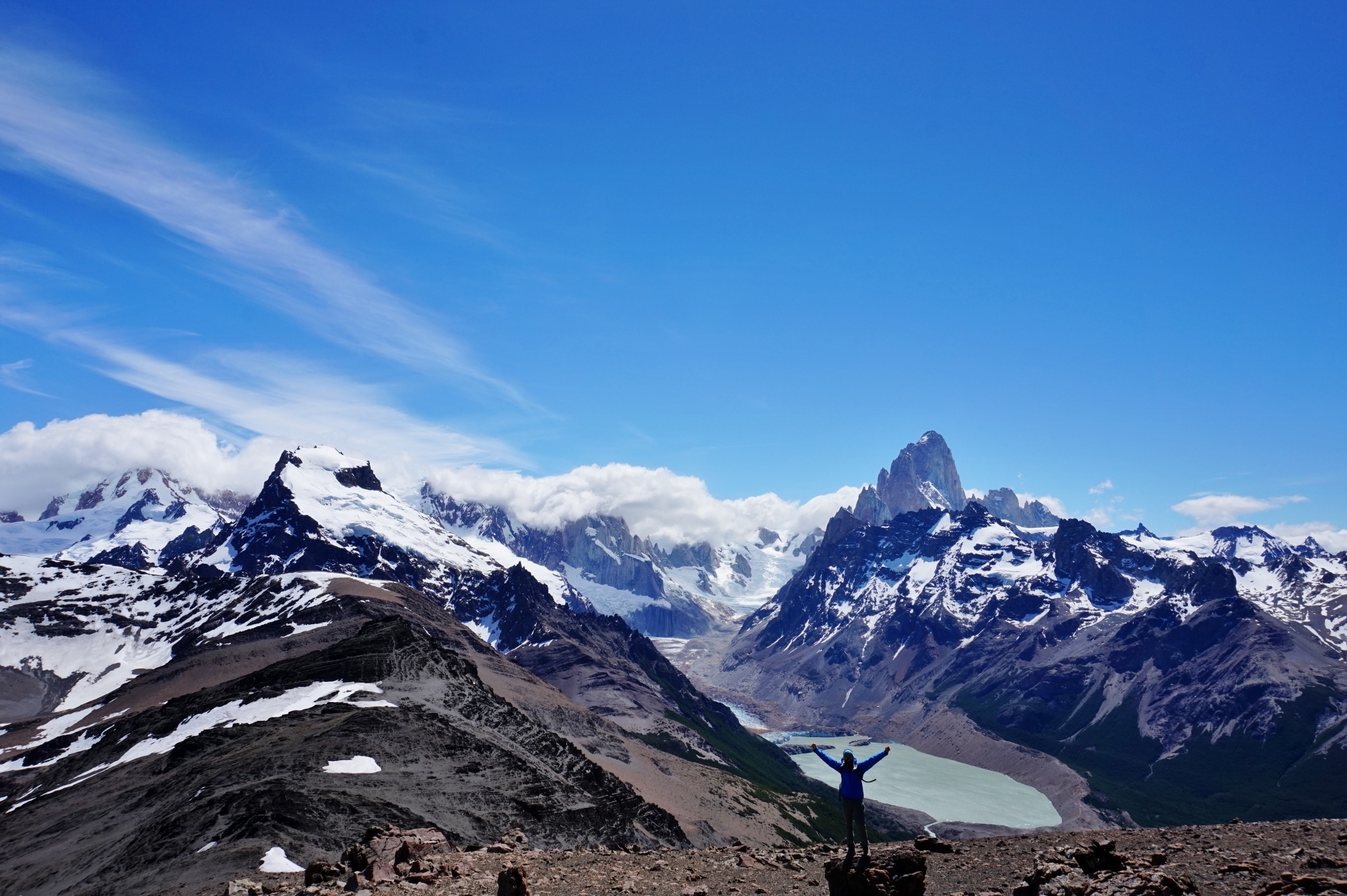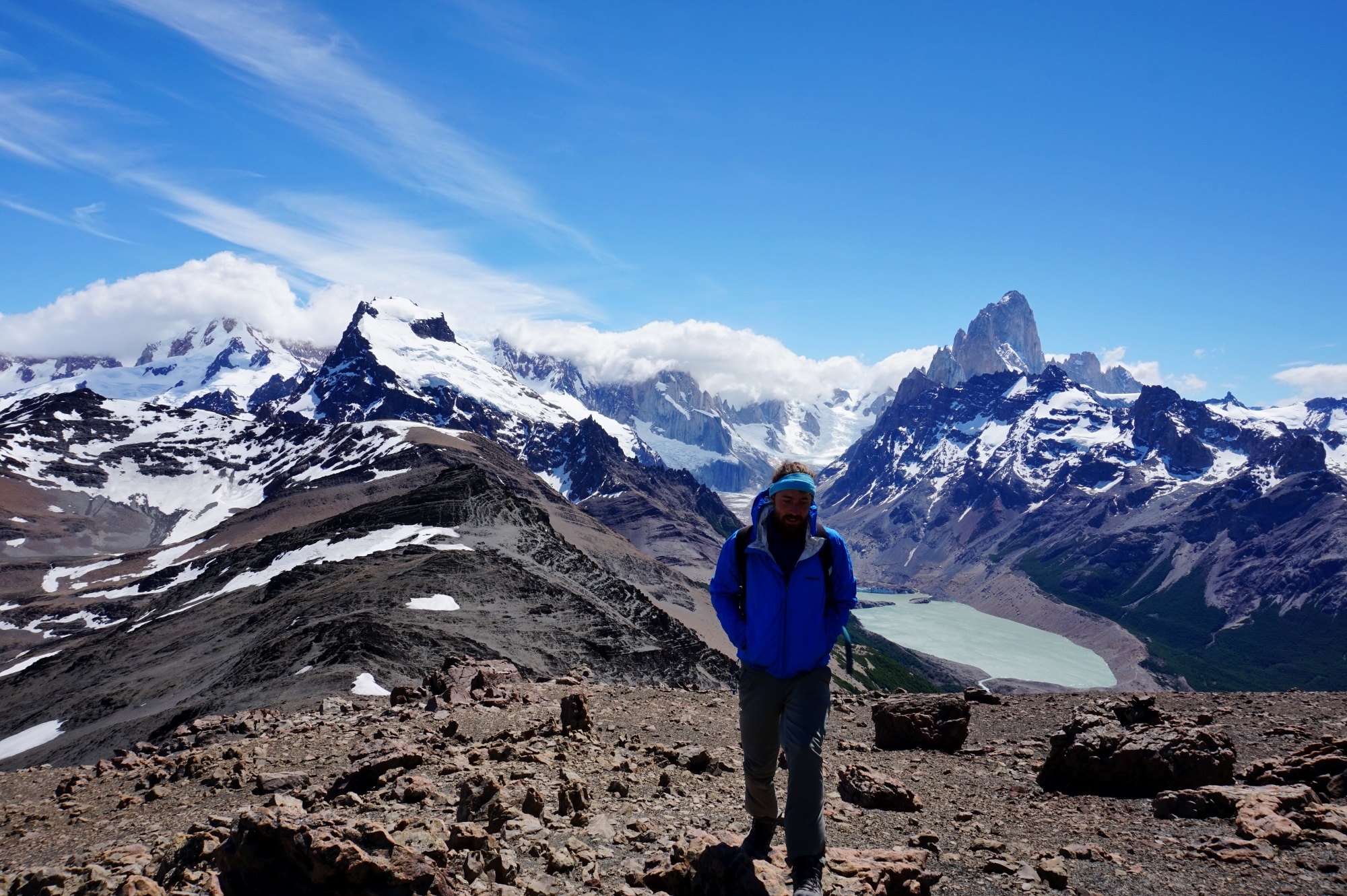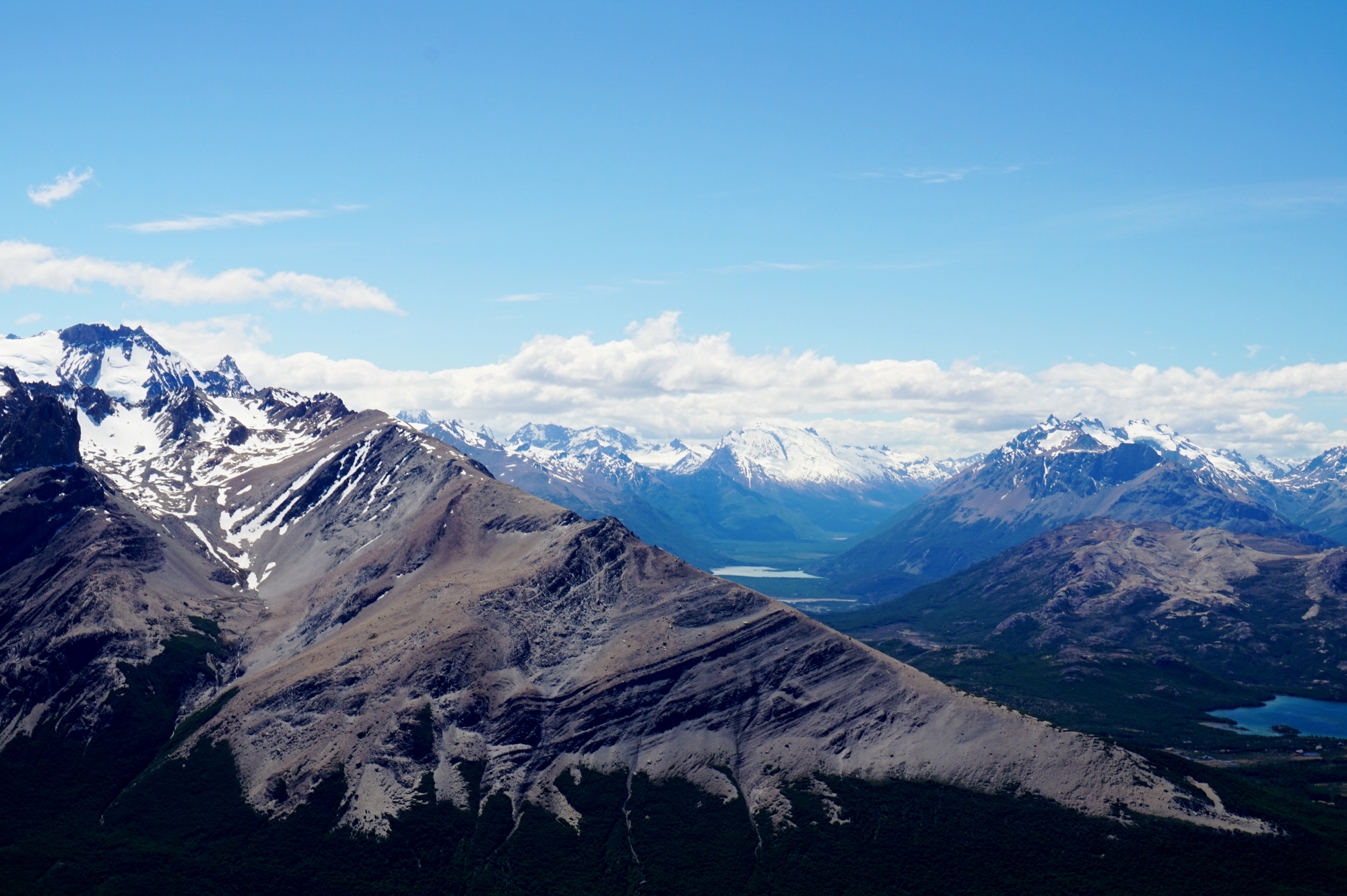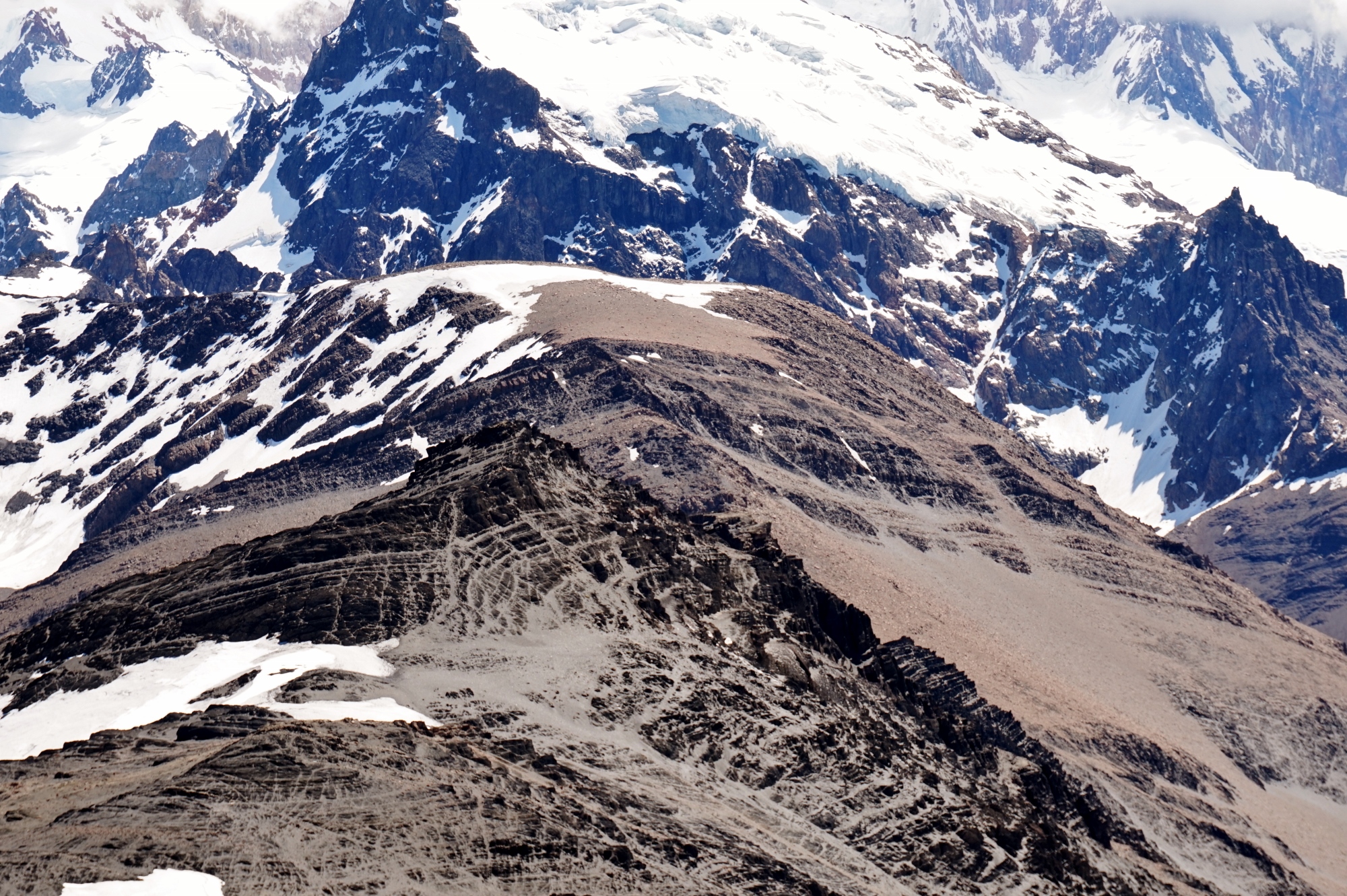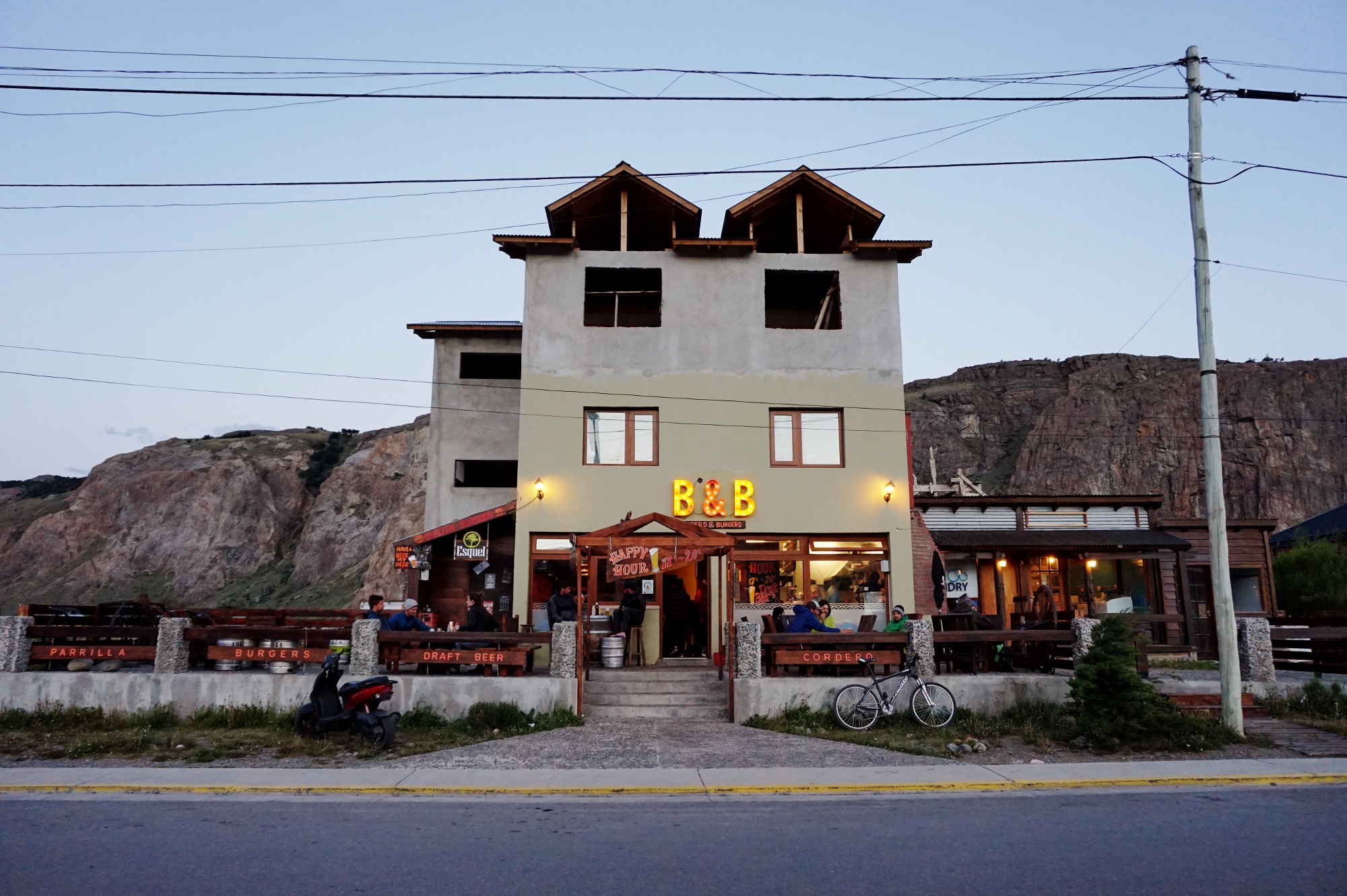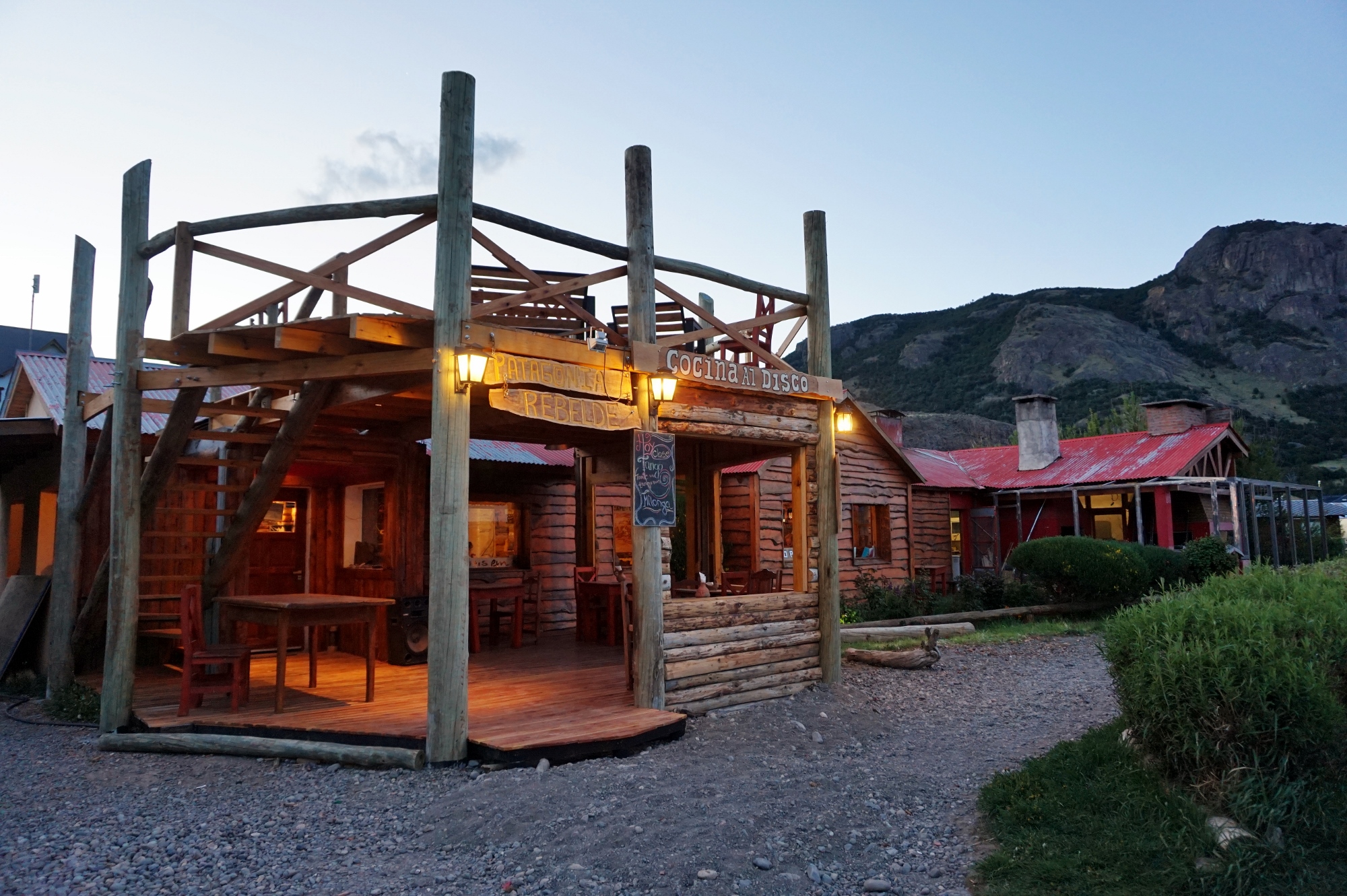EL CHALTEN

Beautiful mountains and turquoise lakes gave way to endless scrubland dotted with desaturated yellow and purple bushes, we were now riding Patagonia’s Route 40. (South Americas version of Route 66 in the States). Whilst blankly staring out the window a flash of red and brown galloped past. It was a traditional Gaucho (South American cowboy) in a red and gold buttoned tunic, black brimmed cowboy hat and knee high leather boots. We couldn't tell where he had come from or where he was going, we hadn’t passed a town in hours. As quick as he appeared he vanished into a cloud of dust. Other key sightings to break up the nothingness included: hundreds of lamas, a silver fox and a skunk. The Patagonian steppe is the fourth largest dessert in the world, and after 24 hours non-stop, I can believe it. Still it was a baron yet amazing landscape to witness and the drawn out two hour sunset was something else.
For a while and by a while I mean about three or four hours the road was more of a raked gravel track rather than a main highway. It was like riding inside a maraca. At one point in the middle of the night the bus started reversing and everyone woke up from the weird change in movement. Bleary eyed we looked out the window to see a car had gone off the road. Our driver got out to help him, and together they pushed the car fully into the ditch at the side, I guess so it couldn’t be hit by speeding vehicles. We thought the driver of the car would hop onto our bus as we had hardly seen any towns since passing through Esquel and El Bolsón hours before, but to our horror we saw as we drove off that he had been left standing by the road side! However minutes later we passed by a tiny village, we hope he had a friend coming to collect him as it was freezing!
Eventually the dusty dry terrain of pale green and grey moved aside to reveal the stunning snowy towers of Fitz Roy, standing proud over the tiny village of El Chaltan. We were now deep in Patagonia!
Known as the hiking capital of Argentina, this place did not disappoint. We arrived around midday, and were hoping to start hiking in the early afternoon. Firstly we needed to drop off most of the contents of our bags at a hostel, rent a tent, sleeping bags etc and buy some supplies. We were setting off to do a three day circuit that would take us past Fitz Roy and Largo Torres and plenty of glaciers, lakes and rivers. The tourist info desk were super helpful at the bus station, so we dropped by The Camping Centre to rent our kit. It was a trifle expensive at 570 pesos a night for tent, two sleeping bags, two sleeping mats, two walking poles (approx. £33) especially when the next few nights we only paid 200 pesos for two beds in a hostel.
Wandering through town we saw a microbrewery, loads of cute looking restaurants and a shack selling empanadas. We decided to sample the empanadas right there and then, everything else would have to wait until we were back from our trek. The pancetta and plum empanadas were the best flavour we’d tasted and vowed we’d be back in a couple of days!
See below for a map of our route, thanks to: www.posadaelbarranco.com
Bags packed with camping supplies and enough food for the three days, we headed off at 3pm for Campamento Poincenot, a free campsite approximately 8km North West of town. We got a great view of El Chalten once we were high enough.
On the way we saw a red headed woodpecker and a black headed woodpecker hammering out a beat on a nearby branch. We wondered how much wood a woodpecker could peck, if a woodpecker could peck wood.
In this part of the world at this time of year the days are long, it stays light until round ten-ish. Many neon licra clad professional ramblers with space age sunglasses and futuristic headwear were walking the opposite way to us, having hiked to Laguna de los Tres, (the viewpoint 1 hour past our campsite from where you get the best view of Fitz Roy) and back in one day.
The campsite was great, nestled in tranquil woodland with a drinkable crystal clear river. We had thought maybe we’d head up to the Laguna that evening, but we were pretty knackered from the night bus and so we cooked our dinner of Bolognese, watched the sun slip behind the mountain and got an early night. It was bloody freezing and we were glad that our -6 sleeping bags did the job.
Around 9.30am we headed out of camp and embarked on a porridge fuelled climb up to the viewpoint. We left the tent and camping stuff and just took a day bag, so it was much easier going than the previous day. It was pretty tough, exceptionally steep climbing, but completely worth it.
On the way, we met with ‘rubia y barba roja’, or ‘blonde and red beard’ to our English readers. A couple of lovely Americans called Jenna and Brant, they were in South America for a year and they were full of beans. Meeting them made the hike more bearable. We were so busy chatting our mind was off the crazy difficult hike, plus I didn’t actually sneak a look at the view until we were there and it was mind blowing! I’m going to let the photos do the talking:
From the top we could see the blue laguna, and the jagged spires of Fitz Roy towering over us. Fitz Roy doesn’t look like your average mountain, as it is a collection of steep spires and has to be rock climbed to get to the top. It stands at 3405m and apparently very few people manage to make the climb due to the unpredictable and fast changing weather. We saw two tiny dots moving very slowly in the snow up a very steep looking section and were glad we were down here. On the route up, a fellow hiker coming down said we must go over to the left to see the second lake as it was bluer than the first and worth the rocky scramble… they were right. It was much lower down in the valley and was fed by yet another glacier and a waterfall.
The lake was perfectly still, making for some perfect reflection shots.
Behind Fitz Roy, extending into Chile is the Southern Patagonian Ice Field, it’s the biggest world’s second largest ice field. The ice field feeds the many glaciers that flow down from the Andes into Argentina and Chile, resulting in some stunning scenery. We got to see one later on that morning when we hiked to Glacier Piedras Blancas. The path didn’t take you that close to the glacier but we were still close enough to hear the unmistakable cracks and booms when pieces broke off. It sounded like the rumble of distant thunder and echoed through the valley.
We bid farewell to our buddies, making a date to see them the night after at the microbrewery we had passed when we first arrived in town. And with that, we were off, aiming to get to Campamento de Agostini in good time. As we left the camp a massive bird swooped it and started scratching about for left over pasta and high protein energy bars.
The next part of our trek connected the two popular day treks in the area, and as such, it was super quiet. We met only six people in the three hours , which was just as well as the path was pretty narrow in places. On the way we passed Laguna Madre and Laguna Hija, meaning mother and daughter lakes. Surrounding the lakes were bright yellow grasslands of dandelions and out of control bumble bees, bumbling around, drunk on nectar.
Our camp spot was beautiful, right down by the river, with a rocky wind break already built, in which to cook. The water was a milky blue full of minerals and rock salts from the glacier, its known as Glacier Milk and is freezing yet refreshing. We feasted again on pasta and had cake for pudding. Just before bed we had one last look at the towers from a viewpoint near camp.
It had been a tough day with a lot of kilometres under our belt, and we slept well that night. Sort of well, at 5am we had the mad idea to go to the view point at the top of the campsite to watch sun rise. After pulling on all our layers, we trudged up, only to realise there would be no amazing sun rise that morning, the sky was cloudy and the only colour we could see was grey. We headed back to bed for a few more hours sleep.
Once we were up and ready (for the second time), we headed down to the Laguna Torre, where we got a good view of Glacier Torre in front of Cerro Torre towers, spiking in at 3102m.
However, to get a better view, we would have to walk the ridge 2km to get to the Maestri viewpoint. We trudged onwards and upwards over pretty unstable ground, never knowing if we were nearly there. Finally after I had threatened to give up many times, we made it to the end of the road, to a sign that advised we should go no further. And we could see why, it looked like landslide territory and the slope was closer to vertical than horizontal. From here we could see the glacier up close, and we stayed for half an hour, wishing for pieces of ice to break off. We could hear the rumblings of avalanches and movement of the ice pretty often, but didn’t see anything. The noise is pretty ominous and disconcerting and many times I looked around to check we were in a safe place.
Finally, we got our wish, as a small piece broke off the snout of the glacier and into the lake water, sending ever increasing circles to disturb the otherwise still lake. Then maybe ten minutes later, in the same spot, a much bigger chunk broke off and we both watched in amazement as it sent much bigger ripples along the water and along the front of the glacier.
From here, it was an 11km walk back to town, and I’d be lying if I said I found it easy. It wasn’t that the walk was particularly tough, it was the culmination of the past three days and the heavy bag. What was spurring us on was the thought of another gorgeous empanada and some big delicious beers.
We made it back down by 5.30pm and needed to find a place to stay. On the walk out of town a few days before, we had seen a place that said ‘FULL’ and ‘100’ scrawled on a piece of paper in marker pen in the window. It was called the Four Seasons which seemed fitting.
As most other hostels we’d passed were charging 300 pesos, this seemed like a total bargain, so we headed there and took two beds. We had a long hot shower, did some chores including finalising our bookings at the campsites for the Torres Del Paine trek in a weeks time, then headed out to meet blonde and red beard for a beer or four. The place was expensive but worth it, and we blew £60 on dinner and drinks. Later in the evening, we were joined by a bunch of soldiers from the Argentinian military who were in El Chalten for training. They were part of a group of 20, the other 16 were spread around the place, and we shared a great evening speaking Spanglish and learning about each other.
The next day was a rest day. We slept in and then explored the town, buying bus tickets etc. Later that evening we got a message from our American buddies, saying they had missed their bus. Oh dear.
On our last day, we had planned a small hike, but changed our minds in the morning and decided to take on the Laguna del Pliegue Tumbado hike, 10km each way. It was absolutely worth it, as the view from the top of the very tall hill was 360, and looked back across everything we’d seen in the past few days.
The last hour and a half was a very steep slog up a skree slope, but oh the view!! Huge birds of prey hovered above us, (we are fairly sure they were condors) we could see the mountain range infront and behind us was the colossal and vivid Viedma lake and barren desert landscape.
El Chalten has been an unexpected delight and given us much needed hiking and camping practise before TDP. I would highly recommend visiting if you are in Southern Patagonia. Mum and dad – you’d love it here! There are some lovely looking hotels, great restaurants, happy hour at most bars from 5pm-7pm, perfect for when you’ve just finished a long hike, and plenty of different hikes to keep you busy for at least five days. The views are always stunning, the wind is always blowing, and you’ll meet plenty of outdoorsy folk over beers in the evening.
We even met a couple in their 50s from Alvechurch, the village next to mine in the midlands in England. They had been travelling for four years, after renting out their house and heading off, visiting many amazing countries, doing ski seasons, house sitting in the gaps back in the UK to see friends and family, and generally having a fabulous time seeing the world.
If you are heading to Torres del Paine after El Chalten, save your money and don’t buy equipment here, it is much cheaper and there is more choice in Puerto Natales in Chile.


